- Casablanca (1942)
- Schindler's List (1993)
- All Quiet on the Western Front (1930)
- Lawrence of Arabia (1962)
- The Godfather (1972)
- Citizen Kane (1941)
- The Grapes of Wrath (1940)
- 2001: A Space Odyssey (1968)
- Ben-Hur (1959)
- The Ten Commandments (1956)
- On the Waterfront (1954)
- Roots (1977)
- 12 Angry Men (1957)
- The Miracle Worker (1962)
- From Here to Eternity (1953)
- Sunset Boulevard (1950)
- It's a Wonderful Life (1946)
- Midnight Cowboy (1969)
- A Streetcar Named Desire (1951)
- Chinatown (1974)
- The Birth of a Nation (1915)
- The Manchurian Candidate (1962)
- Wall Street (1987)
- E.T. the Extra-Terrestrial (1982)
- Chariots of Fire (1981)
- I Am a Fugitive from a Chain Gang (1932)
- Invasion of the Body Snatchers (1956)
- The Killing Fields (1984)
- The 39 Steps (1935)
- Psycho (1960)
- Rocky (1976)
- Vertigo (1958)
- The Maltese Falcon (1941)
- The Bridge on the River Kwai (1957)
- Raiders of the Lost Ark (1981)
- The Big Country (1958)
- Amadeus (1984)
- The Shawshank Redemption (1994)
- The Magnificent Ambersons (1942)
- In the Heat of the Night (1967)
- Dances With Wolves (1990)
- Bonnie and Clyde (1967)
- Giant (1956)
- M*A*S*H (1970)
- Jaws (1975)
- The Great Escape (1963)
- Apocalypse Now (1979)
- À bout de souffle (1960)
- Papillon (1973)
- Who's Afraid of Virginia Woolf? (1966)
- Anatomy of a Murder (1959)
- Network (1976)
- Lilies of the Field (1963)
- The Last of the Mohicans (1992)
- Easy Rider (1969)
- Equus (1977)
- Barry Lyndon (1975)
- One Flew Over the Cuckoo's Nest (1975)
- The Last Picture Show (1971)
- The Color Purple (1985)
- Dog Day Afternoon (1975)
- Double Indemnity (1944)
- Night of the Living Dead (1968)
- The Wild Bunch (1969)
- Braveheart (1995)
- Shane (1953)
- Raging Bull (1980)
- Glory (1989)
- A Room with a View (1985)
- Taxi Driver (1976)
- Lean on Me (1989)
- Being There (1979)
- Saturday Night Fever (1977)
- D.O.A. (1949)
- Platoon (1986)
- JFK (1991)
- Mandingo (1975)
- Boyz n the Hood (1991)
- Como agua para chocolate (1992)
- Birdman of Alcatraz (1962)
- All That Heaven Allows (1955)
- Brian's Song (1971)
- Goodfellas (1990)
- The Lady from Shanghai (1947)
- Close Encounters of the Third Kind (1977)
- The Exorcist (1973)
- Guess Who's Coming to Dinner (1967)
- White Heat (1949)
- Dangerous Liaisons (1988)
- That Hamilton Woman (1941)
- This Is Spinal Tap (1984)
- Alien (1979)
- The Train (1964)
- Burnt Offerings (1976)
- 9½ Weeks (1986)
- Die Hard (1988)
- Dirty Harry (1971)
- Henry: Portrait of a Serial Killer (1986)
- The Goonies (1985)
- Get Carter (1971)
 My choice for the number one film of all time is made easy by Casablanca which is the most quotable with
some of the best lines ever written. This one has it all, and it's just perfect, perfect, perfect every step
of the way. Humphrey Bogart, Ingrid Bergman, Claude Rains, and Paul Henreid will always have a place in cinema
history. Movies come and go, but there's only one Casablanca.
My choice for the number one film of all time is made easy by Casablanca which is the most quotable with
some of the best lines ever written. This one has it all, and it's just perfect, perfect, perfect every step
of the way. Humphrey Bogart, Ingrid Bergman, Claude Rains, and Paul Henreid will always have a place in cinema
history. Movies come and go, but there's only one Casablanca.
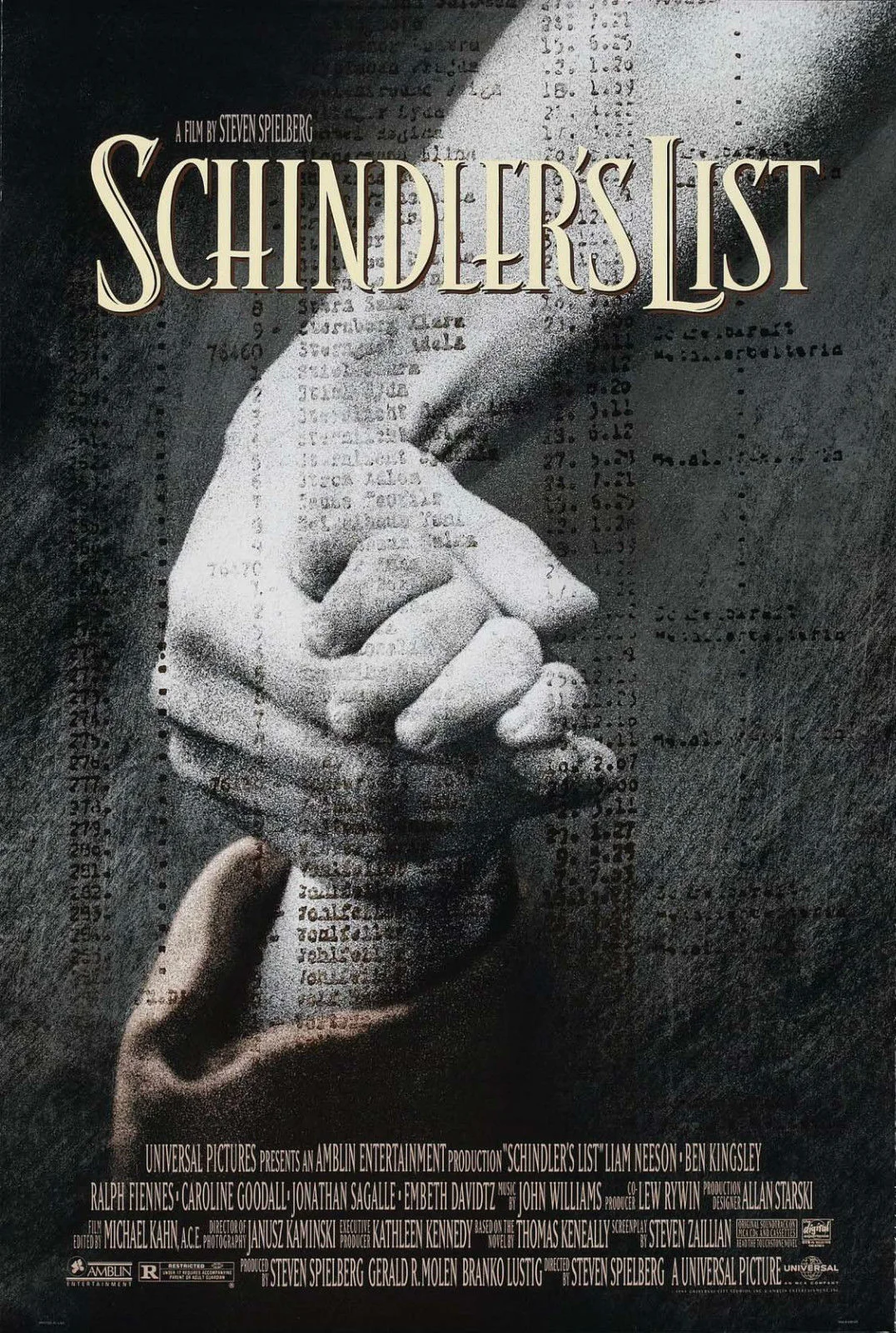 This is the best picture of the decade. It's what I see in books about the Holocaust: Nazi brutality in black
and white. Schindler's List is the stark truth of what happened in German-occupied Europe from 1933 to
1945. There are many powerful scenes that are beyond belief. Steven Spielberg should be praised for the singular
cinematic achievement.
This is the best picture of the decade. It's what I see in books about the Holocaust: Nazi brutality in black
and white. Schindler's List is the stark truth of what happened in German-occupied Europe from 1933 to
1945. There are many powerful scenes that are beyond belief. Steven Spielberg should be praised for the singular
cinematic achievement.
 The cinematography is stunning, even by 1920's standards. So many emotions are felt for the characters. It's
understandable as to why the Nazis wanted to burn the book because of its defeating message that war is useless
and trivially pointless. All Quiet on the Western Front carries so much relevance, no matter at what
period of time it's seen in.
The cinematography is stunning, even by 1920's standards. So many emotions are felt for the characters. It's
understandable as to why the Nazis wanted to burn the book because of its defeating message that war is useless
and trivially pointless. All Quiet on the Western Front carries so much relevance, no matter at what
period of time it's seen in.
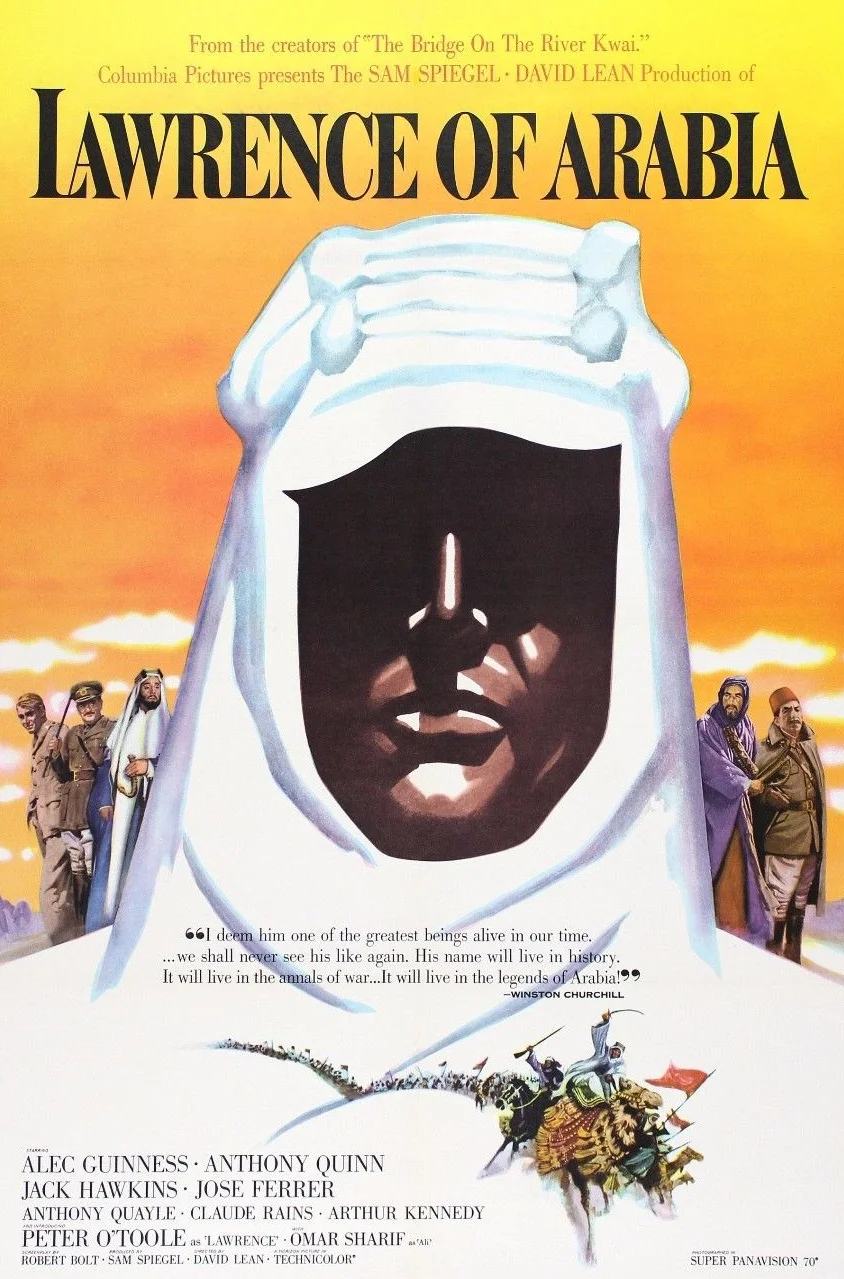 A magnificently made masterpiece, it's David Lean's magnum opus. One of the most remarkable jobs he did with his
characters is not only to make them larger than life but also mysterious in terms of their ambitions and
desires. Thanks to Freddie Young's spellbinding cinematography, it's impossible to deny the power of the
desert that Lawrence of Arabia brings to the screen.
A magnificently made masterpiece, it's David Lean's magnum opus. One of the most remarkable jobs he did with his
characters is not only to make them larger than life but also mysterious in terms of their ambitions and
desires. Thanks to Freddie Young's spellbinding cinematography, it's impossible to deny the power of the
desert that Lawrence of Arabia brings to the screen.
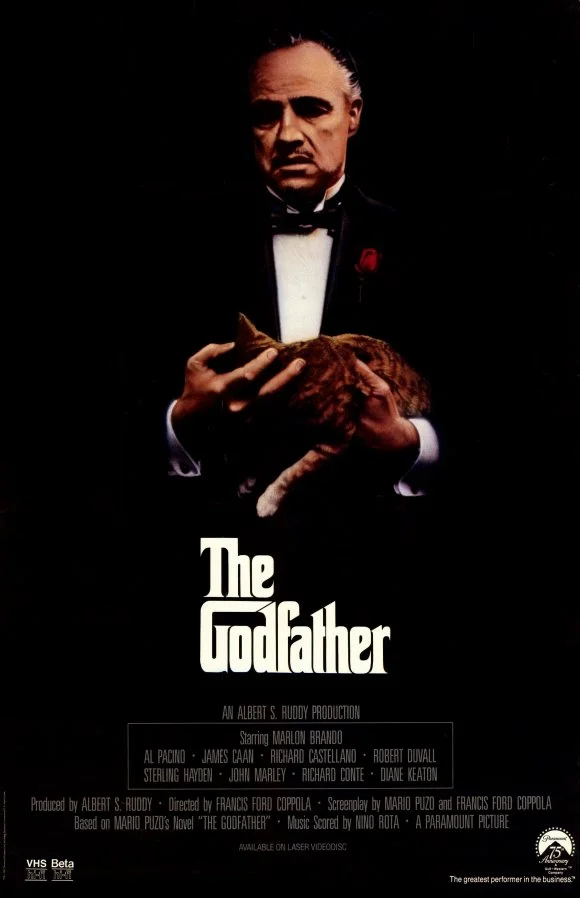 The Godfather is a masterpiece with many big-time actors. There are numerous classic scenes, lines,
and movie moments that make the whole thing unforgettable. Gordon Willis' cinematography is fantastic throughout,
and that's why he has the moniker: Prince of Darkness. Marlon Brando's Don Corleone is the most imitated
character of all time, and it's the beginning of Al Pacino's screen greatness.
The Godfather is a masterpiece with many big-time actors. There are numerous classic scenes, lines,
and movie moments that make the whole thing unforgettable. Gordon Willis' cinematography is fantastic throughout,
and that's why he has the moniker: Prince of Darkness. Marlon Brando's Don Corleone is the most imitated
character of all time, and it's the beginning of Al Pacino's screen greatness.
 When Citizen Kane was released, Orson Welles reached the top of the mountain and became an immortal
god of cinema. Afterwards, he had nowhere to go but down...down he went hard. It puts everything about cinema
into perspective. An important film for numerous reasons, it's one of the best-shot works of art in terms of
storytelling through the power of cinematography. The controversy behind the scenes is the reason for its
mammoth reputation which makes the whole thing fascinating.
When Citizen Kane was released, Orson Welles reached the top of the mountain and became an immortal
god of cinema. Afterwards, he had nowhere to go but down...down he went hard. It puts everything about cinema
into perspective. An important film for numerous reasons, it's one of the best-shot works of art in terms of
storytelling through the power of cinematography. The controversy behind the scenes is the reason for its
mammoth reputation which makes the whole thing fascinating.
 Just like the Nobel Prize-winning book by John Steinbeck, The Grapes of Wrath is a historically important
picture that depicts the great migration caused by the Dust Bowl during the 30's, the class struggles between
the haves and the have-nots, and workers' rights. It's just powerful stuff along with the superlative
performances by Henry Fonda, Jane Darwell, and John Carradine.
Just like the Nobel Prize-winning book by John Steinbeck, The Grapes of Wrath is a historically important
picture that depicts the great migration caused by the Dust Bowl during the 30's, the class struggles between
the haves and the have-nots, and workers' rights. It's just powerful stuff along with the superlative
performances by Henry Fonda, Jane Darwell, and John Carradine.
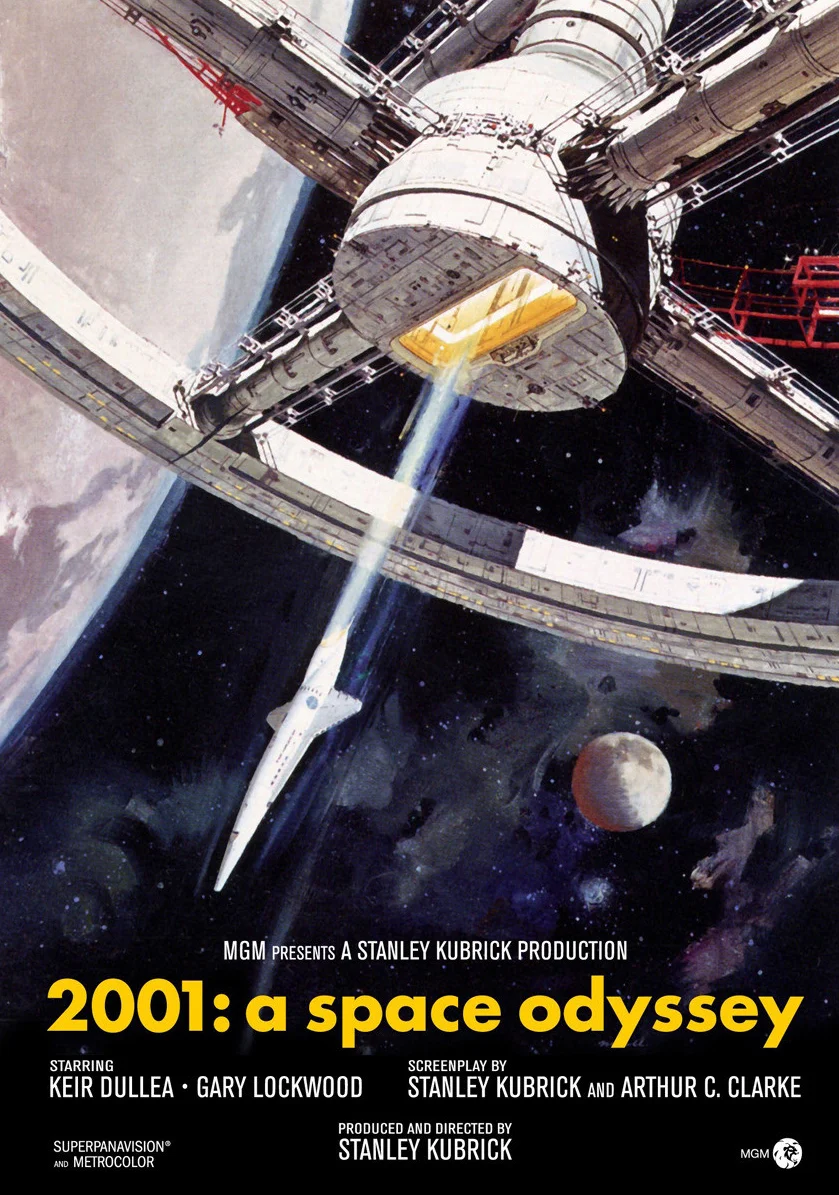 Birth. Evolution. Mankind. Age. Exploration. Universe. Death. 2001: A Space Odyssey...you'll never see
anything like it, a brilliant visionary picture that's abstract, beautiful, complicated, and simple all at
once. Considering the year the movie was made in—and that's not 1968—but 1963 which is five
years of work to make the vision possible.
Birth. Evolution. Mankind. Age. Exploration. Universe. Death. 2001: A Space Odyssey...you'll never see
anything like it, a brilliant visionary picture that's abstract, beautiful, complicated, and simple all at
once. Considering the year the movie was made in—and that's not 1968—but 1963 which is five
years of work to make the vision possible.
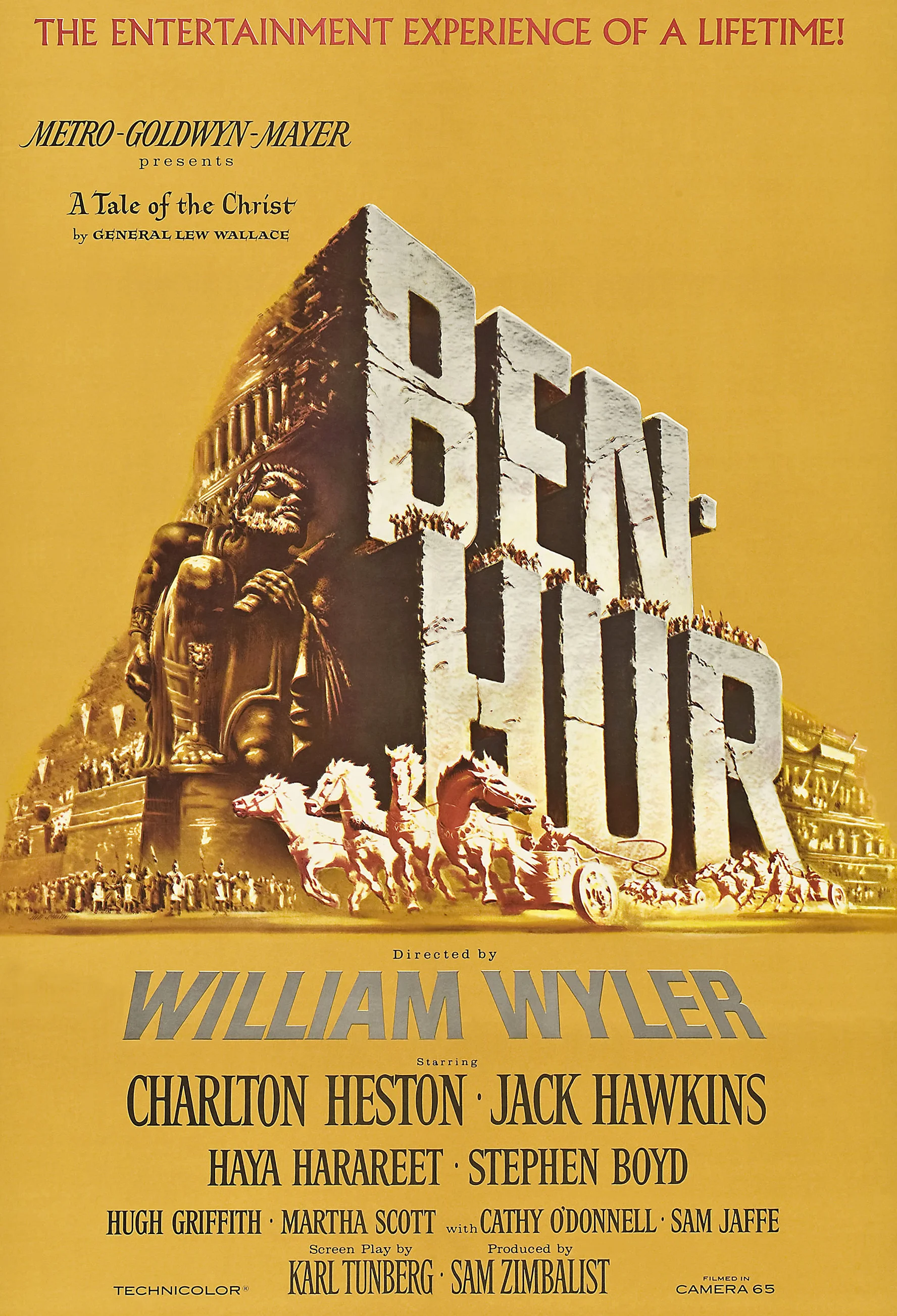 The epic of all epics, it's a big-budget picture amassing over 15,000 extras. Rome has never been so
glorious-looking since the fall of the empire. The greatest and the most breathtaking climax comes during the
chariot race. That scene is the reason alone the epic remains an insurmountable work of cinema. Although it's
the highlight of Ben-Hur, the movie is much more than that which includes the rise of Jesus Christ.
The epic of all epics, it's a big-budget picture amassing over 15,000 extras. Rome has never been so
glorious-looking since the fall of the empire. The greatest and the most breathtaking climax comes during the
chariot race. That scene is the reason alone the epic remains an insurmountable work of cinema. Although it's
the highlight of Ben-Hur, the movie is much more than that which includes the rise of Jesus Christ.
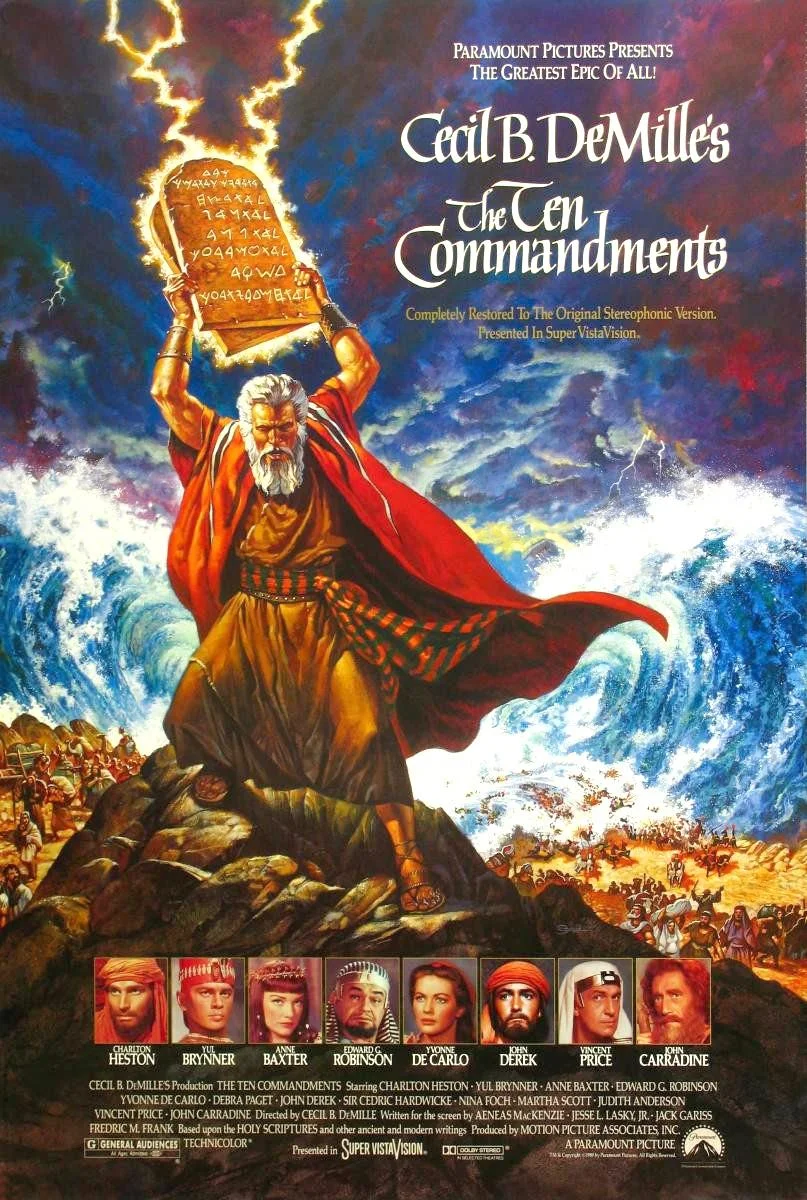 It's one of the finest movies made, a wondrous spectacle with outstanding hallmarks of what makes an epic. The
parting of the Red Sea by Moses is a sight to behold, the clincher for a lone Academy Award win in Special Effects
category, and it's still unbelievable for 1956. Charlton Heston will always be the King of Epics:
The Ten Commandments, Ben-Hur, and El Cid. Not to miss is the strong performance by Yul
Brynner.
It's one of the finest movies made, a wondrous spectacle with outstanding hallmarks of what makes an epic. The
parting of the Red Sea by Moses is a sight to behold, the clincher for a lone Academy Award win in Special Effects
category, and it's still unbelievable for 1956. Charlton Heston will always be the King of Epics:
The Ten Commandments, Ben-Hur, and El Cid. Not to miss is the strong performance by Yul
Brynner.
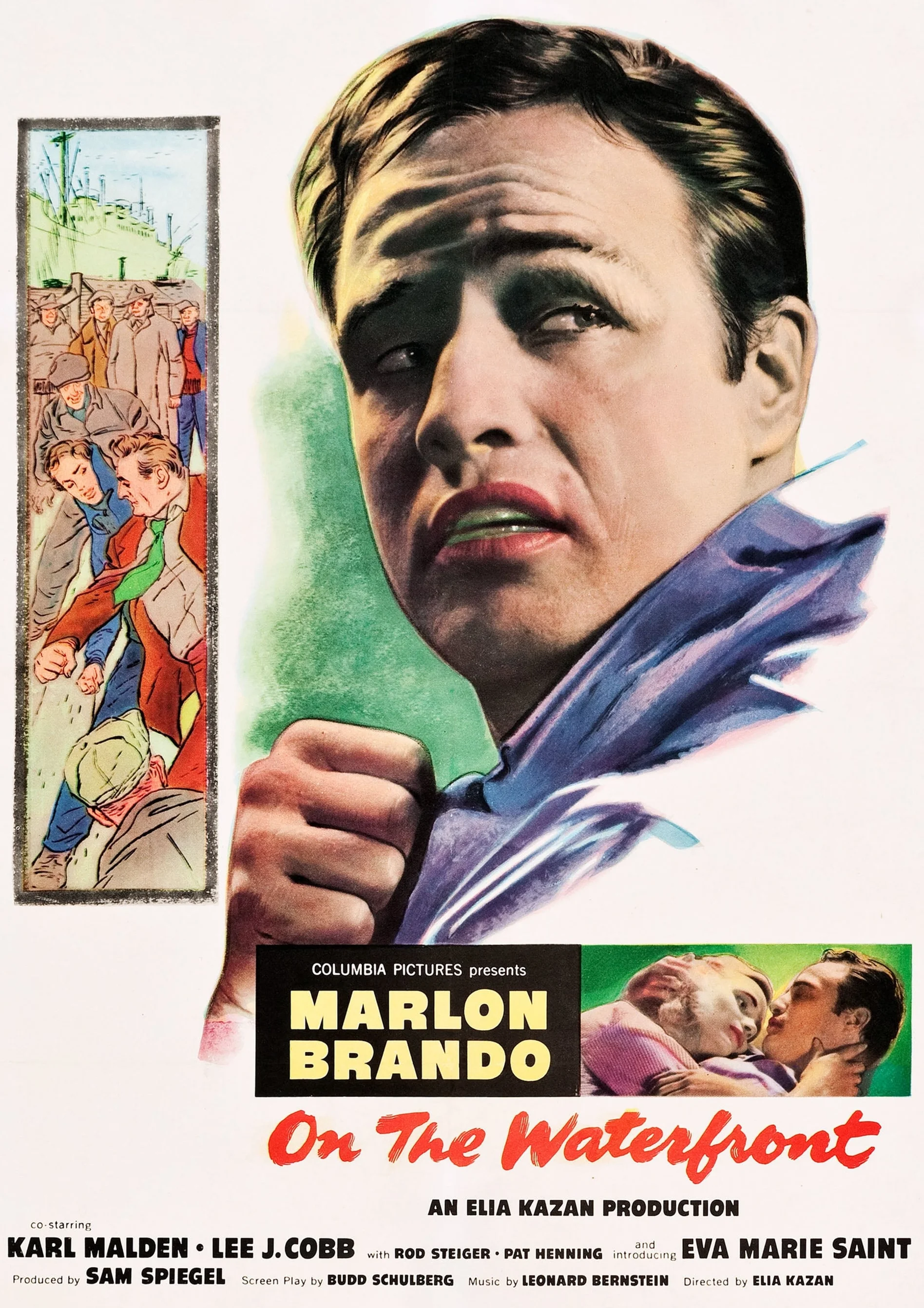 On the Waterfront is one of the most important, influential films made. The best and the greatest ever,
Marlon Brando is spectacular and is in a class of his own. Because of what he did, the landscape of acting had
been forever changed. Whenever I think of timeless movies with great performances, great scenes, and great lines,
On the Waterfront is among them.
On the Waterfront is one of the most important, influential films made. The best and the greatest ever,
Marlon Brando is spectacular and is in a class of his own. Because of what he did, the landscape of acting had
been forever changed. Whenever I think of timeless movies with great performances, great scenes, and great lines,
On the Waterfront is among them.
 If there's a definitive black American motion picture, it's this one. Starting out as a novel in 1976 by Alex
Haley about nine generations of African descendants, Roots was developed into a TV miniseries one year
later, and just about everybody in the country tuned in, setting viewership records. There's nothing like it.
If there's a definitive black American motion picture, it's this one. Starting out as a novel in 1976 by Alex
Haley about nine generations of African descendants, Roots was developed into a TV miniseries one year
later, and just about everybody in the country tuned in, setting viewership records. There's nothing like it.
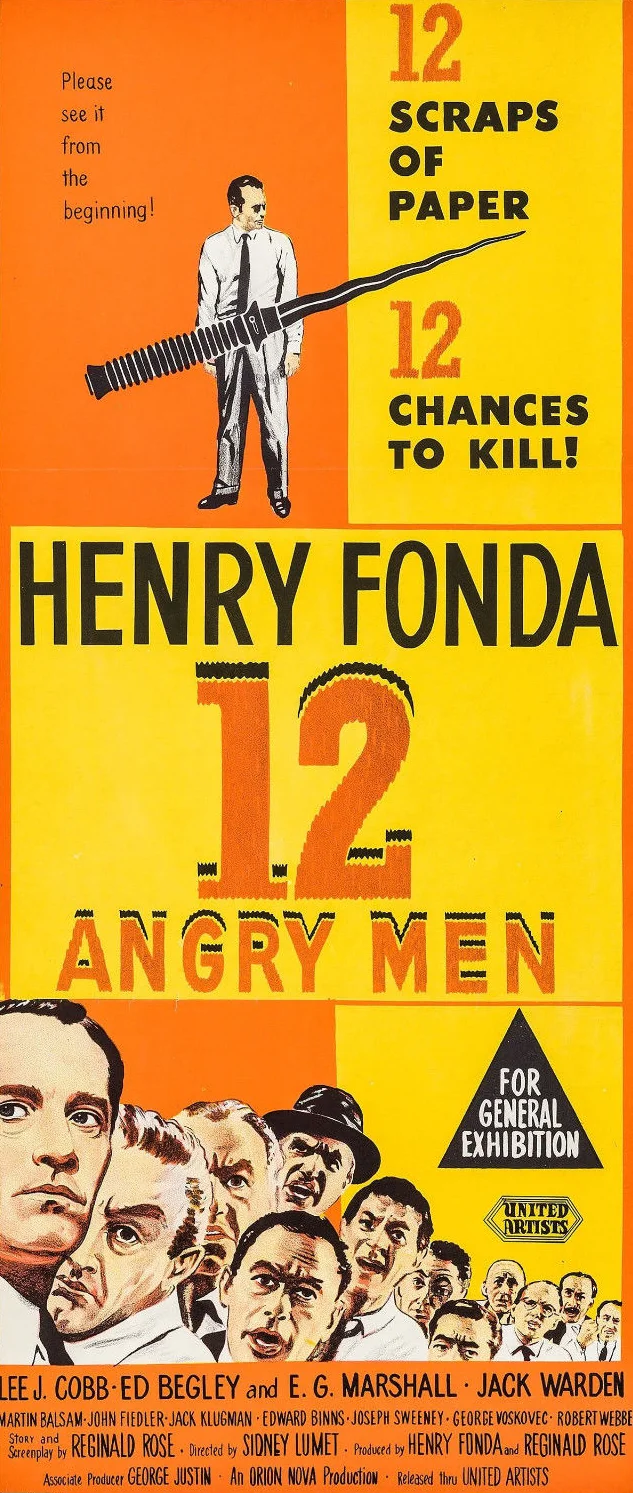 12 Angry Men is a brilliant film that's dependent on the script and performances. The best part is the
human aspect. Strangers come together and lay bare their flawed logical reasoning. The ending is powerful because
after what the jurors had accomplished as a group, they go their separate ways and never see each other again
for the rest of their lives. In fact, 12 Angry Men should be a required viewing for all Americans before
they're ready to be jurors.
12 Angry Men is a brilliant film that's dependent on the script and performances. The best part is the
human aspect. Strangers come together and lay bare their flawed logical reasoning. The ending is powerful because
after what the jurors had accomplished as a group, they go their separate ways and never see each other again
for the rest of their lives. In fact, 12 Angry Men should be a required viewing for all Americans before
they're ready to be jurors.
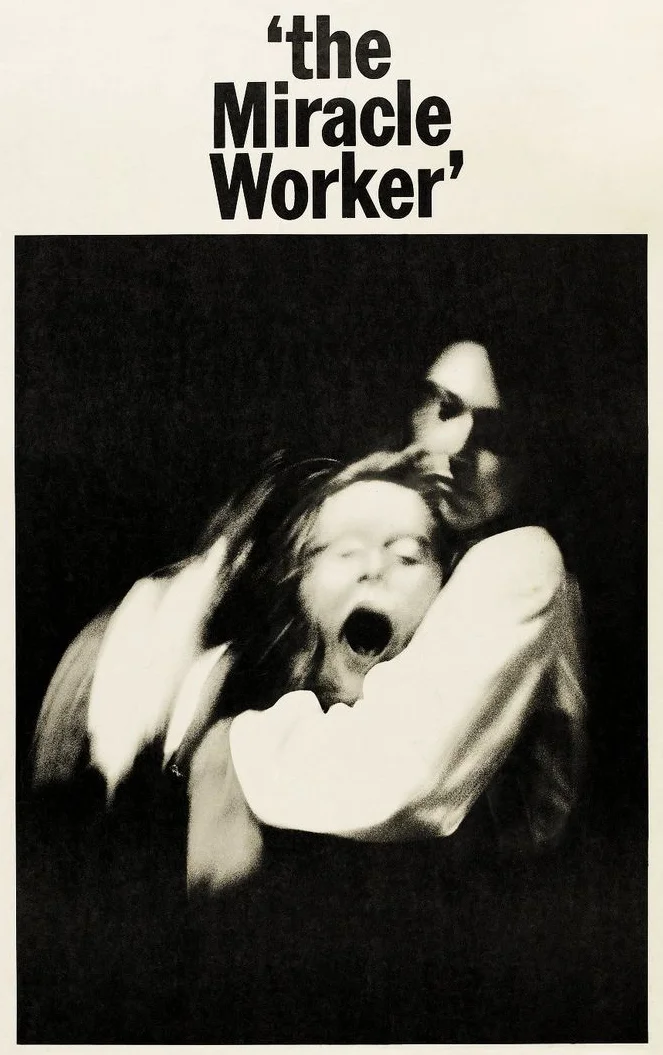 The Miracle Worker is a powerful, moving story about how Helen Keller was shown the light through language.
The Oscar wins for Patty Duke and Anne Bancroft are deserving, and the former's performance is in the top ten of
all time. It's impossible not to be moved by all of this.
The Miracle Worker is a powerful, moving story about how Helen Keller was shown the light through language.
The Oscar wins for Patty Duke and Anne Bancroft are deserving, and the former's performance is in the top ten of
all time. It's impossible not to be moved by all of this.
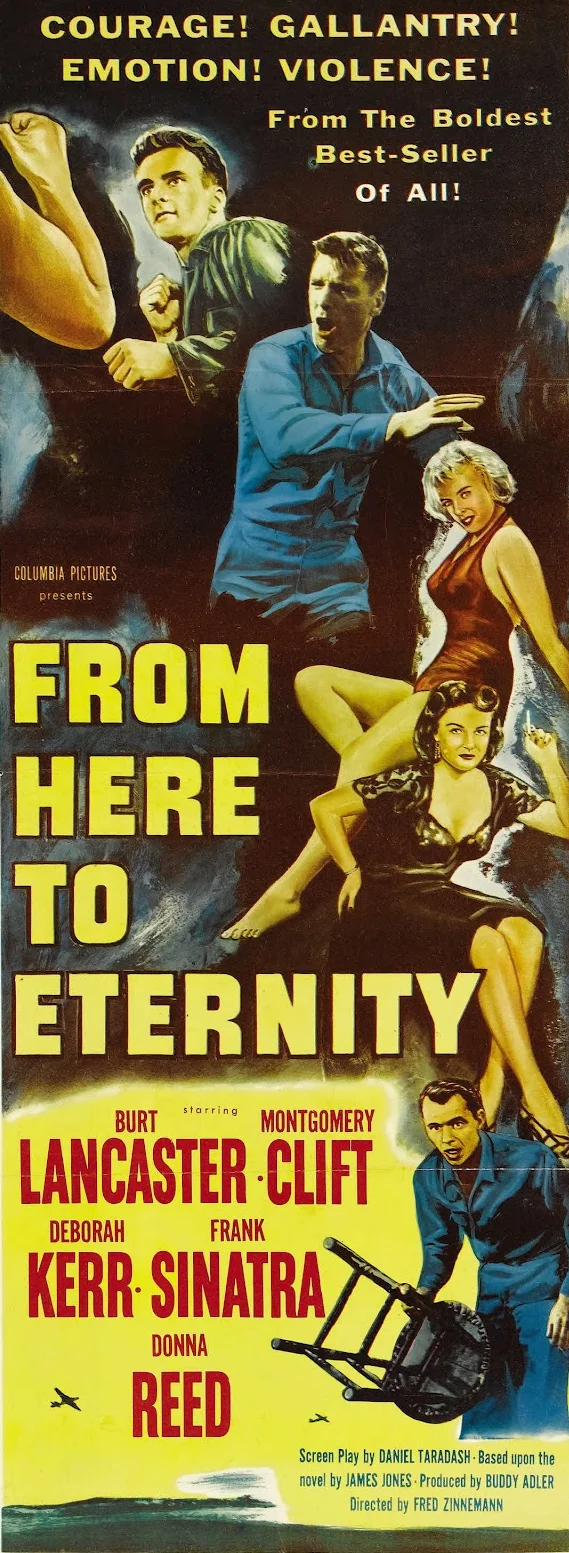 One of the most famous movie scenes of all time is when Burt Lancaster and Deborah Kerr embraced themselves on
the beach while being engulfed by the water. It's simply breathtaking. If that's all anybody can remember about
From Here to Eternity, then so be it. The performances, especially by Montgomery Clift, Burt Lancaster,
and Frank Sinatra, are unforgettable.
One of the most famous movie scenes of all time is when Burt Lancaster and Deborah Kerr embraced themselves on
the beach while being engulfed by the water. It's simply breathtaking. If that's all anybody can remember about
From Here to Eternity, then so be it. The performances, especially by Montgomery Clift, Burt Lancaster,
and Frank Sinatra, are unforgettable.
 To refuse to acknowledge Sunset Boulevard as a masterpiece is to commit a crime in film appreciation.
William Holden is superb, dashing, and handsome, but it's Gloria Swanson who steals the limelight in every scene.
Timeless and beautiful, she has brilliant lines and even more brilliant scenes.
To refuse to acknowledge Sunset Boulevard as a masterpiece is to commit a crime in film appreciation.
William Holden is superb, dashing, and handsome, but it's Gloria Swanson who steals the limelight in every scene.
Timeless and beautiful, she has brilliant lines and even more brilliant scenes.
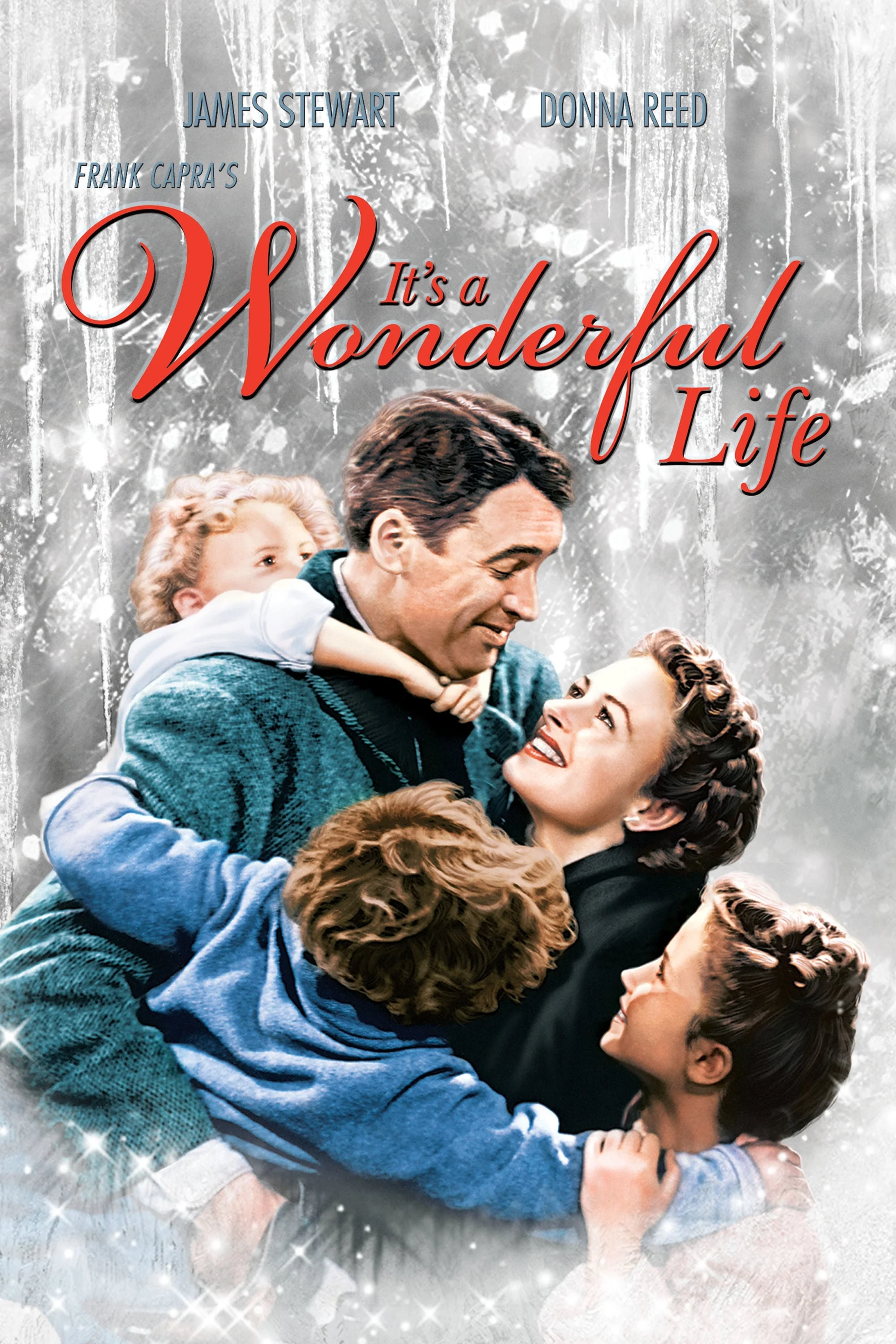 It's a Wonderful Life is the Christmas picture of them all. It also captures the human spirit. The last
twenty minutes is what transcends the film as a whole to another level, hence the repeated viewings. Any time
you're confronted by a person who wants to commit suicide, the best answer is telling him to watch
It's a Wonderful Life. This piece of advice will probably save his life, offering him a new perspective
of the world.
It's a Wonderful Life is the Christmas picture of them all. It also captures the human spirit. The last
twenty minutes is what transcends the film as a whole to another level, hence the repeated viewings. Any time
you're confronted by a person who wants to commit suicide, the best answer is telling him to watch
It's a Wonderful Life. This piece of advice will probably save his life, offering him a new perspective
of the world.
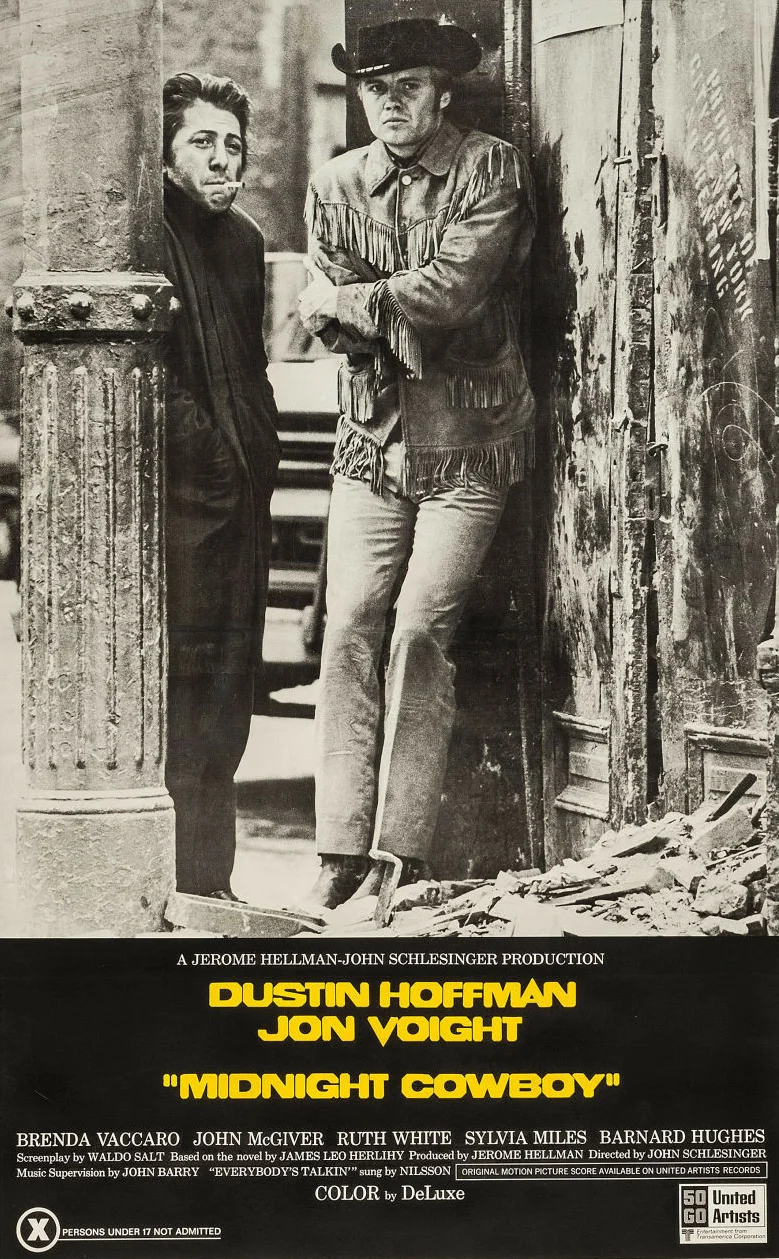 Jon Voight and Dustin Hoffman give the best performances of their careers. They'll be forever remembered for
this film. Midnight Cowboy is a study of human nature: the hopes, the broken dreams, the disillusionment,
the desperation, the suffering, the loneliness, and the loss of innocence. They're all brilliantly read on Jon
Voight's face. The "I'm walkin' here! I'm walkin' here!" scene is priceless.
Jon Voight and Dustin Hoffman give the best performances of their careers. They'll be forever remembered for
this film. Midnight Cowboy is a study of human nature: the hopes, the broken dreams, the disillusionment,
the desperation, the suffering, the loneliness, and the loss of innocence. They're all brilliantly read on Jon
Voight's face. The "I'm walkin' here! I'm walkin' here!" scene is priceless.
 Out is the Old Hollywood, in is the New Hollywood which happens all in one fell swoop through two hours of
A Streetcar Named Desire. Pitting Vivien Leigh's classical acting against Marlon Brando's realism, a
change of the guard has taken place. The battle of these two styles is unlike anything ever seen in cinema
history or since then, making everybody forget this film is supposed to be a theatrical play.
Out is the Old Hollywood, in is the New Hollywood which happens all in one fell swoop through two hours of
A Streetcar Named Desire. Pitting Vivien Leigh's classical acting against Marlon Brando's realism, a
change of the guard has taken place. The battle of these two styles is unlike anything ever seen in cinema
history or since then, making everybody forget this film is supposed to be a theatrical play.
 Chinatown is the quintessential neo-noir picture. Everything about the film is meticulously
crafted. It starts with Robert Towne's screenplay which is followed up with the exquisite cinematography and
an unparalleled cast of Jack Nicholson, Faye Dunaway, and John Huston. The final line "Forget it, Jake. It's
Chinatown" is unforgettable.
Chinatown is the quintessential neo-noir picture. Everything about the film is meticulously
crafted. It starts with Robert Towne's screenplay which is followed up with the exquisite cinematography and
an unparalleled cast of Jack Nicholson, Faye Dunaway, and John Huston. The final line "Forget it, Jake. It's
Chinatown" is unforgettable.
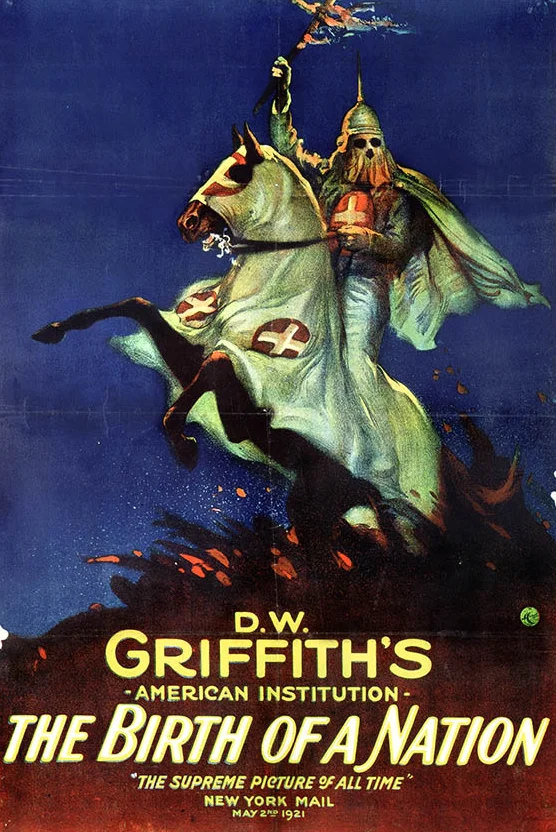 After seeing The Birth of a Nation, Woodrow Wilson famously said, "It is like writing history with
lightning, and my only regret is that it is all so terribly true." Whether he really did or not is besides the
point. The film's place in the annals of cinema is undeniable. It forever changed how movies were made. Hence,
D.W. Griffith is the father of film.
After seeing The Birth of a Nation, Woodrow Wilson famously said, "It is like writing history with
lightning, and my only regret is that it is all so terribly true." Whether he really did or not is besides the
point. The film's place in the annals of cinema is undeniable. It forever changed how movies were made. Hence,
D.W. Griffith is the father of film.
 The Manchurian Candidate is a brilliantly made political thriller picture with the most complex editing
imaginable. Now, remember the book was written in 1959 and the film was released in 1962 which was more than one
year before JFK's assassination. The President knew all about it and gave the filmmakers his expressed approval
to go ahead with the project. Pretty chilling stuff.
The Manchurian Candidate is a brilliantly made political thriller picture with the most complex editing
imaginable. Now, remember the book was written in 1959 and the film was released in 1962 which was more than one
year before JFK's assassination. The President knew all about it and gave the filmmakers his expressed approval
to go ahead with the project. Pretty chilling stuff.
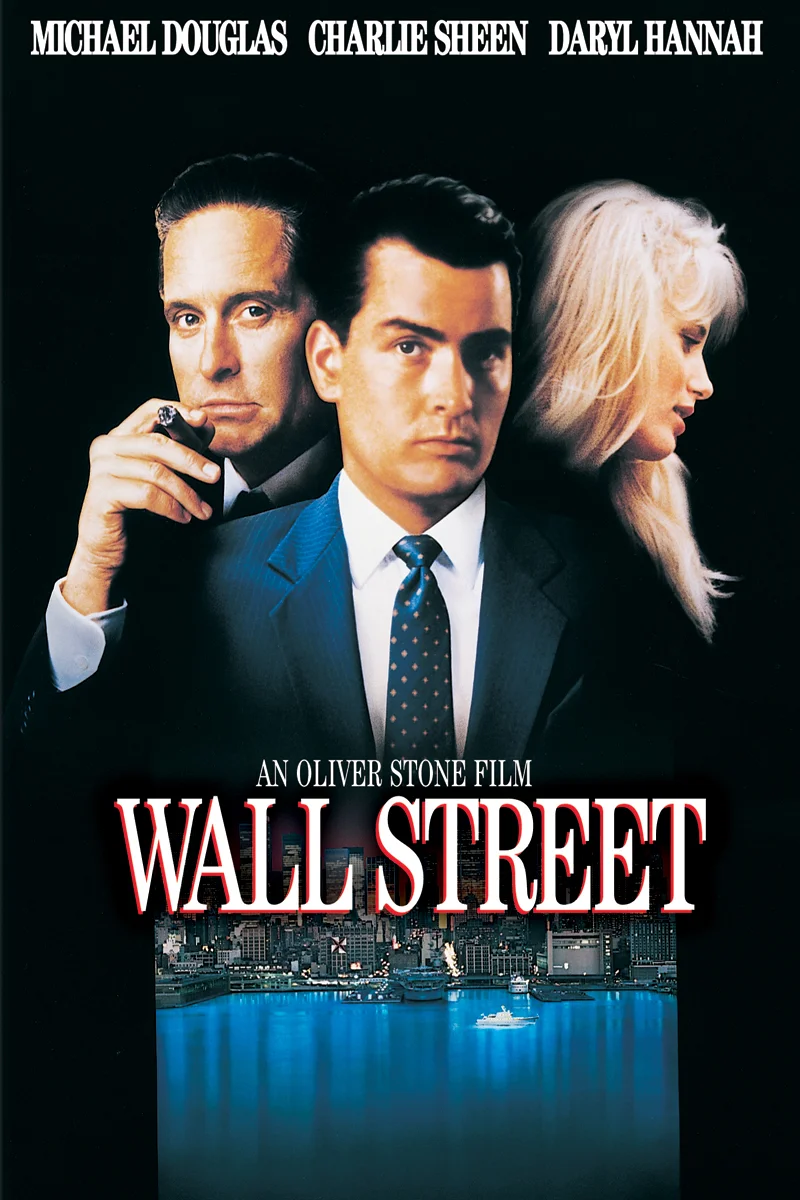 Michael Douglas is chilling as Gordon Gekko and steals every scene. The most famous line of Wall Street is:
"Greed, for lack of a better word, is good." It's also full of Gekkoisms such as "The most valuable commodity I
know of is information," "Ever wonder why fund managers can't beat the S&P 500? 'Cause they're sheep, and sheep
get slaughtered," and "I don't throw darts at a board. I bet on sure things. Read Sun-tzu, The Art of War.
Every battle is won before it's ever fought."
Michael Douglas is chilling as Gordon Gekko and steals every scene. The most famous line of Wall Street is:
"Greed, for lack of a better word, is good." It's also full of Gekkoisms such as "The most valuable commodity I
know of is information," "Ever wonder why fund managers can't beat the S&P 500? 'Cause they're sheep, and sheep
get slaughtered," and "I don't throw darts at a board. I bet on sure things. Read Sun-tzu, The Art of War.
Every battle is won before it's ever fought."
 They don't make movies like E.T. the Extra-Terrestrial anymore. The 80's was the decade of E.T. with the
dolls, Reese's Pieces, Atari game cartridges, and VHS tapes being all over the place. It was impossible to escape
them. The story is unique and can easily hit all people of any age. Two most famous moments are
when Elliott and E.T. start to fly through the air on the BMX bike and be in front of the moon.
They don't make movies like E.T. the Extra-Terrestrial anymore. The 80's was the decade of E.T. with the
dolls, Reese's Pieces, Atari game cartridges, and VHS tapes being all over the place. It was impossible to escape
them. The story is unique and can easily hit all people of any age. Two most famous moments are
when Elliott and E.T. start to fly through the air on the BMX bike and be in front of the moon.
 Very few films have the distinction of being described as one of the most beautiful made, and
Chariots of Fire, without doubt, is such that. The opening scene of runners on the beach is absolutely
powerful and represents what the movie is all about: the celebration of human spirit. Honor and virtue are
routinely stressed and backed by actions.
Very few films have the distinction of being described as one of the most beautiful made, and
Chariots of Fire, without doubt, is such that. The opening scene of runners on the beach is absolutely
powerful and represents what the movie is all about: the celebration of human spirit. Honor and virtue are
routinely stressed and backed by actions.
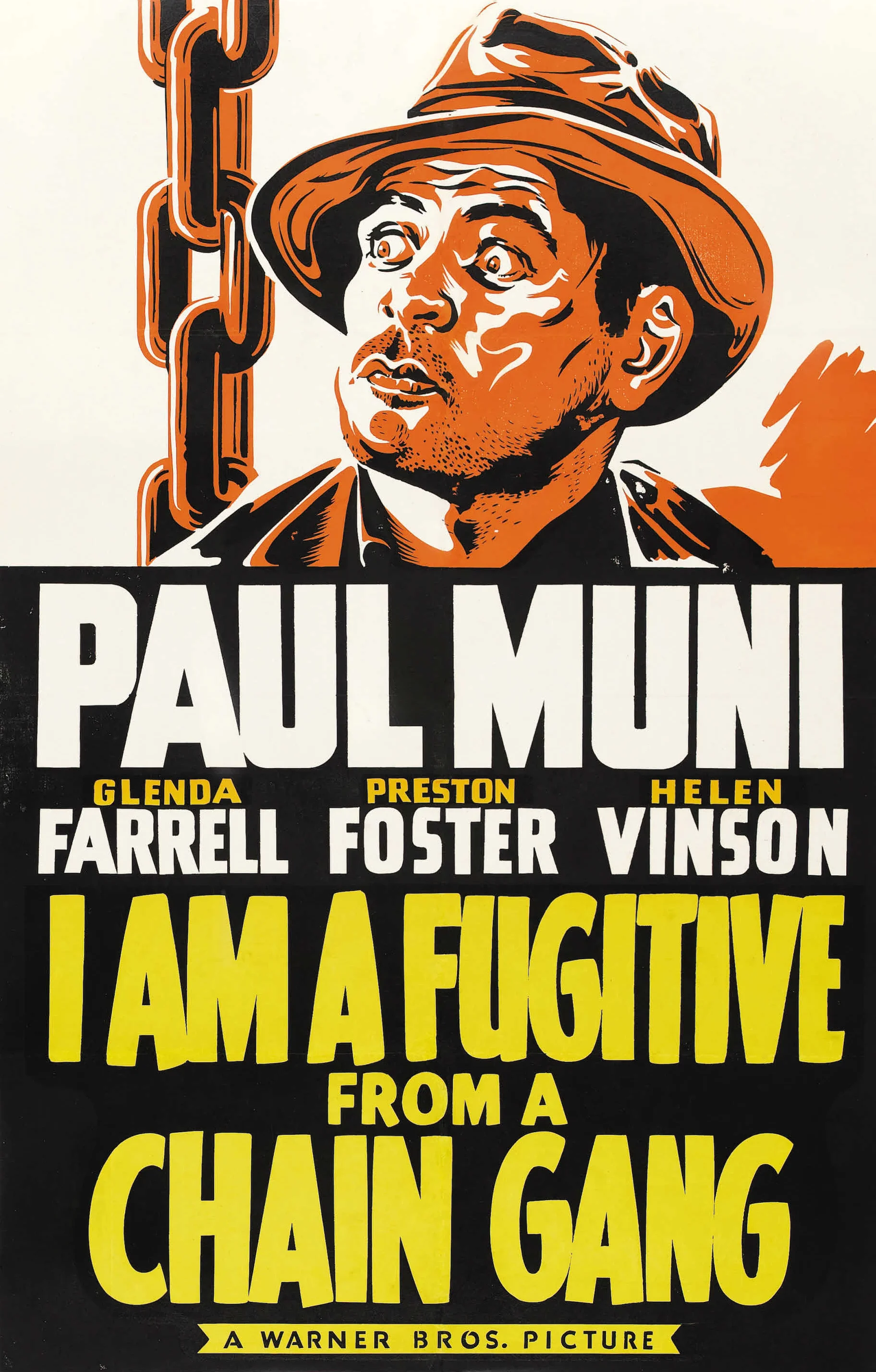 I Am a Fugitive from a Chain Gang is a heartfelt story about a decent man, down on his luck, who dreams
of being a civil engineer so he can build roads and bridges. The on-screen portrayal of the chain gang in the
Deep South was enough for the public to denounce the practice, and forever gone that was by 1955. Paul Muni's
performance is more than outstanding, and the haunting ending is timeless.
I Am a Fugitive from a Chain Gang is a heartfelt story about a decent man, down on his luck, who dreams
of being a civil engineer so he can build roads and bridges. The on-screen portrayal of the chain gang in the
Deep South was enough for the public to denounce the practice, and forever gone that was by 1955. Paul Muni's
performance is more than outstanding, and the haunting ending is timeless.
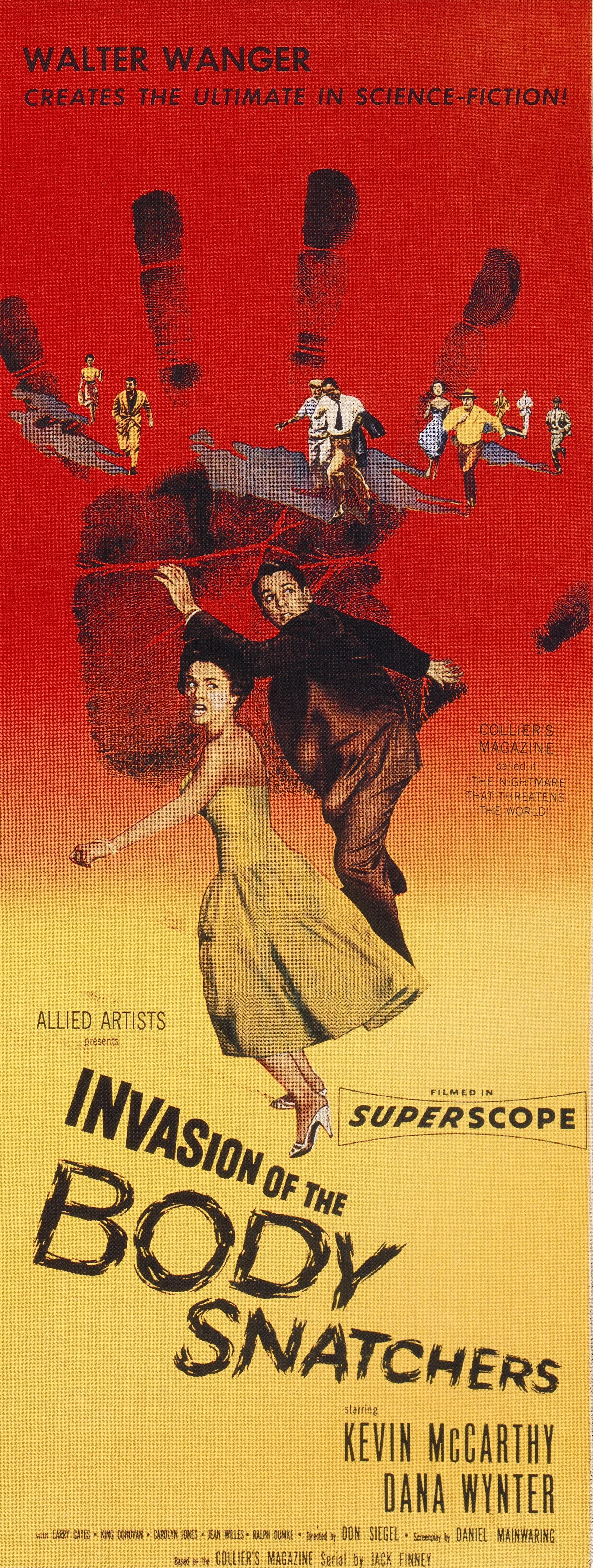 Anyone asking me this question, "Can you tell me the greatest horror movie ever made?", my answer will always be
Invasion of the Body Snatchers. It's bar none the best I've ever seen. There's no monster, blood, gore, or
violence whatsoever. It's just the beautiful use of subtlety to create frightening scenes.
Anyone asking me this question, "Can you tell me the greatest horror movie ever made?", my answer will always be
Invasion of the Body Snatchers. It's bar none the best I've ever seen. There's no monster, blood, gore, or
violence whatsoever. It's just the beautiful use of subtlety to create frightening scenes.
 Dith Pran, the subject of the film, was the first to coin the term "killing fields" to describe the Cambodian
genocide. Sydney Schanberg received the Pulitzer Prize for his wartime reporting there. A first-time
nonprofessional actor, Dr. Haing S. Ngor lived through the experience. Therefore, The Killing Fields
is a powerful film of what it's like to be in a war zone.
Dith Pran, the subject of the film, was the first to coin the term "killing fields" to describe the Cambodian
genocide. Sydney Schanberg received the Pulitzer Prize for his wartime reporting there. A first-time
nonprofessional actor, Dr. Haing S. Ngor lived through the experience. Therefore, The Killing Fields
is a powerful film of what it's like to be in a war zone.
 The most definitive Hitchcock picture made, The 39 Steps is the gold standard that many espionage
pictures have failed to match. Robert Donat has never been better, and Lucie Mannheim deserves credit for
setting the tone. The formula of Alfred Hitchcock's many films can be readily found in The 39 Steps.
The most definitive Hitchcock picture made, The 39 Steps is the gold standard that many espionage
pictures have failed to match. Robert Donat has never been better, and Lucie Mannheim deserves credit for
setting the tone. The formula of Alfred Hitchcock's many films can be readily found in The 39 Steps.
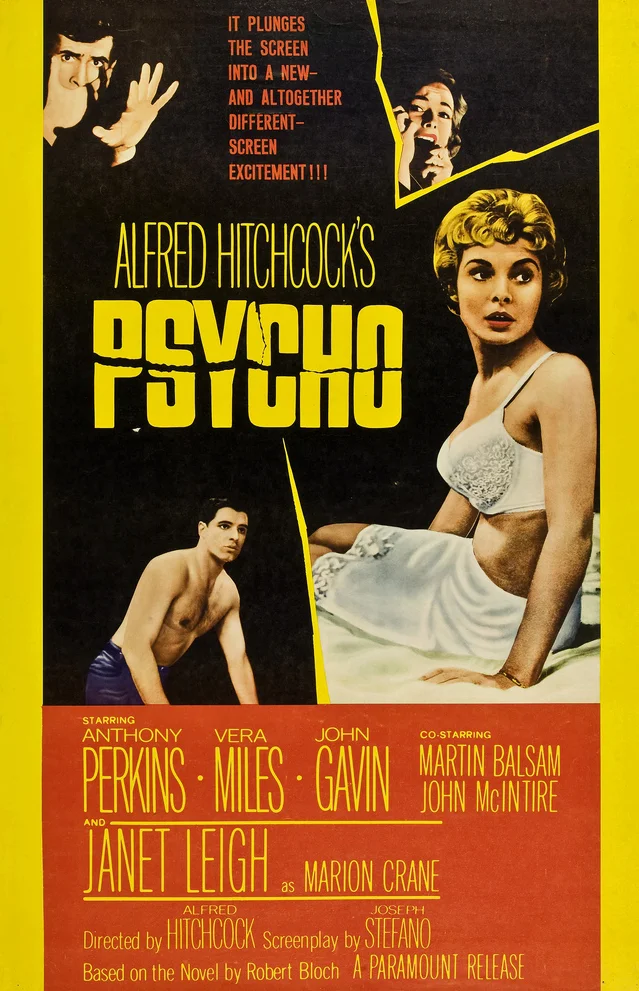 This psycho-sexual thriller went on to become the game changer of the slasher genre. Taking a shower would
never be the same again. Poor Marion Crane, she was the principal character for forty-eight minutes into the
film and, all of a sudden, got bumped off in one of the greatest and most shocking scenes in cinema history.
There's no actor who played a more famous villain than Anthony Perkins as Norman Bates. Alfred Hitchcock was
truly the Master of Suspense.
This psycho-sexual thriller went on to become the game changer of the slasher genre. Taking a shower would
never be the same again. Poor Marion Crane, she was the principal character for forty-eight minutes into the
film and, all of a sudden, got bumped off in one of the greatest and most shocking scenes in cinema history.
There's no actor who played a more famous villain than Anthony Perkins as Norman Bates. Alfred Hitchcock was
truly the Master of Suspense.
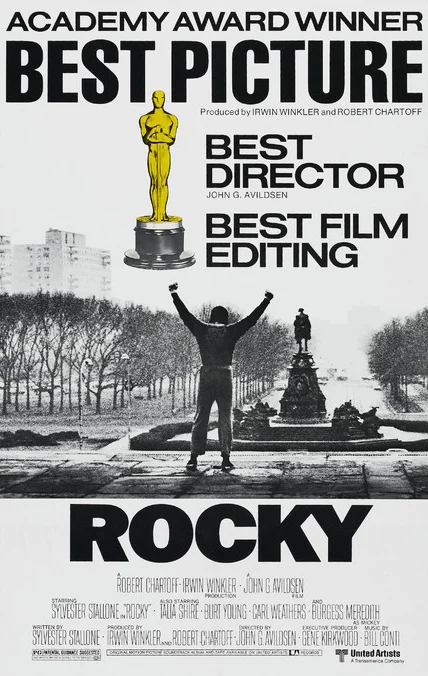 When people talk about the power of cinema, the best example is Rocky's training montage which is
uplifting, powerful, and unforgettable. Not just an outstanding boxing film, it also has the romance of a
lifetime with an all-time great ending. Terrific acting and direction transcend Rocky into a moving
motion picture for all people.
When people talk about the power of cinema, the best example is Rocky's training montage which is
uplifting, powerful, and unforgettable. Not just an outstanding boxing film, it also has the romance of a
lifetime with an all-time great ending. Terrific acting and direction transcend Rocky into a moving
motion picture for all people.
 Vertigo is a technically, visually, psychologically, and brilliantly crafted neo-noir. All of the
elements including acting, screenplay, in/exterior sets, fashion, sound, score, and cinematography come
together so well that it's a rare achievement. It exemplfies what a legendary director Alfred Hitchcock was
and why his movies are constantly revered to this day. There's something about them that remains timeless.
Vertigo is a technically, visually, psychologically, and brilliantly crafted neo-noir. All of the
elements including acting, screenplay, in/exterior sets, fashion, sound, score, and cinematography come
together so well that it's a rare achievement. It exemplfies what a legendary director Alfred Hitchcock was
and why his movies are constantly revered to this day. There's something about them that remains timeless.
 This is the grandfather of the film noir genre. Humphrey Bogart will always be iconic as Sam Spade,
the anti-hero private dick everybody imagines when they read the pulp detective stories. The cinematography is
top-notch, the script is marvelously done, and the mood can't be any more noirish. It's "the stuff that
dreams are made of."
This is the grandfather of the film noir genre. Humphrey Bogart will always be iconic as Sam Spade,
the anti-hero private dick everybody imagines when they read the pulp detective stories. The cinematography is
top-notch, the script is marvelously done, and the mood can't be any more noirish. It's "the stuff that
dreams are made of."
 "Madness. Madness!" The exclamation at the end says it all about The Bridge on the River Kwai, a
thrilling WWII picture with William Holden and Alec Guinness at their finest. Against them is the massive
bridge that overshadows everything and therefore must be brought down.
"Madness. Madness!" The exclamation at the end says it all about The Bridge on the River Kwai, a
thrilling WWII picture with William Holden and Alec Guinness at their finest. Against them is the massive
bridge that overshadows everything and therefore must be brought down.
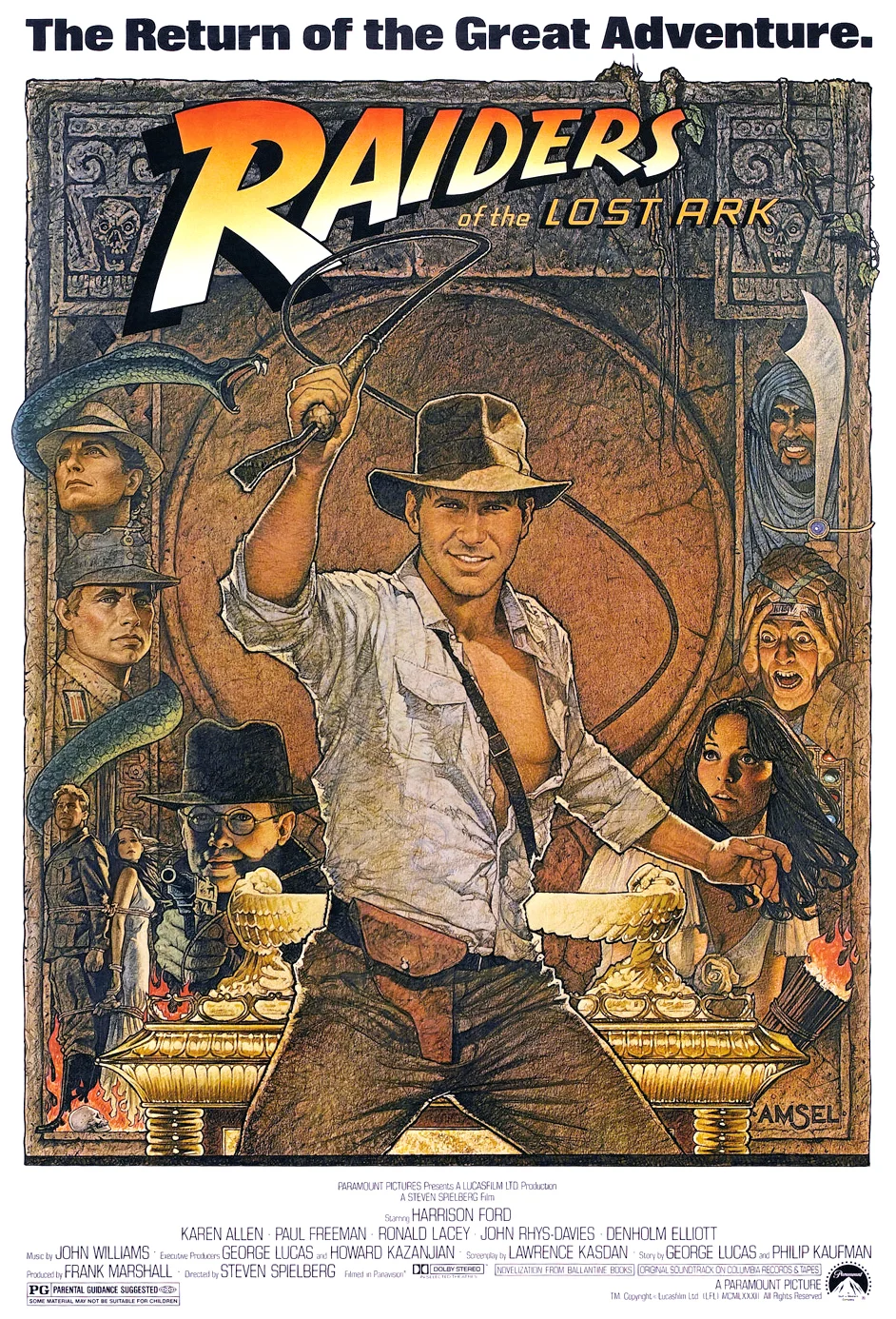 Nothing gets anyone going at the beginning than it does in Raiders of the Lost Ark when Indiana Jones
has his bullwhip ready to get rid of the gun before he's faced with the most devilish booby traps inside the
cave that's deep in the South America jungles. A must-see for people of all ages, it's what movies should be about.
Nothing gets anyone going at the beginning than it does in Raiders of the Lost Ark when Indiana Jones
has his bullwhip ready to get rid of the gun before he's faced with the most devilish booby traps inside the
cave that's deep in the South America jungles. A must-see for people of all ages, it's what movies should be about.
 Is The Big Country the Citizen Kane of Western films? Absolutely yes. A favorite of U.S. President
Dwight D. Eisenhower who gave the movie four consecutive showings at the White House, The Big Country
is so good that you won't be able to find more than a few that pack many lessons in one film.
Is The Big Country the Citizen Kane of Western films? Absolutely yes. A favorite of U.S. President
Dwight D. Eisenhower who gave the movie four consecutive showings at the White House, The Big Country
is so good that you won't be able to find more than a few that pack many lessons in one film.
 Some have said Amadeus is boring. Some have said Amadeus is too long. And some have said
Amadeus is nothing more than the music. But they all miss out the masterpiece in Amadeus. It's
unbelievable watching F. Murray Abraham and Tom Hulce perform at their absolute best, and they'll be remembered
forever for this film. The writing is first-rate. So are the interior set decoration, costumes, and cinematography.
Some have said Amadeus is boring. Some have said Amadeus is too long. And some have said
Amadeus is nothing more than the music. But they all miss out the masterpiece in Amadeus. It's
unbelievable watching F. Murray Abraham and Tom Hulce perform at their absolute best, and they'll be remembered
forever for this film. The writing is first-rate. So are the interior set decoration, costumes, and cinematography.
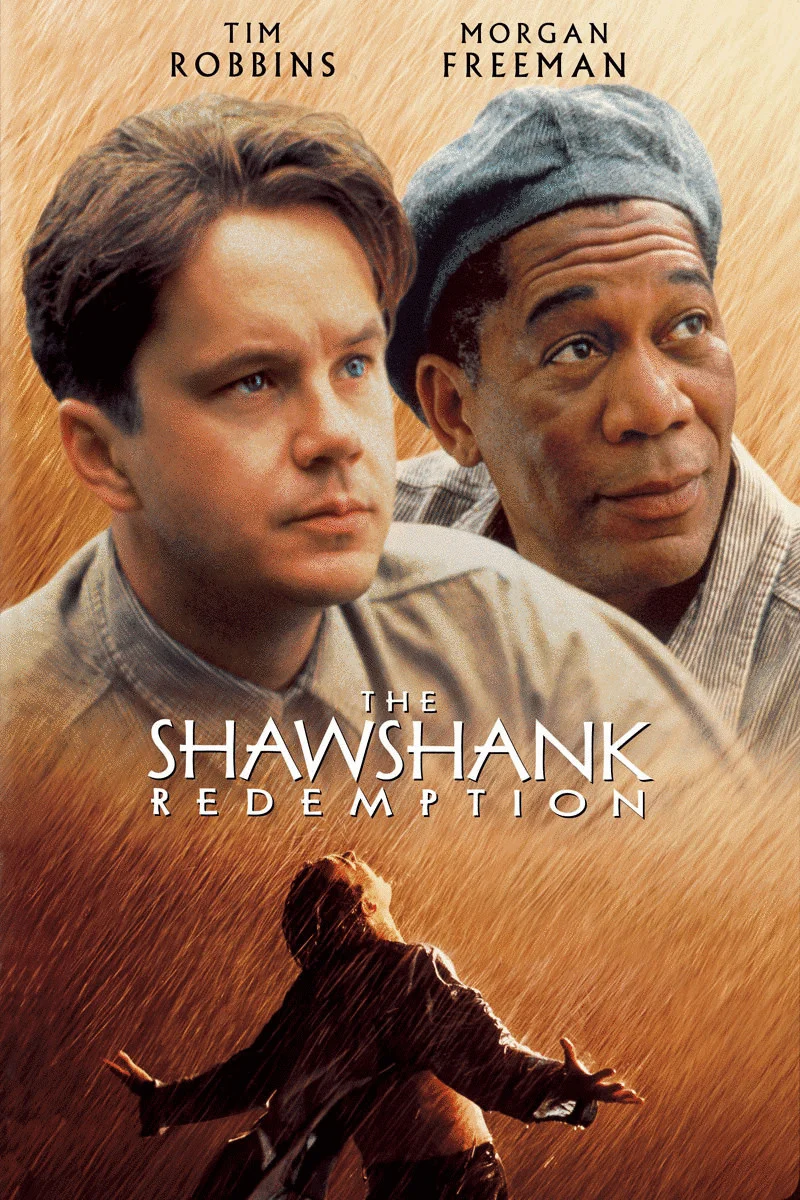 Benefitting from Frank Darabont's well-written screenplay and powerful direction, Tim Robbins' and Morgan
Freeman's performances help lift the film off the ground and let it fly like the human spirit. If anything,
it's the Red's voice-over narration that makes The Shawshank Redemption so good. Roger Deakins'
cinematography gives the film a special feel as it enters the classic territory.
Benefitting from Frank Darabont's well-written screenplay and powerful direction, Tim Robbins' and Morgan
Freeman's performances help lift the film off the ground and let it fly like the human spirit. If anything,
it's the Red's voice-over narration that makes The Shawshank Redemption so good. Roger Deakins'
cinematography gives the film a special feel as it enters the classic territory.
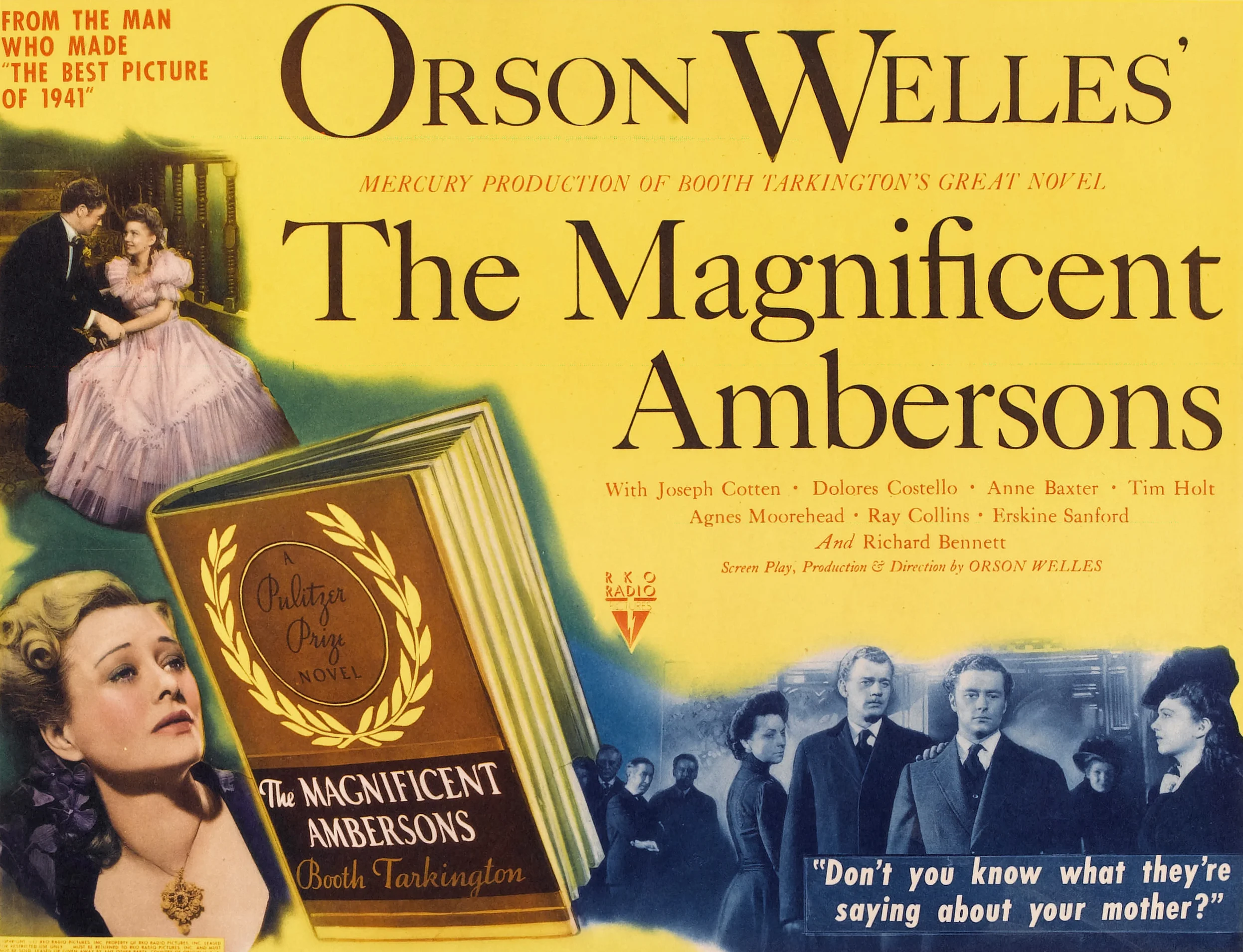 If you can't get enough of Citizen Kane, this one promises you more of the same. Written by Orson Welles
that's adapted from Booth Tarkington's novel, the story of The Magnificent Ambersons is sweeping,
innovative, and captivating which is coupled with a wonderful raconteur style. He was the master of advanced,
complicated scenes.
If you can't get enough of Citizen Kane, this one promises you more of the same. Written by Orson Welles
that's adapted from Booth Tarkington's novel, the story of The Magnificent Ambersons is sweeping,
innovative, and captivating which is coupled with a wonderful raconteur style. He was the master of advanced,
complicated scenes.
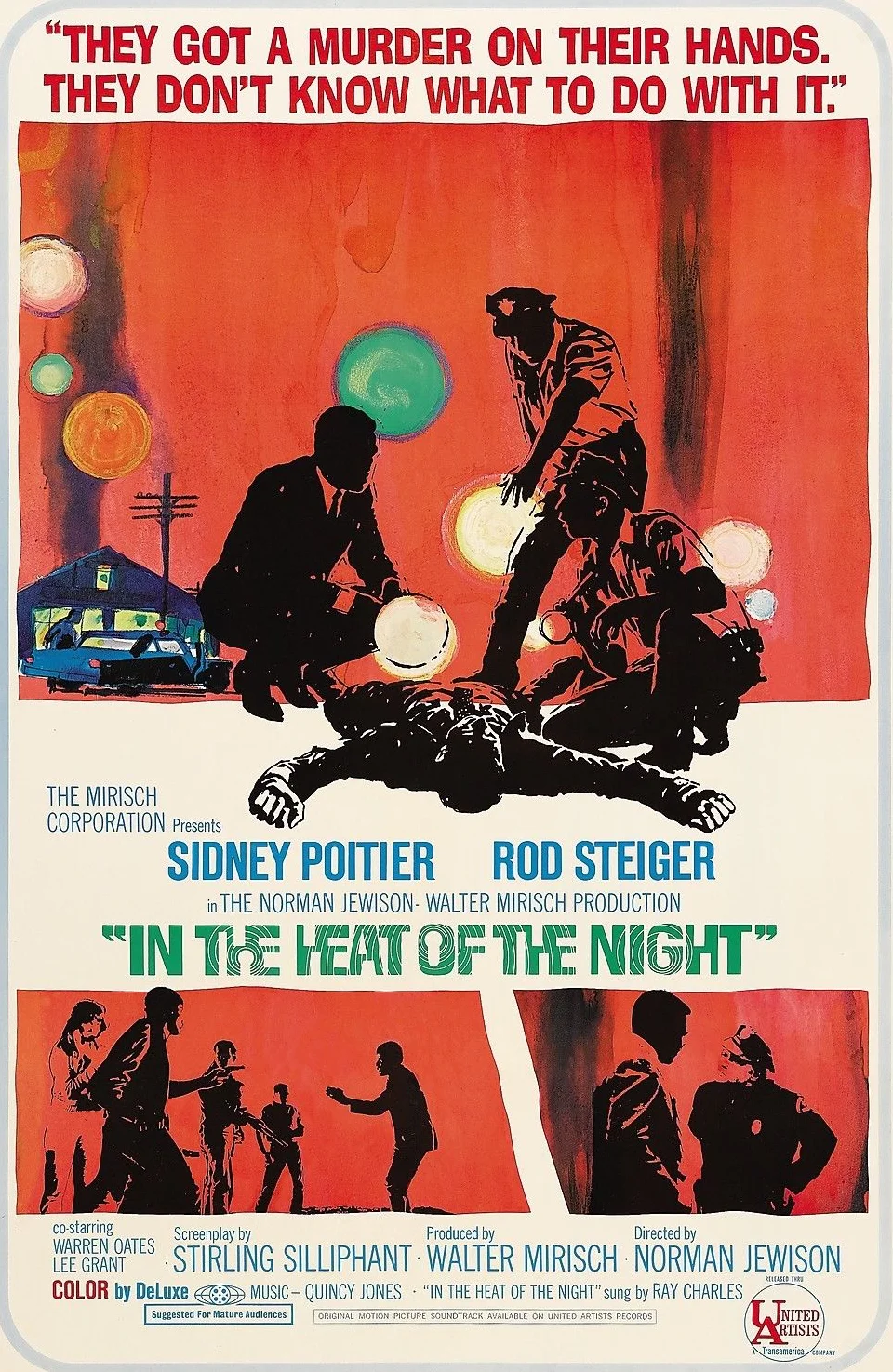 Two acting powerhouses come clashing each other in In the Heat of the Night: Sidney Poitier and Rod
Steiger. As Virgil Tibbs, Sidney Poitier is magical and has two iconic scenes: "They call me MISTER Tibbs!"
and when he slapped Mr. Endicott back. Of the latter, you could hear a pin drop in the middle of the Deep South.
Two acting powerhouses come clashing each other in In the Heat of the Night: Sidney Poitier and Rod
Steiger. As Virgil Tibbs, Sidney Poitier is magical and has two iconic scenes: "They call me MISTER Tibbs!"
and when he slapped Mr. Endicott back. Of the latter, you could hear a pin drop in the middle of the Deep South.
 What I love is the simplicity that's left open for translation. Easily the best part is how Dunbar is immersed
into the Sioux culture. Near the end, his fellow soldiers show up. Dunbar takes place among them, but he looks
out of place. Hence, it's the key moment of Dances With Wolves which is about human acceptance without
bias. Not to be missed is the lush cinematography, and the buffalo hunt scene is terrific. Graham Greene and
Rodney A. Grant turn in powerful performances.
What I love is the simplicity that's left open for translation. Easily the best part is how Dunbar is immersed
into the Sioux culture. Near the end, his fellow soldiers show up. Dunbar takes place among them, but he looks
out of place. Hence, it's the key moment of Dances With Wolves which is about human acceptance without
bias. Not to be missed is the lush cinematography, and the buffalo hunt scene is terrific. Graham Greene and
Rodney A. Grant turn in powerful performances.
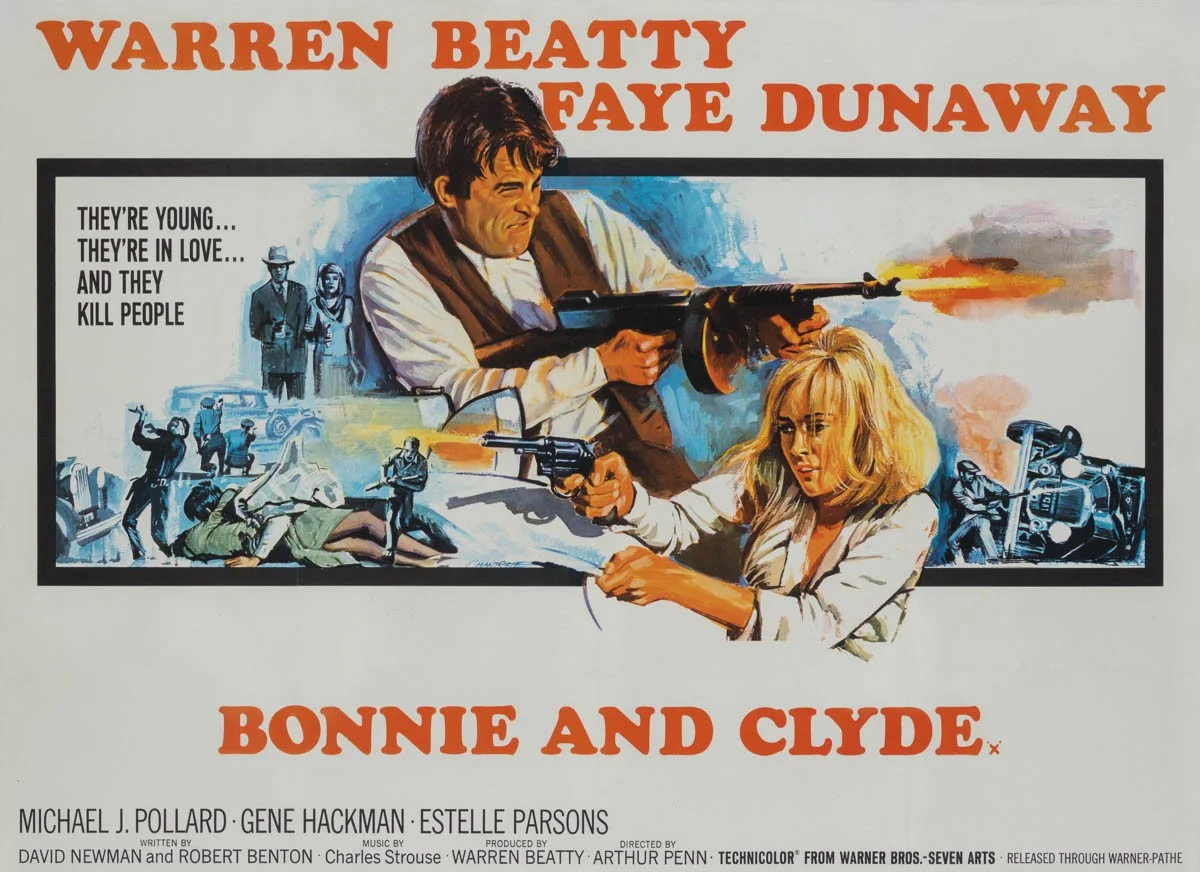 Because of the full range of colors, Bonnie and Clyde is a beautifully photographed film with impeccable
acting performances. Warren Beatty and Faye Dunaway have chemistry that's impossible to duplicate. Their violent
ending is unforgettable as well.
Because of the full range of colors, Bonnie and Clyde is a beautifully photographed film with impeccable
acting performances. Warren Beatty and Faye Dunaway have chemistry that's impossible to duplicate. Their violent
ending is unforgettable as well.
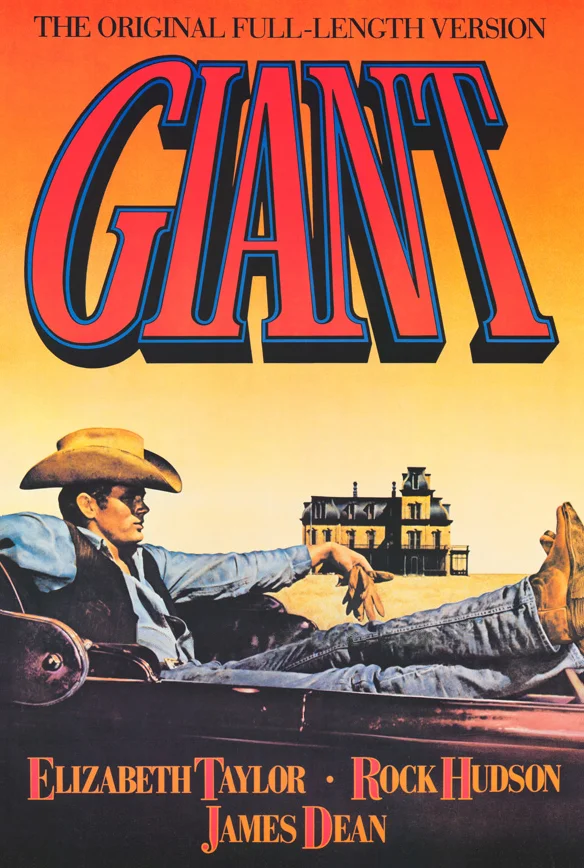 Never mind the film's running length, Giant is simply a spectacle, just as big as Texas. Many will see
it just for James Dean's final performance. Yet Rock Hudson and Elizabeth Taylor are the true stars of the show,
and they're outstanding together. The biggest winner of them all is George Stevens' direction because
Giant is almost Citizen Kane and Gone with the Wind all rolled into one.
Never mind the film's running length, Giant is simply a spectacle, just as big as Texas. Many will see
it just for James Dean's final performance. Yet Rock Hudson and Elizabeth Taylor are the true stars of the show,
and they're outstanding together. The biggest winner of them all is George Stevens' direction because
Giant is almost Citizen Kane and Gone with the Wind all rolled into one.
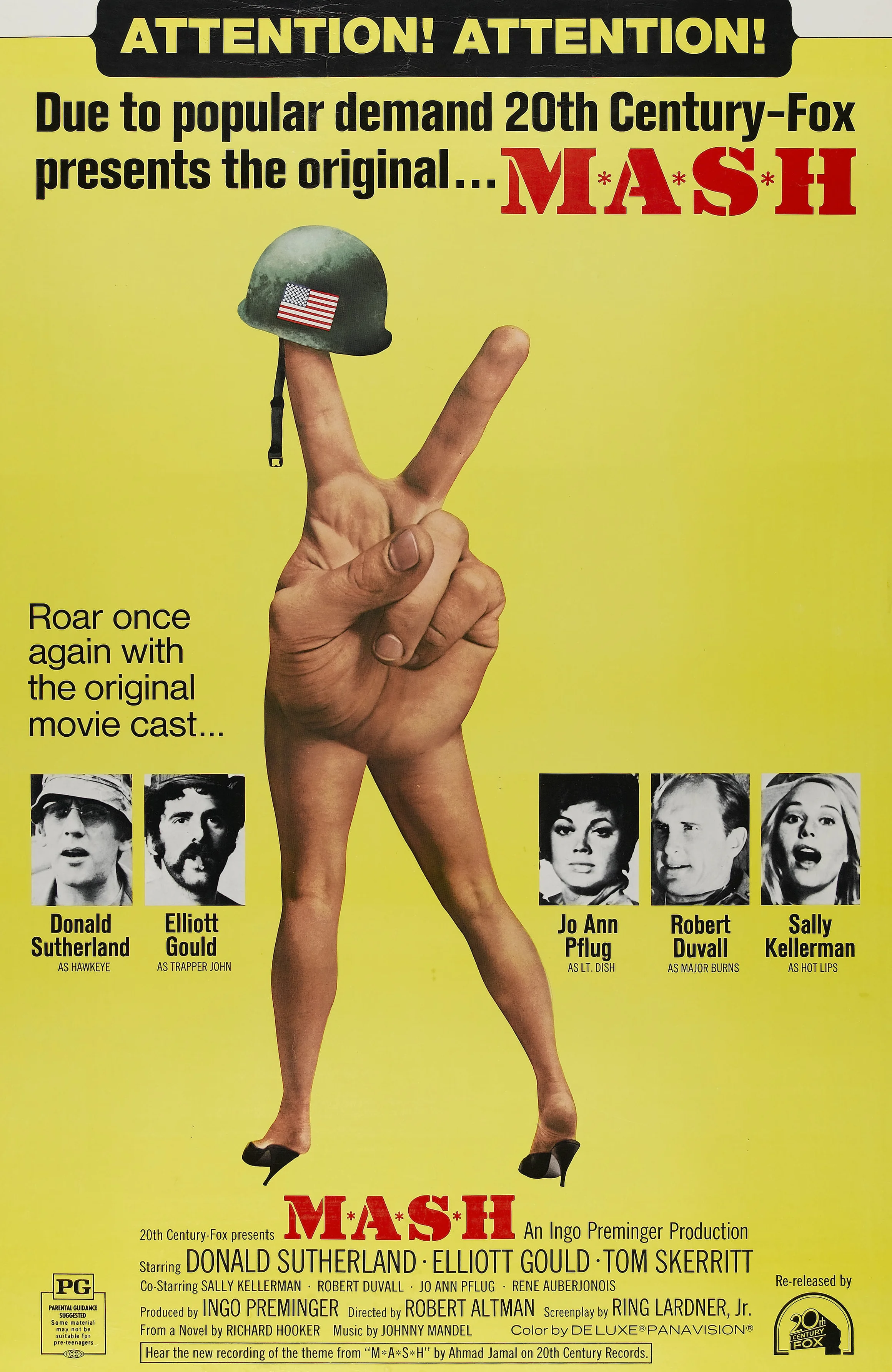 Full of brilliant writing and brilliant acting, M*A*S*H is the best and most intelligent comedy film
ever made. The ensemble cast is unbelievable, playing unforgettable characters. So are the scenes which are
so funny. No wonder why this one spawned a highly successful TV show.
Full of brilliant writing and brilliant acting, M*A*S*H is the best and most intelligent comedy film
ever made. The ensemble cast is unbelievable, playing unforgettable characters. So are the scenes which are
so funny. No wonder why this one spawned a highly successful TV show.
 Apart from setting the trend of summer blockbuster film releases, Jaws' greatest legacy is making people
think of the shark whenever they go for a swim in the ocean. Hence, Steven Spielberg was genius for not showing
it for a long while. When the shark finally comes, watch out!
Apart from setting the trend of summer blockbuster film releases, Jaws' greatest legacy is making people
think of the shark whenever they go for a swim in the ocean. Hence, Steven Spielberg was genius for not showing
it for a long while. When the shark finally comes, watch out!
 By far one of the most thrilling movies made, The Great Escape...there's nothing like it. Steve McQueen's
performance as Captain Virgil Hilts, aka The Cooler King, cements his status as an international superstar
because of the motorcycle scenes. Who can forget the iconic jump at the end? The chemistry of the all-star cast,
the story, and the dramatic escape are the reasons behind the film's quick pace.
By far one of the most thrilling movies made, The Great Escape...there's nothing like it. Steve McQueen's
performance as Captain Virgil Hilts, aka The Cooler King, cements his status as an international superstar
because of the motorcycle scenes. Who can forget the iconic jump at the end? The chemistry of the all-star cast,
the story, and the dramatic escape are the reasons behind the film's quick pace.
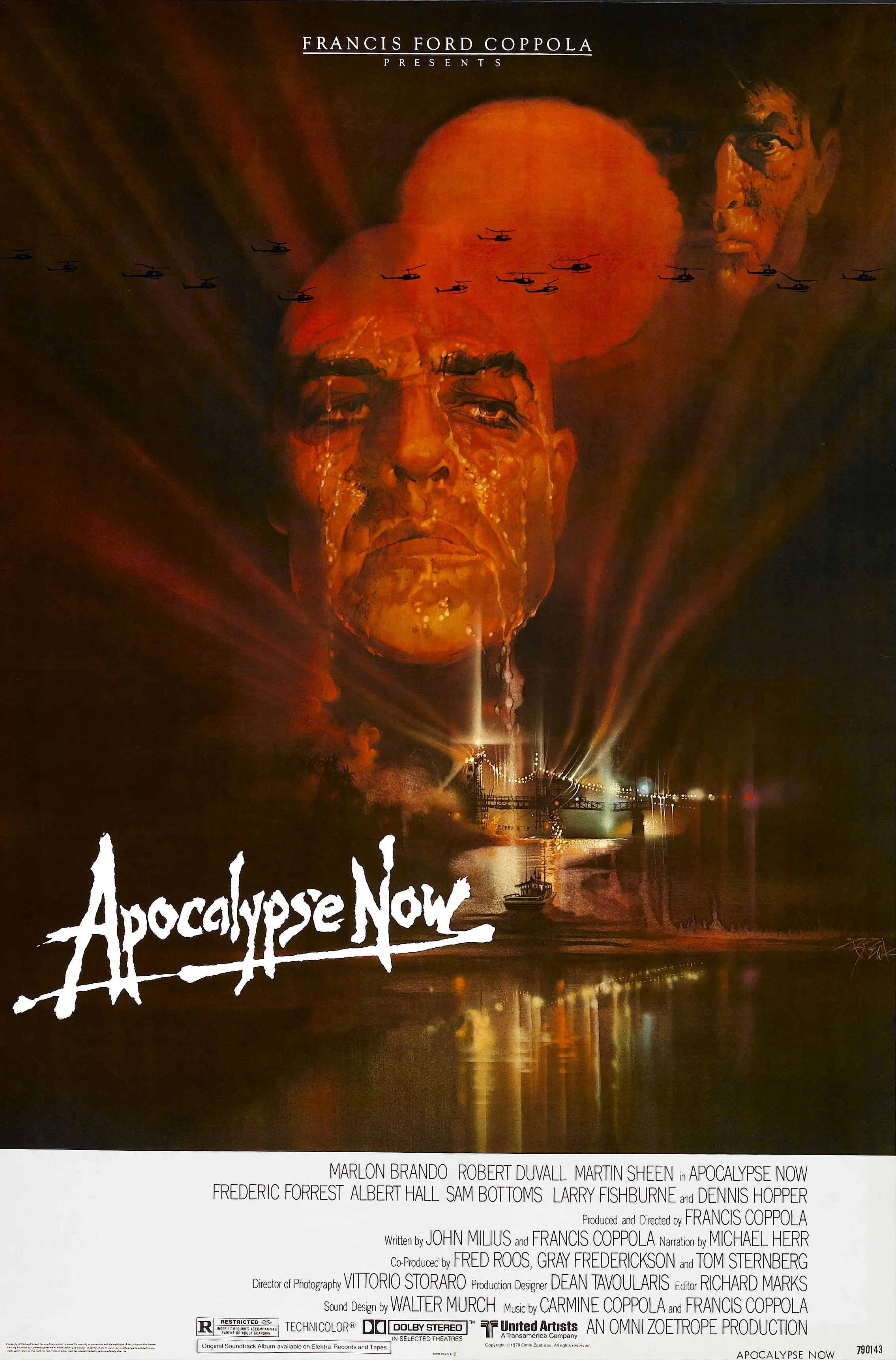 Full of iconic scenes and lines, Apocalypse Now is among the best of the decade as it tops madness
with more madness. That's what the movie is all about: the exploration of insanity in the journey toward the
heart of darkness. Making a case for the deterioration of Marlon Brando's mind may not be far-fetched, either.
Full of iconic scenes and lines, Apocalypse Now is among the best of the decade as it tops madness
with more madness. That's what the movie is all about: the exploration of insanity in the journey toward the
heart of darkness. Making a case for the deterioration of Marlon Brando's mind may not be far-fetched, either.
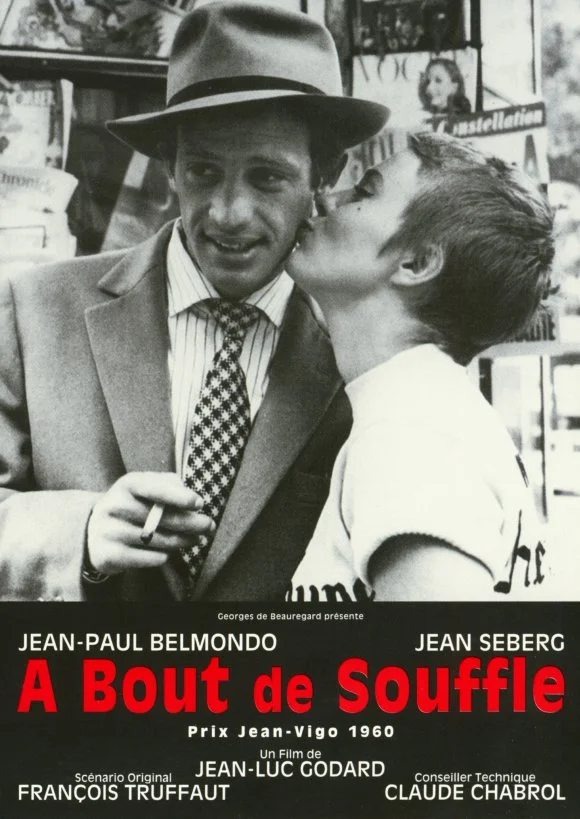 One of the greatest films in French cinema, À bout de souffle immortalized Jean-Paul Belmondo and Jean
Seberg. The jump cuts are famous and many classic scenes are seemingly improvisational, but there's
a James Dean quality that's exercised by the leading stars: infinite flexibility. It doesn't happen much in films.
One of the greatest films in French cinema, À bout de souffle immortalized Jean-Paul Belmondo and Jean
Seberg. The jump cuts are famous and many classic scenes are seemingly improvisational, but there's
a James Dean quality that's exercised by the leading stars: infinite flexibility. It doesn't happen much in films.
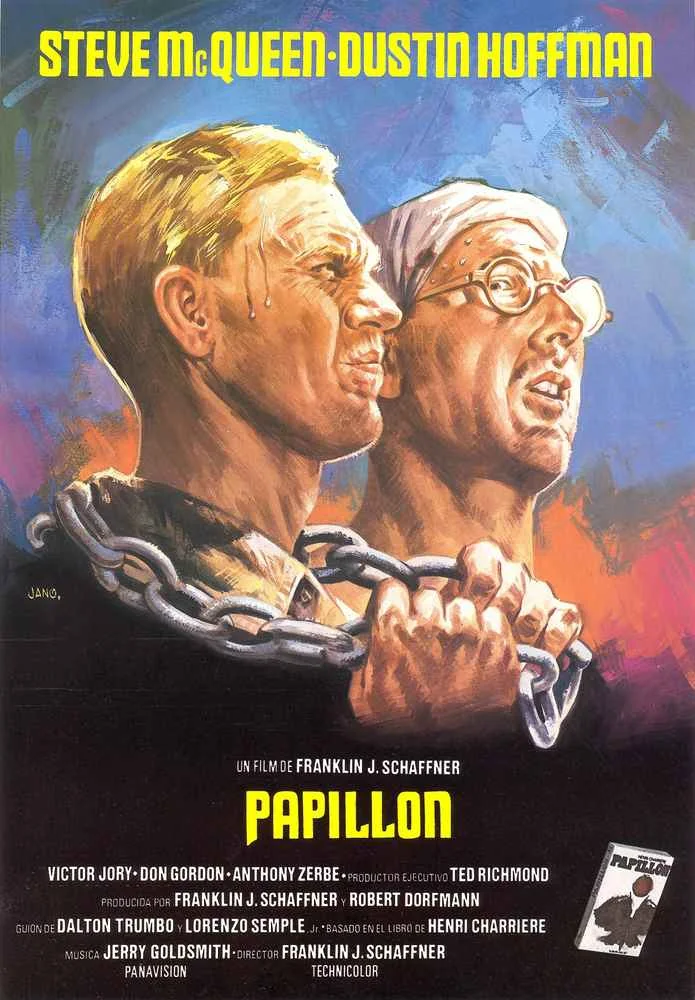 The back of the DVD cover for Papillon reads: "Not just a great escape. It was the greatest." Well,
it should've been: "Not just a great Steve McQueen performance. It was the greatest." The film's strengths lie
in Franklin Schaffner's direction and Dalton Trumbo's screenplay, both of them being the best in business.
The back of the DVD cover for Papillon reads: "Not just a great escape. It was the greatest." Well,
it should've been: "Not just a great Steve McQueen performance. It was the greatest." The film's strengths lie
in Franklin Schaffner's direction and Dalton Trumbo's screenplay, both of them being the best in business.
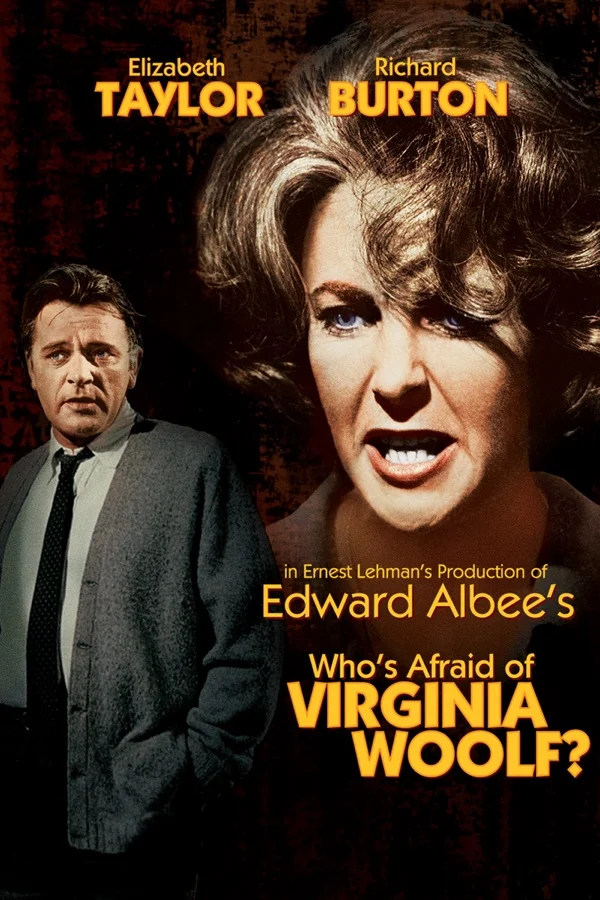 Think Elizabeth Taylor was the most beautiful woman of her time? Well, forget it. She's at her ugliest for
a big night of fights and games with the greatest actor out of Wales: Richard Burton. Elizabeth Taylor is
shockingly unrecognizable, gaining thirty pounds and looking like a trashy, alcoholic, and washed-up hag.
That acid tongue of hers is unbelievable.
Think Elizabeth Taylor was the most beautiful woman of her time? Well, forget it. She's at her ugliest for
a big night of fights and games with the greatest actor out of Wales: Richard Burton. Elizabeth Taylor is
shockingly unrecognizable, gaining thirty pounds and looking like a trashy, alcoholic, and washed-up hag.
That acid tongue of hers is unbelievable.
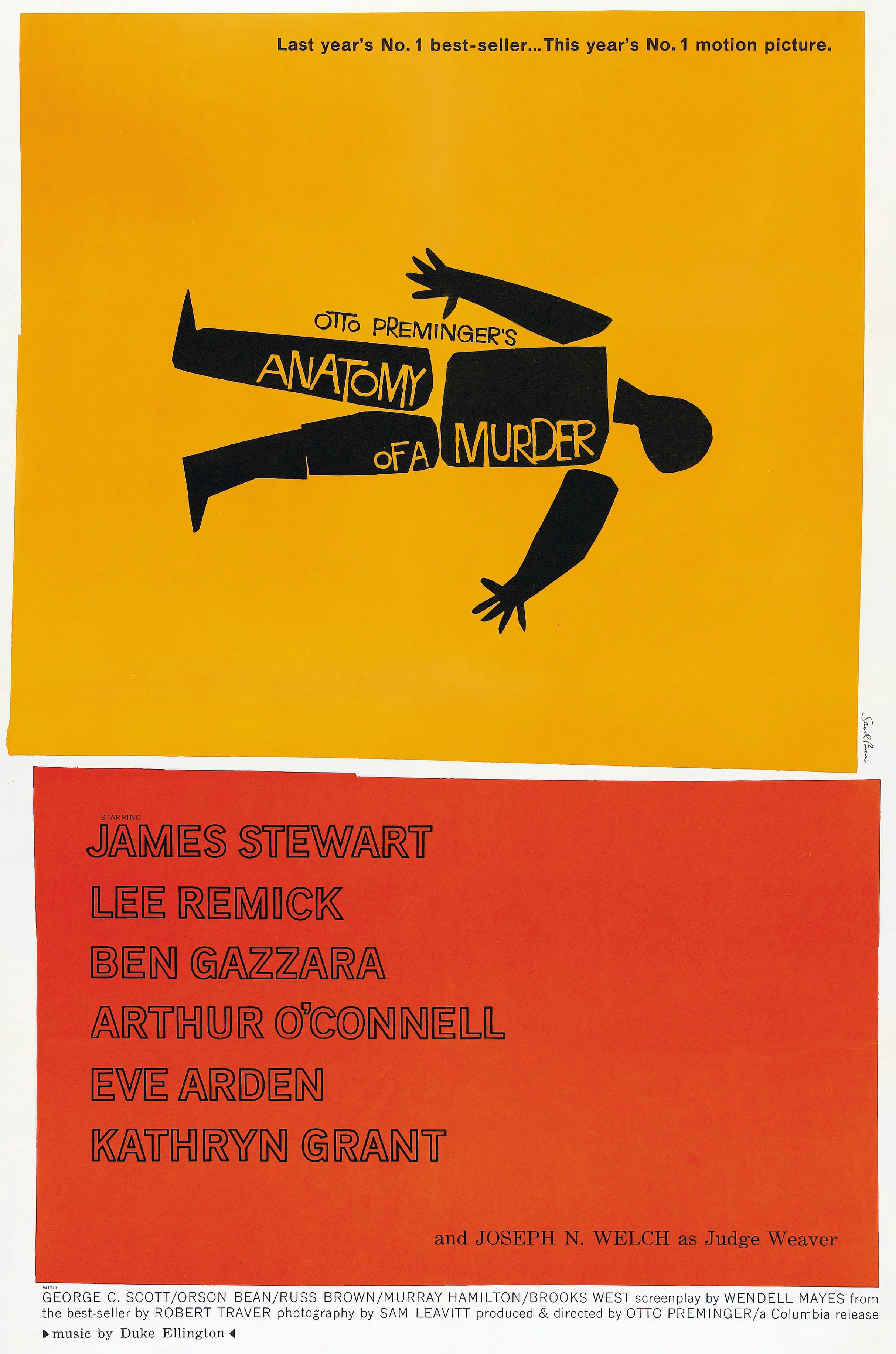 Full of brilliant writing, brilliant acting, and brilliant direction, Anatomy of a Murder may be almost
three hours long, but it's very fast-paced and serves as a strong example of courtroom procedure. James Stewart
gives one of the best performances of his career and is always riveting to watch during the trial.
Full of brilliant writing, brilliant acting, and brilliant direction, Anatomy of a Murder may be almost
three hours long, but it's very fast-paced and serves as a strong example of courtroom procedure. James Stewart
gives one of the best performances of his career and is always riveting to watch during the trial.
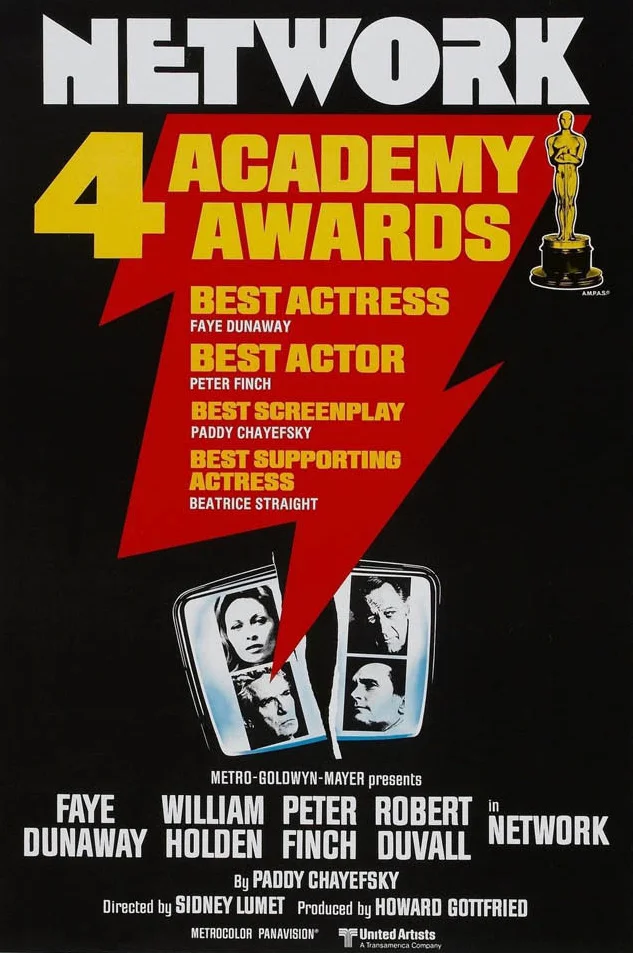 A brilliant satire about the world of television that's penned by the great Paddy Chayefsky, Network is
the one that Howard Beale famously yells: "I am as mad as hell, and I am not going to take this anymore!" The
quality of the acting is at its zenith with William Holden, Faye Dunaway, Peter Finch, Robert Duvall, and Ned
Beatty giving powerful performances.
A brilliant satire about the world of television that's penned by the great Paddy Chayefsky, Network is
the one that Howard Beale famously yells: "I am as mad as hell, and I am not going to take this anymore!" The
quality of the acting is at its zenith with William Holden, Faye Dunaway, Peter Finch, Robert Duvall, and Ned
Beatty giving powerful performances.
 Sidney Poitier made history by becoming the first black person to win an Academy Award for Best Actor by giving
the best performance of his career in Lilies of the Field, one of the most heartwarming human pictures
made. The script was first given to Harry Belafonte, but he didn't want to be doing a bizarre picture that takes
place in the middle of nowhere with five crazy white German nuns. What a huge mistake he made.
Sidney Poitier made history by becoming the first black person to win an Academy Award for Best Actor by giving
the best performance of his career in Lilies of the Field, one of the most heartwarming human pictures
made. The script was first given to Harry Belafonte, but he didn't want to be doing a bizarre picture that takes
place in the middle of nowhere with five crazy white German nuns. What a huge mistake he made.
 Full of action and war, The Last of the Mohicans is a unique masterpiece with a love story to boot.
Although it's the best Daniel Day-Lewis movie, the best Michael Mann movie, the best American Indian movie, and
the best Colonial movie, nothing is more impressive than Wes Studi's performance as Magua. It's so good that he
was sadly robbed of an Oscar. Of course, the title says it all.
Full of action and war, The Last of the Mohicans is a unique masterpiece with a love story to boot.
Although it's the best Daniel Day-Lewis movie, the best Michael Mann movie, the best American Indian movie, and
the best Colonial movie, nothing is more impressive than Wes Studi's performance as Magua. It's so good that he
was sadly robbed of an Oscar. Of course, the title says it all.
 "An astonishing work of art and an overpowering motion picture experience" is how one Los Angeles Times
critic described Easy Rider. Dennis Hopper, Peter Fonda, and Jack Nicholson will always be identified with
this film. Entering the Deep South, the tragic ending is memorable because of what George Hanson said: "They're
scared of what you represent to 'em. What you represent to them is freedom."
"An astonishing work of art and an overpowering motion picture experience" is how one Los Angeles Times
critic described Easy Rider. Dennis Hopper, Peter Fonda, and Jack Nicholson will always be identified with
this film. Entering the Deep South, the tragic ending is memorable because of what George Hanson said: "They're
scared of what you represent to 'em. What you represent to them is freedom."
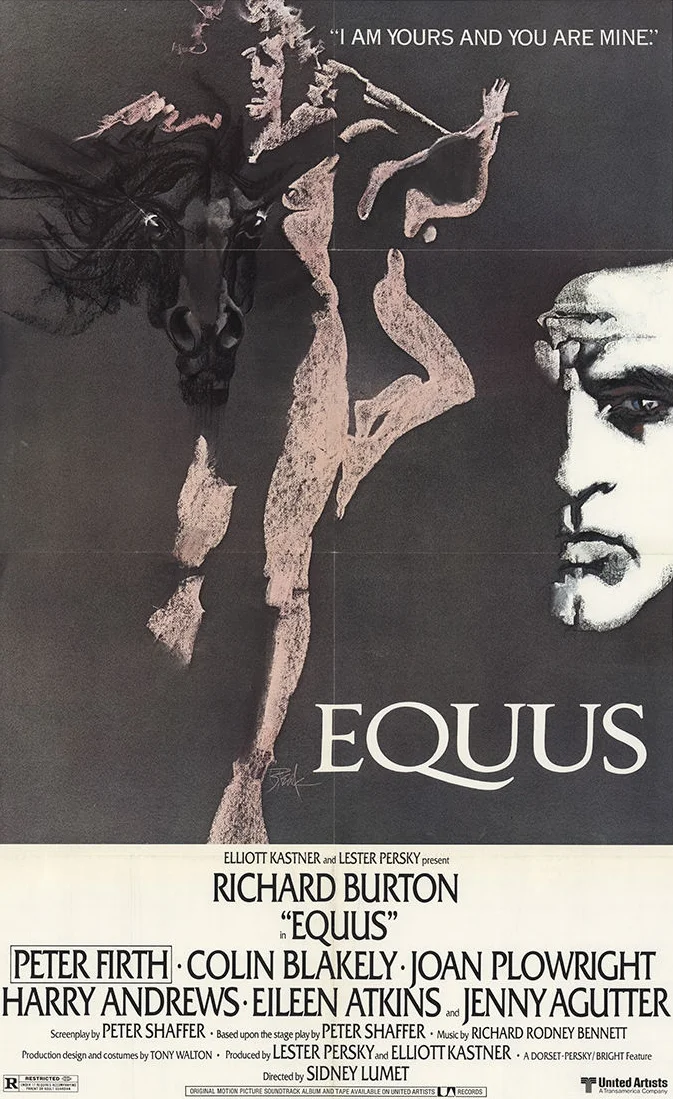 Brilliant writing, brilliant acting, and brilliant story. After sloshing around in the world of alcohol and
therefore wasting his talent for years, Richard Burton makes the greatest comeback of all time by appearing in
Equus as psychiatrist Martin Dysart by giving a fiery but focused performance. His riveting soliloquies
are the stuff of greats. On the other hand, Peter Firth is unforgettable as the tormented boy.
Brilliant writing, brilliant acting, and brilliant story. After sloshing around in the world of alcohol and
therefore wasting his talent for years, Richard Burton makes the greatest comeback of all time by appearing in
Equus as psychiatrist Martin Dysart by giving a fiery but focused performance. His riveting soliloquies
are the stuff of greats. On the other hand, Peter Firth is unforgettable as the tormented boy.
 Ryan O'Neal's finest hour in acting is showcased in Barry Lyndon, a superbly photographed flick that
defines filmmaking in every bit of the word. It's thorough masterpiece for an 18th century British period
picture, and there are many things to like: the story, the acting, the costumes, the in/exterior sets (the
latter was shot on location in Ireland, England, and West Germany and the former in London), the deliberate pace,
the coldness, and, most of all, the cinematography.
Ryan O'Neal's finest hour in acting is showcased in Barry Lyndon, a superbly photographed flick that
defines filmmaking in every bit of the word. It's thorough masterpiece for an 18th century British period
picture, and there are many things to like: the story, the acting, the costumes, the in/exterior sets (the
latter was shot on location in Ireland, England, and West Germany and the former in London), the deliberate pace,
the coldness, and, most of all, the cinematography.
 One Flew Over the Cuckoo's Nest is primarily a performance-driven film. There's no doubt that Jack
Nicholson and Louise Fletcher are iconic as Randle McMurphy and Nurse Ratched, respectively. As for the
supporting cast, it's impressive, considering the film was made in 1975. Everybody wasn't aware of who Danny
DeVito and Christopher Lloyd were at the time with both going on to achieve more fame in a TV show called
Taxi. Brad Dourif, Sydney Lassick, and Will Sampson are excellent as well.
One Flew Over the Cuckoo's Nest is primarily a performance-driven film. There's no doubt that Jack
Nicholson and Louise Fletcher are iconic as Randle McMurphy and Nurse Ratched, respectively. As for the
supporting cast, it's impressive, considering the film was made in 1975. Everybody wasn't aware of who Danny
DeVito and Christopher Lloyd were at the time with both going on to achieve more fame in a TV show called
Taxi. Brad Dourif, Sydney Lassick, and Will Sampson are excellent as well.
 Brilliant and haunting, The Last Picture Show is a timeless motion picture about individuals growing up
in a dying Texas town. Robert Surtees' black-and-white photography has never looked better. Then, there's the
ensemble cast: the old-timers and those who'll go on to be famous.
Brilliant and haunting, The Last Picture Show is a timeless motion picture about individuals growing up
in a dying Texas town. Robert Surtees' black-and-white photography has never looked better. Then, there's the
ensemble cast: the old-timers and those who'll go on to be famous.
 A landmark in black cinema, The Color Purple captures the human spirit so well that it's a strange yet
moving work of art with powerful scenes. Making her astonishing film debut is Whoopi Goldberg. There's so much
for the characters to overcome such as domestic violence, incest, forced separation, rape, slavery, pedophilia,
poverty, racism, and sexism.
A landmark in black cinema, The Color Purple captures the human spirit so well that it's a strange yet
moving work of art with powerful scenes. Making her astonishing film debut is Whoopi Goldberg. There's so much
for the characters to overcome such as domestic violence, incest, forced separation, rape, slavery, pedophilia,
poverty, racism, and sexism.
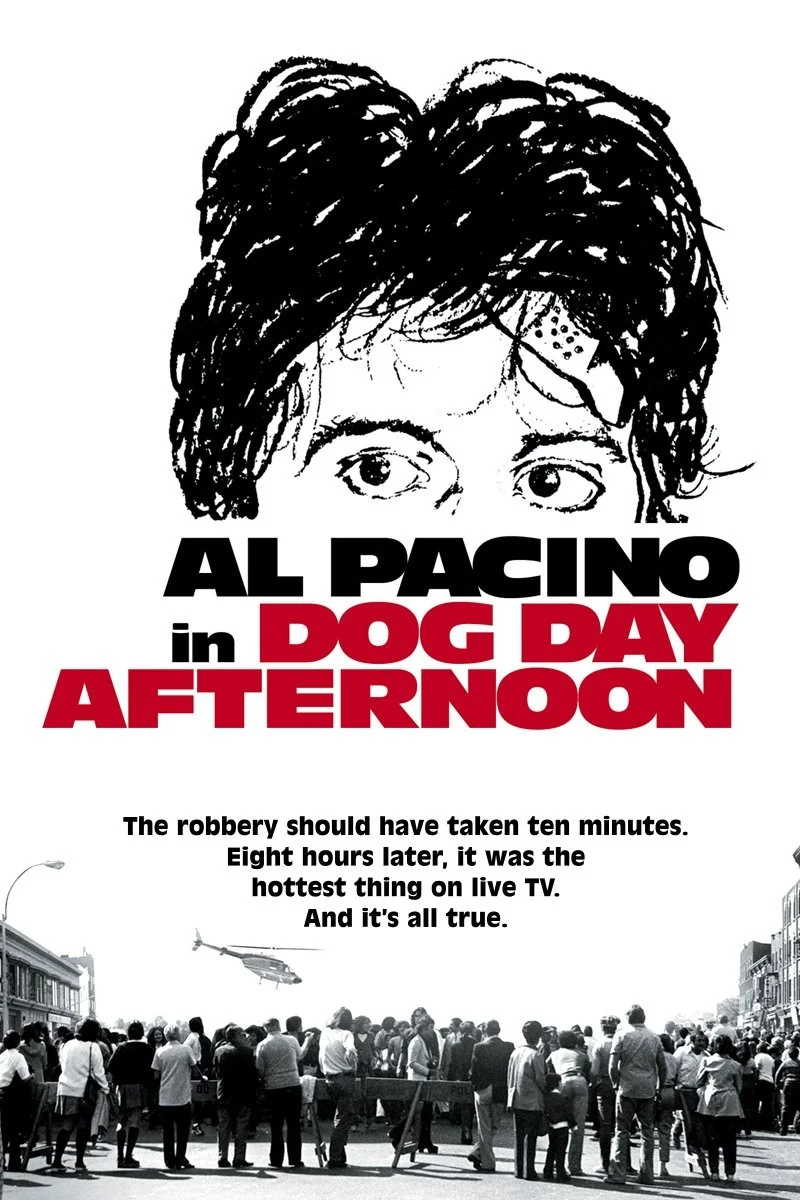 Based on a true and bizarre story, Dog Day Afternoon is everything you can possibly ask for in a human
drama picture. For the final of his four straight Oscar nominations during the 70's, Al Pacino turns in one
of the greatest performances of his career as Sonny Wortzik. Chris Sarandon is also outstanding, having
been Oscar-nominated.
Based on a true and bizarre story, Dog Day Afternoon is everything you can possibly ask for in a human
drama picture. For the final of his four straight Oscar nominations during the 70's, Al Pacino turns in one
of the greatest performances of his career as Sonny Wortzik. Chris Sarandon is also outstanding, having
been Oscar-nominated.
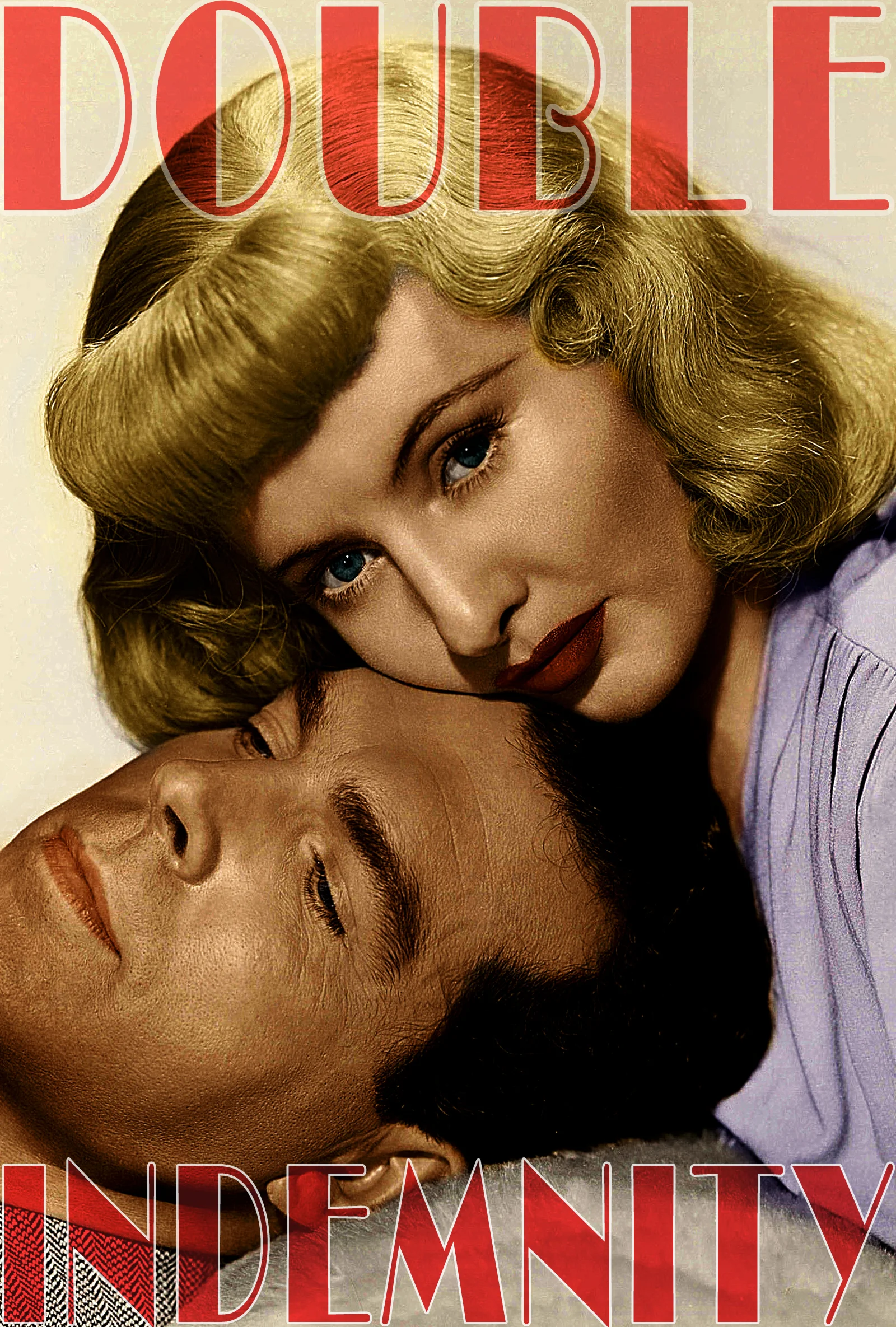 Double Indemnity is a top five film noir with a great femme fatale in Barbara Stanwyck.
Fred MacMurray does his part well. There's a bit of a playful repartee between him and her that seals the deal
what this movie will be all about. Edward G. Robinson, as great as he has been in so many films, gives an
outstanding performance.
Double Indemnity is a top five film noir with a great femme fatale in Barbara Stanwyck.
Fred MacMurray does his part well. There's a bit of a playful repartee between him and her that seals the deal
what this movie will be all about. Edward G. Robinson, as great as he has been in so many films, gives an
outstanding performance.
 This is the one that started it all. George Romero will forever be remembered for Night of the Living Dead
which is an underrated American horror classic picture. Unintentional or not, it's also groundbreaking for
casting a black actor as the main protagonist who's intelligent with a lot of common sense. Unique is the use of
radio play to narrate what's happening at the moment.
This is the one that started it all. George Romero will forever be remembered for Night of the Living Dead
which is an underrated American horror classic picture. Unintentional or not, it's also groundbreaking for
casting a black actor as the main protagonist who's intelligent with a lot of common sense. Unique is the use of
radio play to narrate what's happening at the moment.
 The best way to think of The Wild Bunch is "honor among thieves." If there's a film that represents Sam
Peckinpah the most, it's this one. The editing is amazing. There are some scenes that are stirring and passionate.
The display of violence is unbelievable and is best described as poetic.
The best way to think of The Wild Bunch is "honor among thieves." If there's a film that represents Sam
Peckinpah the most, it's this one. The editing is amazing. There are some scenes that are stirring and passionate.
The display of violence is unbelievable and is best described as poetic.
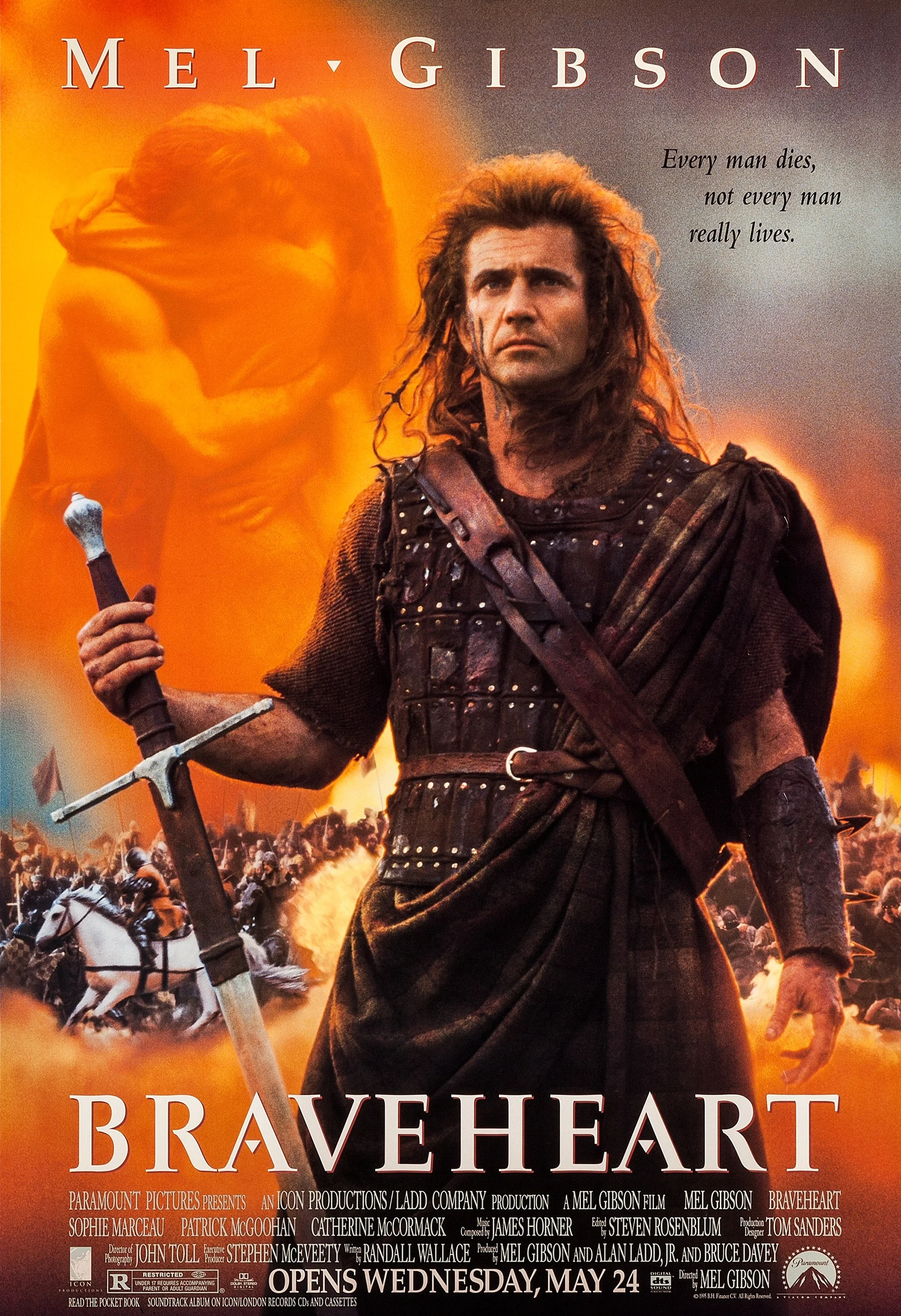 A surprise Oscar winner for Best Picture of 1995, Braveheart is the last great epic war motion picture.
Characters, big, small, clean, dirty, and nameless, all play a large role in scene after scene with so many of
them memorable. Passion is easily felt throughout the wonderful storytelling with a strong script and some of
the most brutal medieval battle scenes ever filmed.
A surprise Oscar winner for Best Picture of 1995, Braveheart is the last great epic war motion picture.
Characters, big, small, clean, dirty, and nameless, all play a large role in scene after scene with so many of
them memorable. Passion is easily felt throughout the wonderful storytelling with a strong script and some of
the most brutal medieval battle scenes ever filmed.
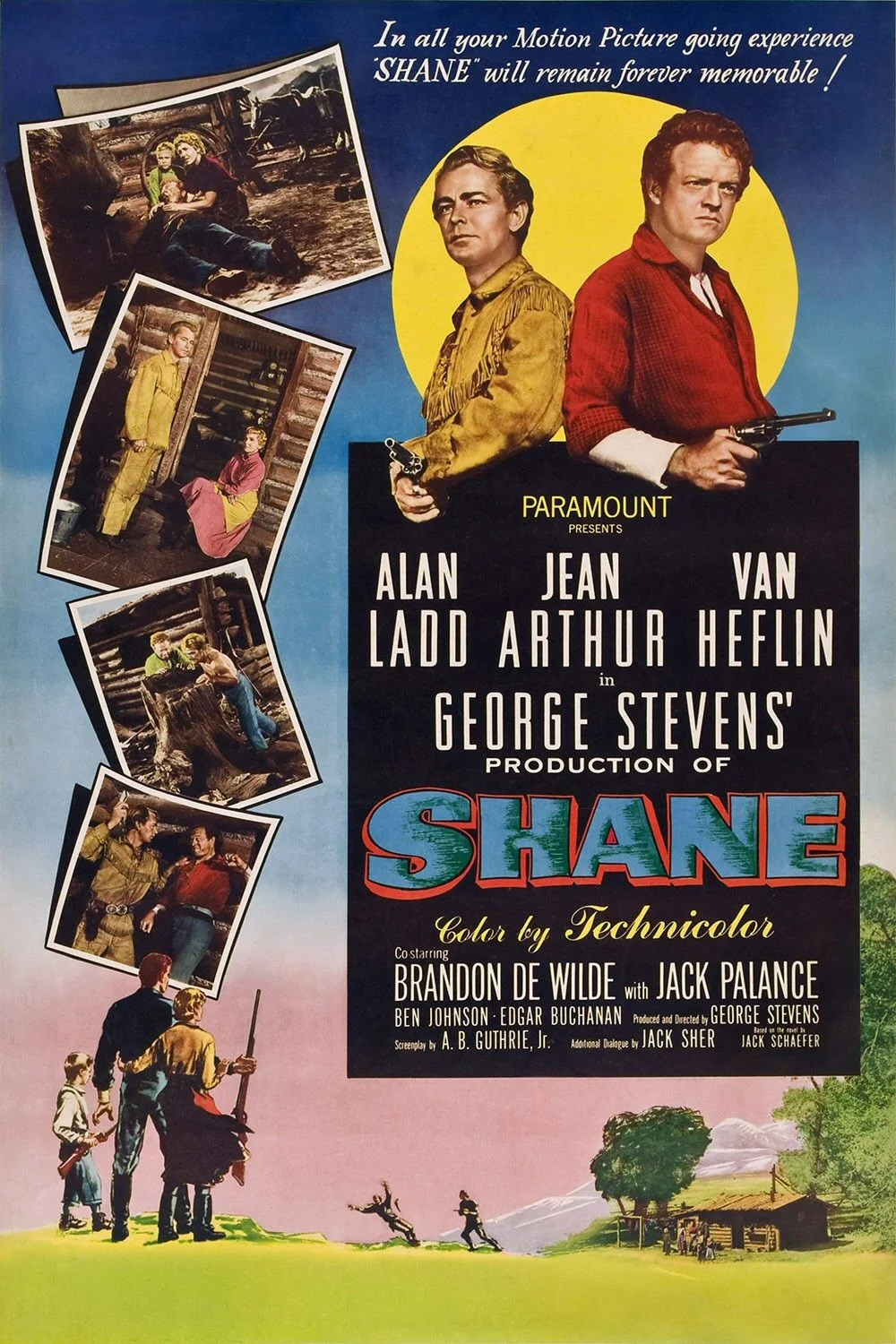 *whistles* Gosh Almighty, that is good! I guess it's an appropriate reaction after seeing Shane. Alan
Ladd is iconic as the eponymous hero: a man with a past. Brandon deWilde is special. Van Heflin, Jean Arthur,
and Jack Palance all turn in terrific performances. The ending is an unforgettable classic that will never be old.
*whistles* Gosh Almighty, that is good! I guess it's an appropriate reaction after seeing Shane. Alan
Ladd is iconic as the eponymous hero: a man with a past. Brandon deWilde is special. Van Heflin, Jean Arthur,
and Jack Palance all turn in terrific performances. The ending is an unforgettable classic that will never be old.
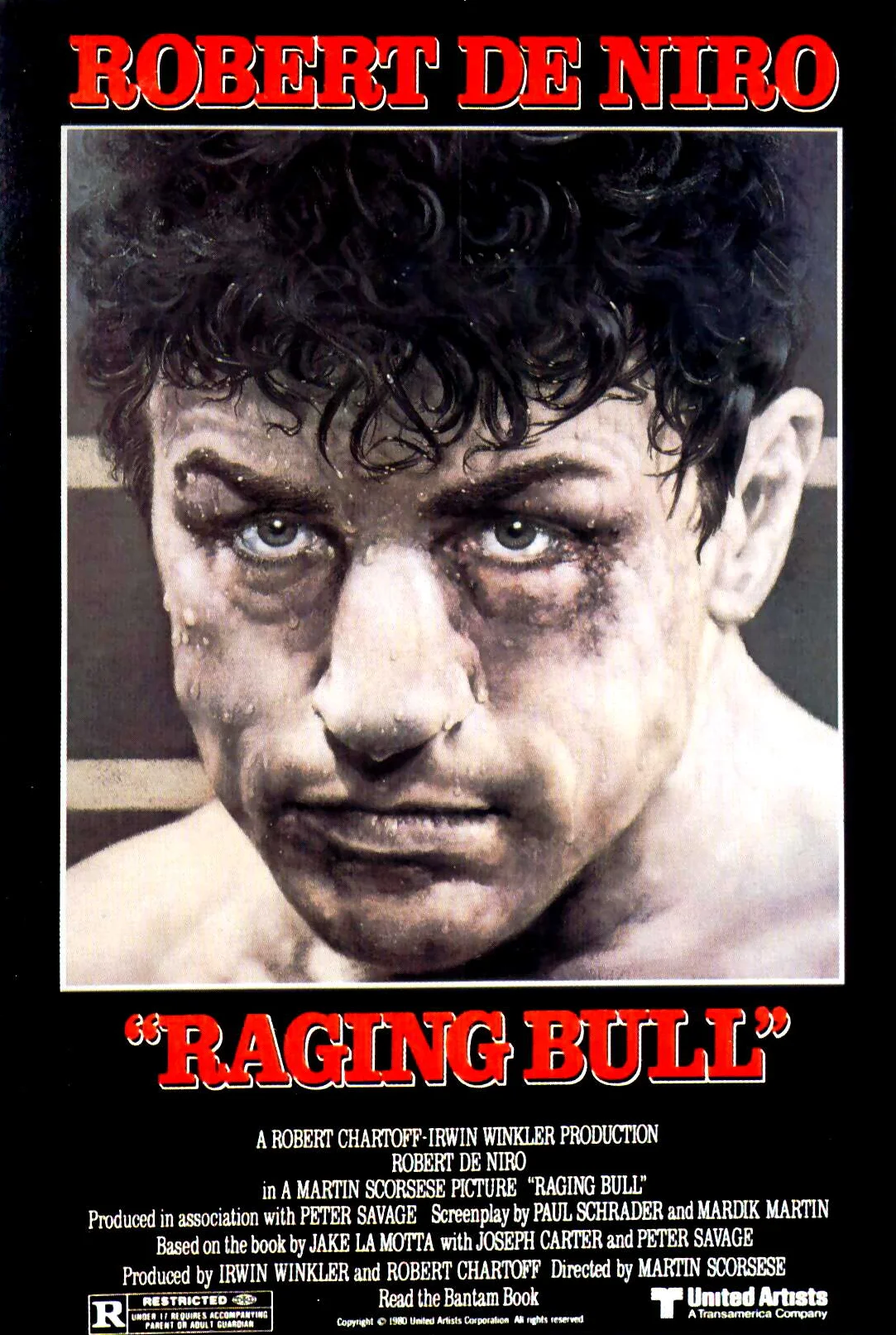 *table crashing* "Bodder me abott a steak? Huh? You bodda me abott a steak??!" That scene pretty much sums up what
Raging Bull is about. As almost unrecognizable as he looks, Robert De Niro gives a performance that's among
the ten greatest in history. Both cinematography and editing are the icing on the cake to reach for that certain
oomph.
*table crashing* "Bodder me abott a steak? Huh? You bodda me abott a steak??!" That scene pretty much sums up what
Raging Bull is about. As almost unrecognizable as he looks, Robert De Niro gives a performance that's among
the ten greatest in history. Both cinematography and editing are the icing on the cake to reach for that certain
oomph.
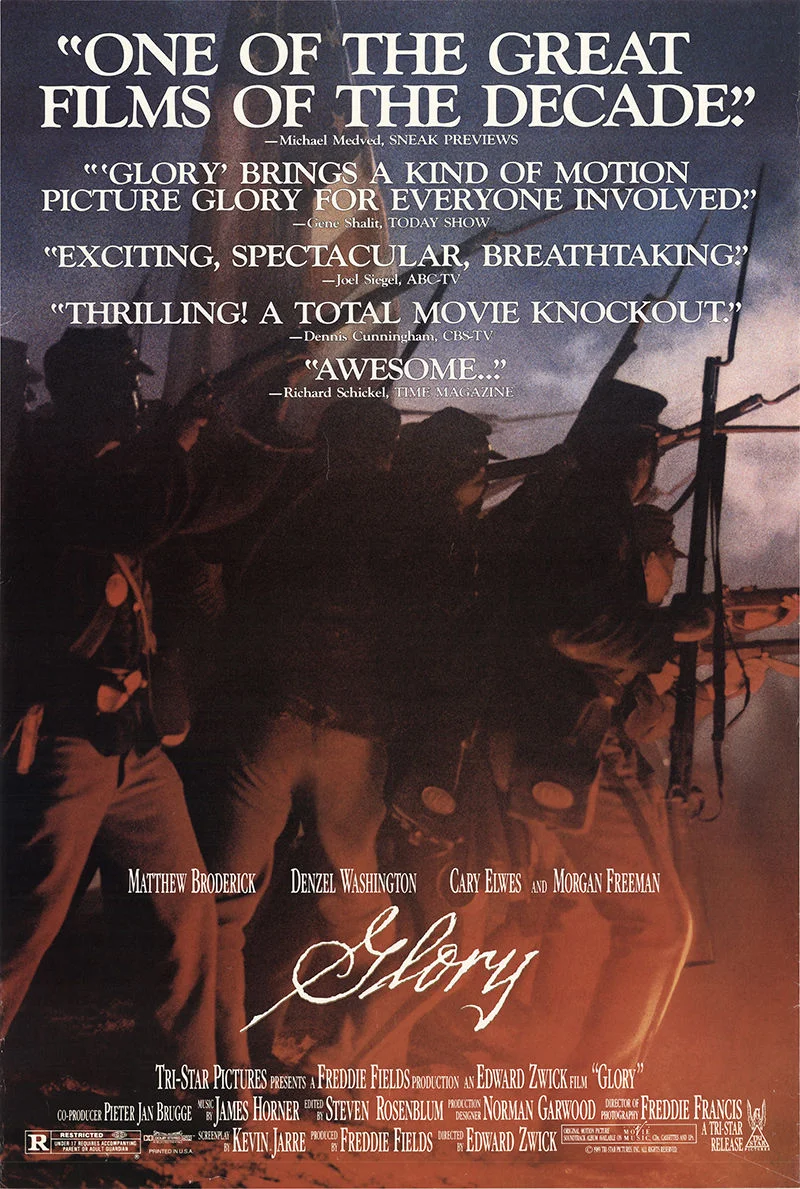 Riveting and moving, Glory is the top film of 1989 and ranks among the very best of the decade. Without
doubt, the most spectacular performance comes from Denzel Washington who clinched the Oscar during the flogging
scene. The 54th's assault on Fort Wagner underscores how dramatic the whole thing is. The night before is
incredible because these men knew they were going to die and felt prepared about it.
Riveting and moving, Glory is the top film of 1989 and ranks among the very best of the decade. Without
doubt, the most spectacular performance comes from Denzel Washington who clinched the Oscar during the flogging
scene. The 54th's assault on Fort Wagner underscores how dramatic the whole thing is. The night before is
incredible because these men knew they were going to die and felt prepared about it.
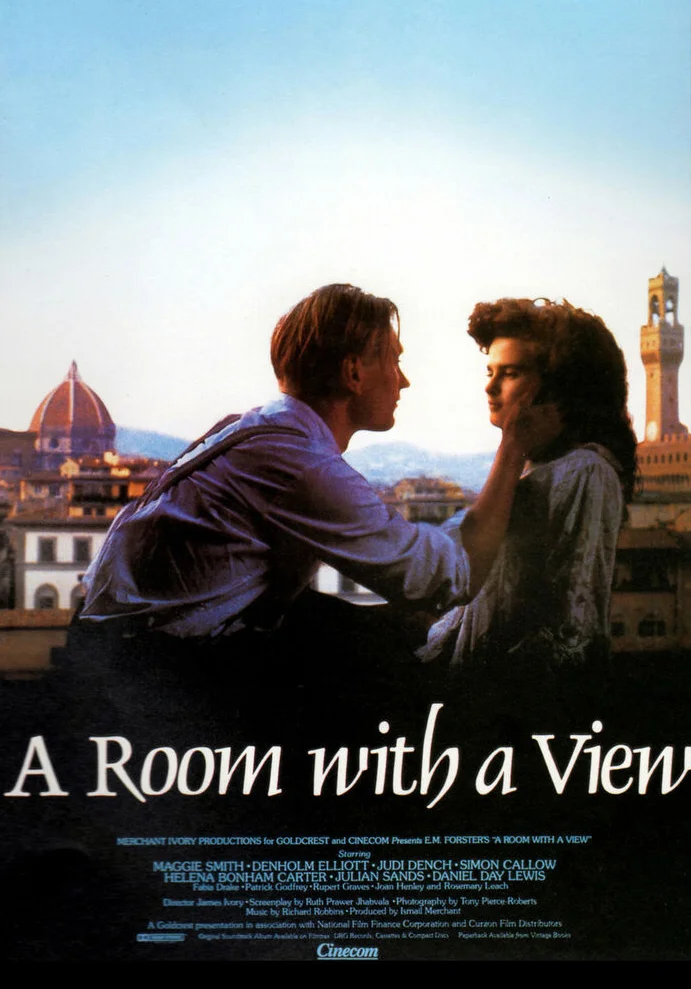 If you have to pick one Merchant Ivory picture to watch, make it A Room with a View. It's a rare achievement
in filmmaking which is transforming the screenplay into a motion picture with the feel of a 19th century novel
with brilliant performances. The direction is adroitly done, and the cinematography is magnificent.
If you have to pick one Merchant Ivory picture to watch, make it A Room with a View. It's a rare achievement
in filmmaking which is transforming the screenplay into a motion picture with the feel of a 19th century novel
with brilliant performances. The direction is adroitly done, and the cinematography is magnificent.
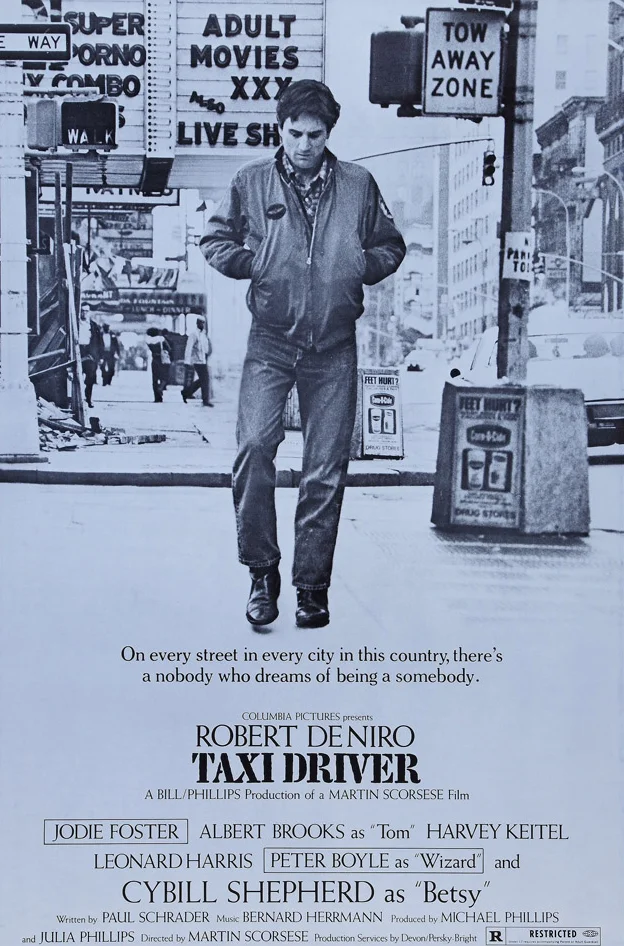 "You talkin' to me? You talkin' to me? You talkin' to me? Then who the hell else are you talking...you talking
to me? Well I'm the only one here." A painful scene, indeed, but it's one of the most iconic ever. No question,
Taxi Driver is a top three Scorsese film with a powerful Robert De Niro performance. The last twenty
minutes is unpredictable.
"You talkin' to me? You talkin' to me? You talkin' to me? Then who the hell else are you talking...you talking
to me? Well I'm the only one here." A painful scene, indeed, but it's one of the most iconic ever. No question,
Taxi Driver is a top three Scorsese film with a powerful Robert De Niro performance. The last twenty
minutes is unpredictable.
 The king of high school pictures, Lean on Me is a heartwarming tale that's based on a true story about
how Joe Clark created a storm of controversy by using unconventional methods of discipline at Eastside High
in Paterson, New Jersey, during the 80's. Thanks to Morgan Freeman's stirring performance, it's scene-by-scene
brilliant in a moving way that captures the essence of the human spirit.
The king of high school pictures, Lean on Me is a heartwarming tale that's based on a true story about
how Joe Clark created a storm of controversy by using unconventional methods of discipline at Eastside High
in Paterson, New Jersey, during the 80's. Thanks to Morgan Freeman's stirring performance, it's scene-by-scene
brilliant in a moving way that captures the essence of the human spirit.
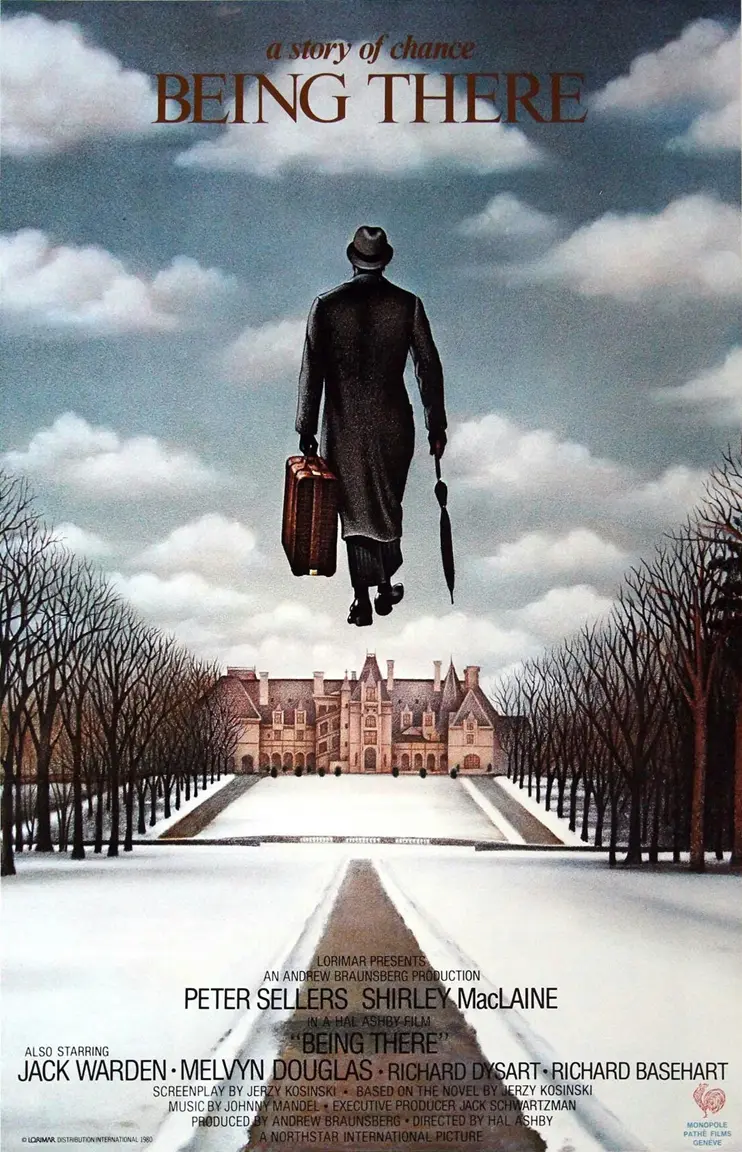 Forget Forrest Gump; this is the one to see. Peter Sellers gives the best performance of his career
in Being There. He's brilliant. What a hard role to pull off: the ability to be oblivious in a
child-like way yet be taken for a genius. Hal Ashby's magic is obviously there. It's the last masterpiece
of his career. Being There has a great story that's as airtight as it gets.
Forget Forrest Gump; this is the one to see. Peter Sellers gives the best performance of his career
in Being There. He's brilliant. What a hard role to pull off: the ability to be oblivious in a
child-like way yet be taken for a genius. Hal Ashby's magic is obviously there. It's the last masterpiece
of his career. Being There has a great story that's as airtight as it gets.
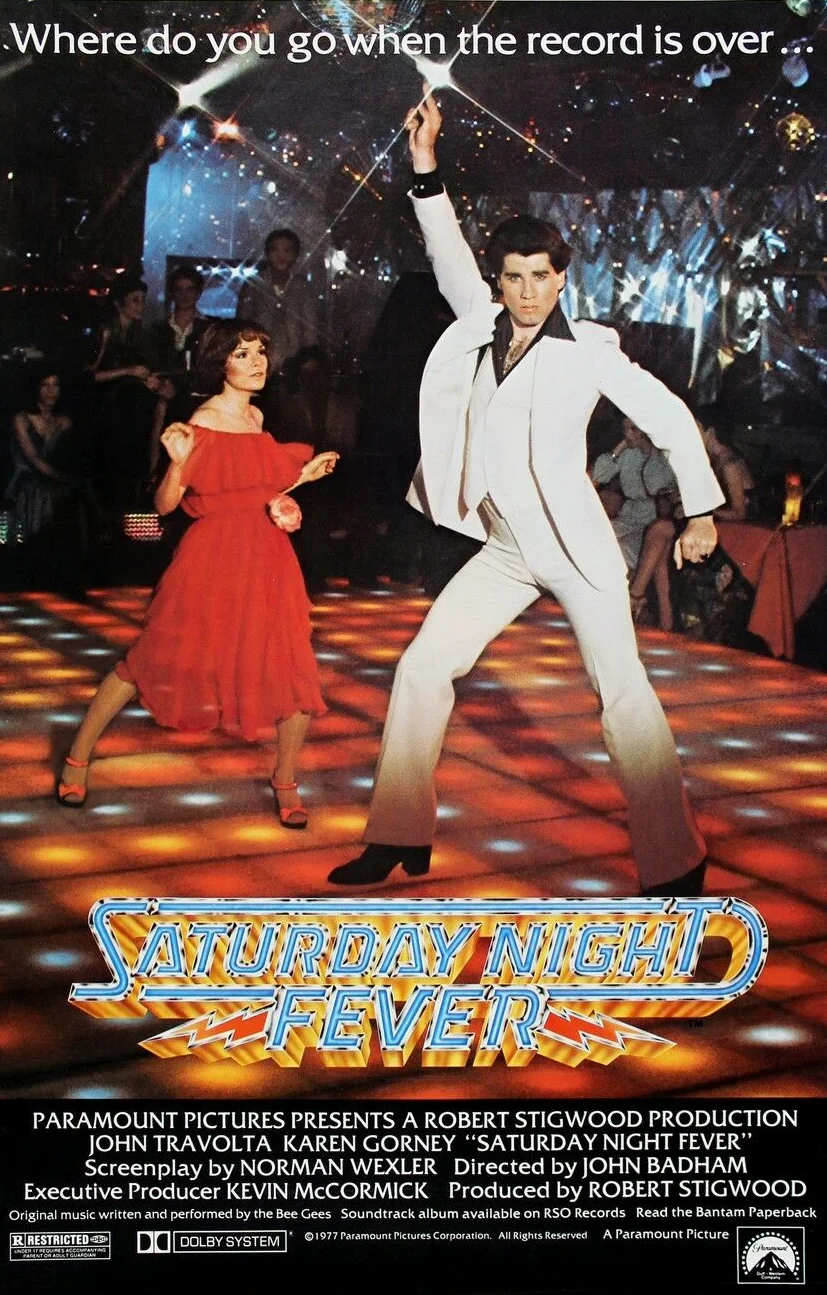 A Brooklyn paint store clerk by day and undisputed king of the dance floor by night, it's John Travolta's
most famous, iconic movie role. When I think of a film that captures a lost period, it's this one. At that time,
disco was strictly underground, but when the movie came out, the subculture just blew up and John Travolta,
although already famous because of the TV show Welcome Back, Kotter, became an instant international
superstar.
A Brooklyn paint store clerk by day and undisputed king of the dance floor by night, it's John Travolta's
most famous, iconic movie role. When I think of a film that captures a lost period, it's this one. At that time,
disco was strictly underground, but when the movie came out, the subculture just blew up and John Travolta,
although already famous because of the TV show Welcome Back, Kotter, became an instant international
superstar.
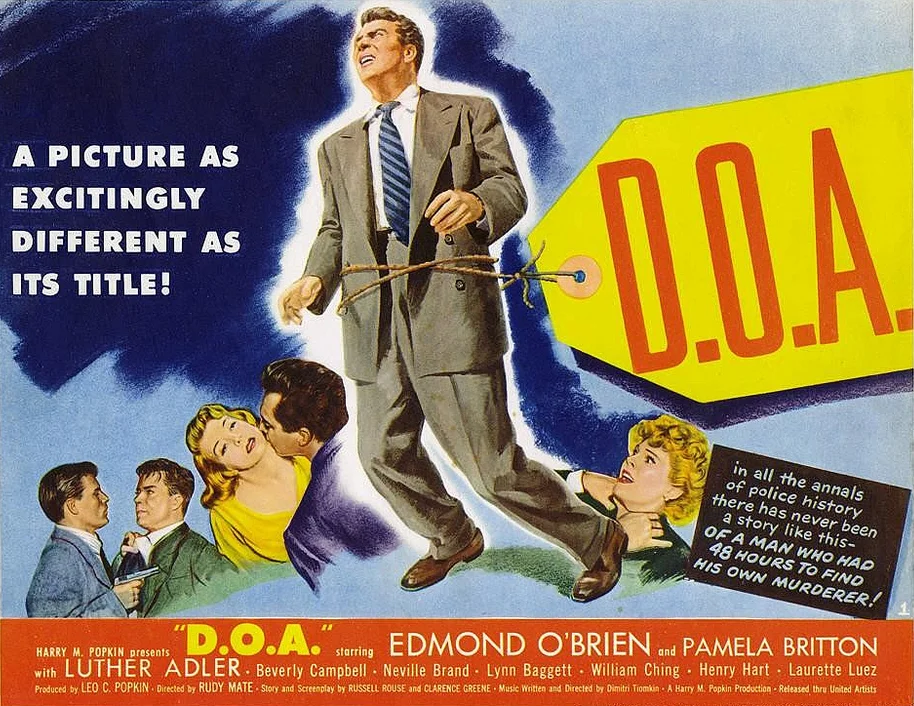 If there's an automatic must-see film noir, it's D.O.A. with Edmond O'Brien. Shot on location in
San Francisco and Los Angeles, it's a brilliant movie, one of the rarest with a strong start and a strong finish.
The gist of the story is unbelievable which goes like this: "Frank Bigelow, told he's been poisoned and has only
a few days to live, tries to find out who killed him and why." If that's not compelling enough, then nothing
else is.
If there's an automatic must-see film noir, it's D.O.A. with Edmond O'Brien. Shot on location in
San Francisco and Los Angeles, it's a brilliant movie, one of the rarest with a strong start and a strong finish.
The gist of the story is unbelievable which goes like this: "Frank Bigelow, told he's been poisoned and has only
a few days to live, tries to find out who killed him and why." If that's not compelling enough, then nothing
else is.
 Platoon is an outstanding Vietnam War picture, depicting the realities of infantry combat. The performances
by the ensemble cast are brilliantly rendered, but it's Tom Berenger and Willem Dafoe who take the film to
another level that makes the whole thing a tragedy. The most thrilling, impactful scene is Elias' death run.
Platoon is an outstanding Vietnam War picture, depicting the realities of infantry combat. The performances
by the ensemble cast are brilliantly rendered, but it's Tom Berenger and Willem Dafoe who take the film to
another level that makes the whole thing a tragedy. The most thrilling, impactful scene is Elias' death run.
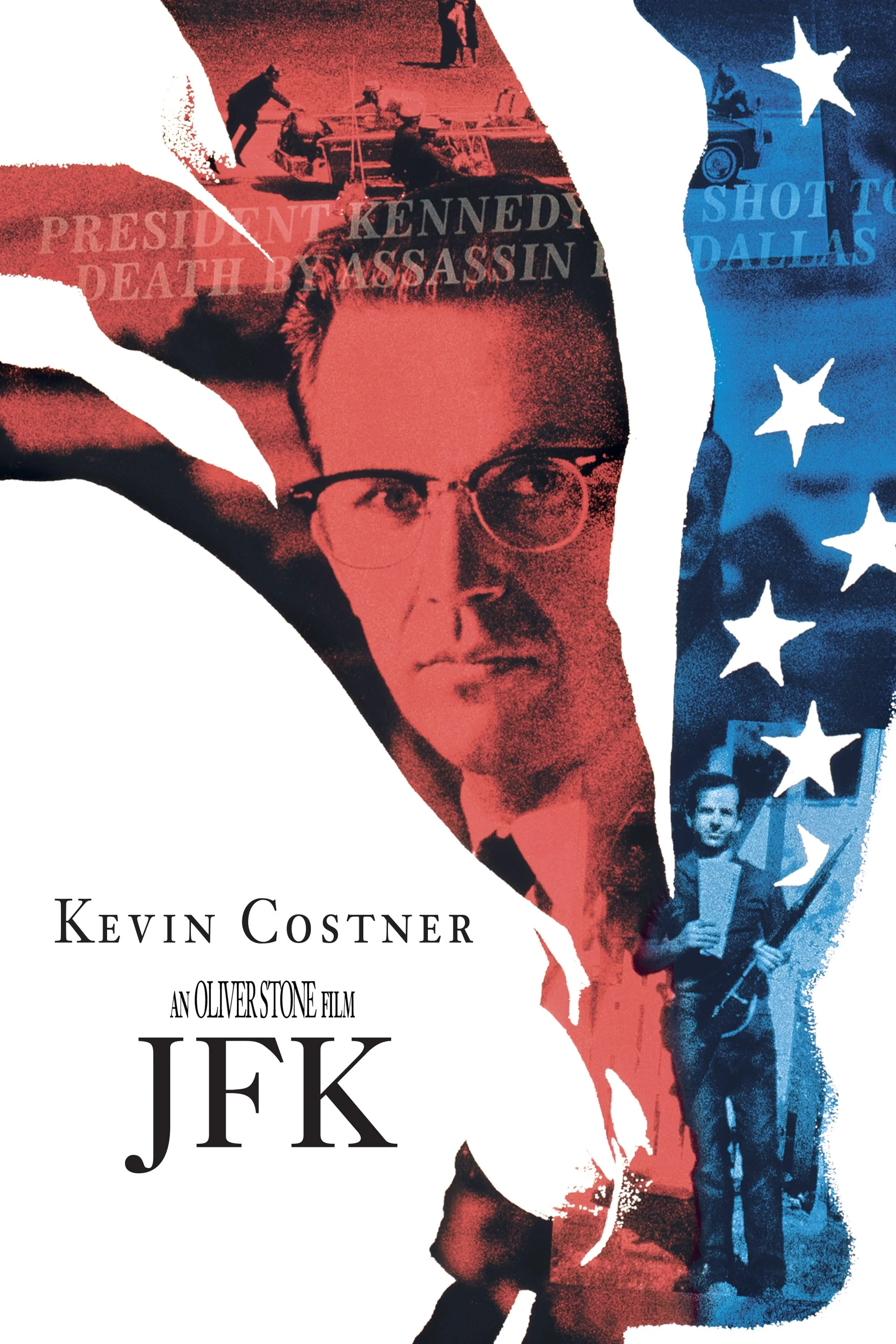 JFK is an incredible masterpiece, representing Oliver Stone's best. Outstanding are the acting,
storytelling, and, most of all, editing. The best moment is when Jim Garrison, after learning the real plot
from Donald Sutherland's character, summed up the startling discovery by saying, "The size of this is...beyond me."
JFK is an incredible masterpiece, representing Oliver Stone's best. Outstanding are the acting,
storytelling, and, most of all, editing. The best moment is when Jim Garrison, after learning the real plot
from Donald Sutherland's character, summed up the startling discovery by saying, "The size of this is...beyond me."
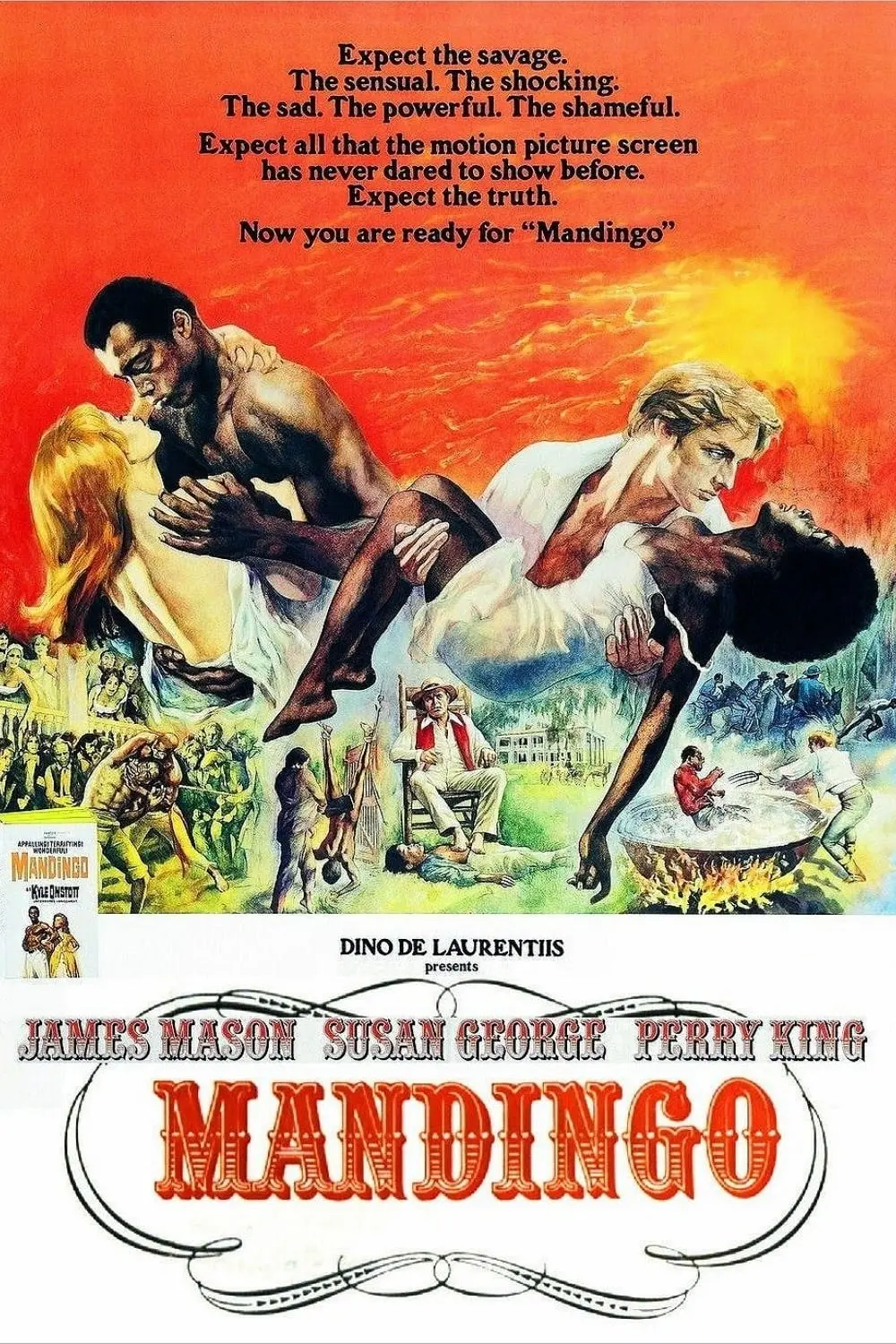 Mandingo is extremely raw and honest when it comes to slavery in the United States during the 19th
century, making Roots look like a puppy. On why he took on the project, director Richard Fleischer said,
"The whole slavery story has been lied about, covered up, and romanticized so much I thought it really had to
stop...the only way to stop was to be brutal as I could possibly be."
Mandingo is extremely raw and honest when it comes to slavery in the United States during the 19th
century, making Roots look like a puppy. On why he took on the project, director Richard Fleischer said,
"The whole slavery story has been lied about, covered up, and romanticized so much I thought it really had to
stop...the only way to stop was to be brutal as I could possibly be."
 It can't be any more dramatic than the scene when Tre yelled out to Ricky after the sight of the red Hyundai
Excel. Simply put, Boyz n the Hood is the game changer of the genre and sets the standard that all
black films are forever burdened to match. Of the ensemble cast, Ice Cube is unbeatable as Doughboy.
It can't be any more dramatic than the scene when Tre yelled out to Ricky after the sight of the red Hyundai
Excel. Simply put, Boyz n the Hood is the game changer of the genre and sets the standard that all
black films are forever burdened to match. Of the ensemble cast, Ice Cube is unbeatable as Doughboy.
 Sensually unusual, mysterious, and romantic, Como agua para chocolate, which is better known as
Like Water for Chocolate, has one of the best cinematography ever. It's a magical film. What a brilliant
direction by Alfonso Arau. Lumi Cavazos is perfect.
Sensually unusual, mysterious, and romantic, Como agua para chocolate, which is better known as
Like Water for Chocolate, has one of the best cinematography ever. It's a magical film. What a brilliant
direction by Alfonso Arau. Lumi Cavazos is perfect.
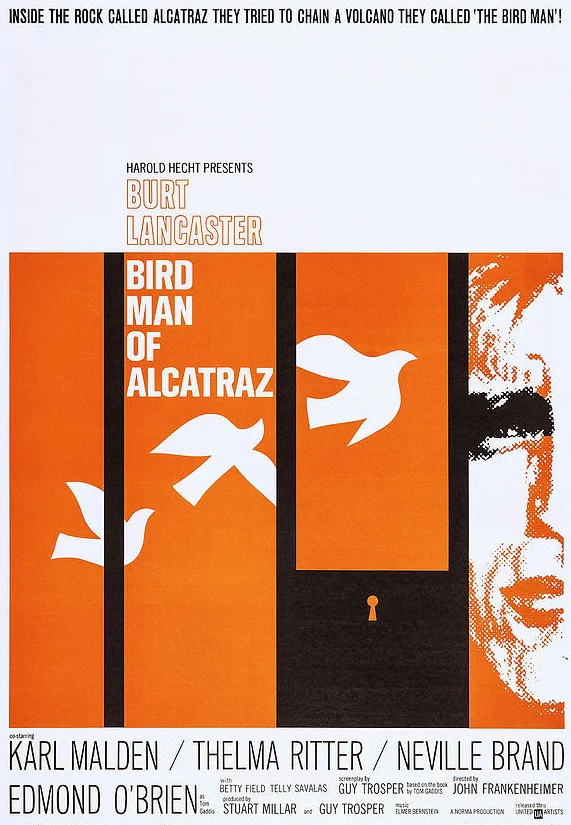 Burt Lancaster achieves a remarkable transformation of himself into Robert Stroud, a world-famous
ornithologist who's locked up in federal prisons most of his life. There's a lot to like about
Birdman of Alcatraz: the direction, the black-and-white cinematography, the screenplay, and the
supporting performances. Altogether, it's very difficult to stop the movie.
Burt Lancaster achieves a remarkable transformation of himself into Robert Stroud, a world-famous
ornithologist who's locked up in federal prisons most of his life. There's a lot to like about
Birdman of Alcatraz: the direction, the black-and-white cinematography, the screenplay, and the
supporting performances. Altogether, it's very difficult to stop the movie.
 How subtly swept away is Cary by the sight of Ron. She falls for him, and oh, my...how the town talks afterwards.
A Douglas Sirk classic, All That Heaven Allows presents one of the best cinematography ever. The
on-screen mix of contrasting colors is beautiful.
How subtly swept away is Cary by the sight of Ron. She falls for him, and oh, my...how the town talks afterwards.
A Douglas Sirk classic, All That Heaven Allows presents one of the best cinematography ever. The
on-screen mix of contrasting colors is beautiful.
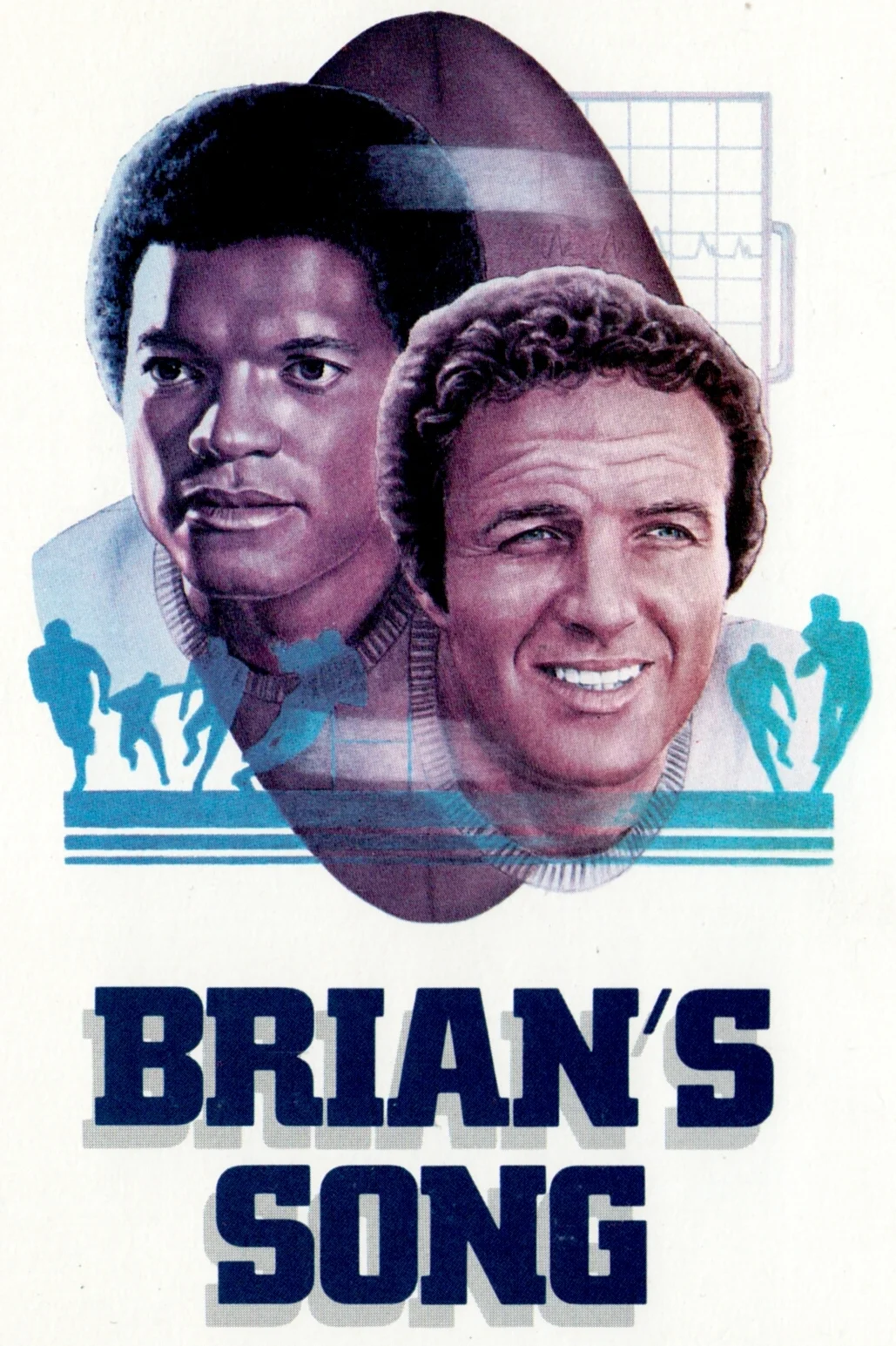 James Caan and Billy Dee Williams...they're unforgettable in Brian's Song which is among the greatest,
most powerful movies ever made. It's also one of the saddest, proving that a made-for-TV picture with a simple
moving story is infinitely better than a pointless violent film with an overblown budget.
James Caan and Billy Dee Williams...they're unforgettable in Brian's Song which is among the greatest,
most powerful movies ever made. It's also one of the saddest, proving that a made-for-TV picture with a simple
moving story is infinitely better than a pointless violent film with an overblown budget.
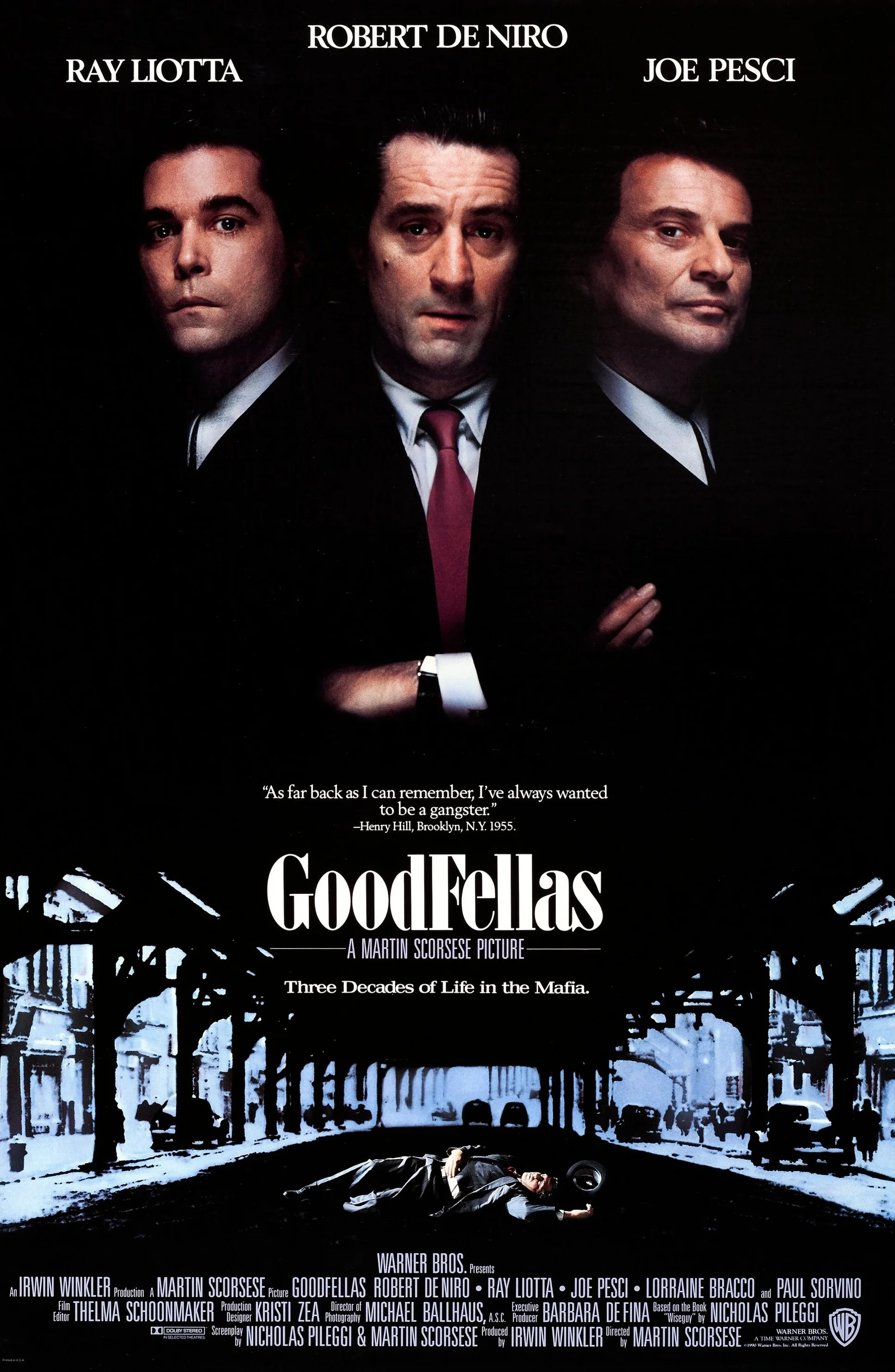 Without doubt, Goodfellas is the hardest-hitting Mafia picture made. There's nothing like it. The first
two minutes, complemented by Saul Bass' titles, is what sets the tone for the rest of the film. In order to
get Goodfellas made, Martin Scorsese called Nicholas Pileggi, the author of Wiseguy, to say,
"I've been waiting for this book my entire life," which was met with "I've been waiting for this phone call
my entire life."
Without doubt, Goodfellas is the hardest-hitting Mafia picture made. There's nothing like it. The first
two minutes, complemented by Saul Bass' titles, is what sets the tone for the rest of the film. In order to
get Goodfellas made, Martin Scorsese called Nicholas Pileggi, the author of Wiseguy, to say,
"I've been waiting for this book my entire life," which was met with "I've been waiting for this phone call
my entire life."
 If the wunderkind said, "My name is Orson Welles. I invented the word 'genius' and defined it," I would've
believed him. One of the fastest-paced pictures, The Lady from Shanghai is that good and twisting.
The most famous scene is the Hall of Mirrors which is something to behold. There's nothing like it. Once
again, that's the genius of Orson Welles.
If the wunderkind said, "My name is Orson Welles. I invented the word 'genius' and defined it," I would've
believed him. One of the fastest-paced pictures, The Lady from Shanghai is that good and twisting.
The most famous scene is the Hall of Mirrors which is something to behold. There's nothing like it. Once
again, that's the genius of Orson Welles.
 Magical and infinitely interesting, Close Encounters of the Third Kind shows why Steven Spielberg is
the greatest director ever lived. He made a lot of masterpieces, and this is one of them. It's hard not to
be impressed. Douglas Trumbull, the visual effects man, came over from 2001: A Space Odyssey to help out.
Magical and infinitely interesting, Close Encounters of the Third Kind shows why Steven Spielberg is
the greatest director ever lived. He made a lot of masterpieces, and this is one of them. It's hard not to
be impressed. Douglas Trumbull, the visual effects man, came over from 2001: A Space Odyssey to help out.
 "What an excellent day for an exorcism." Famous for many reasons, The Exorcist is one of the finest
horror films ever made. Linda Blair's transformation is something else to behold. Her character is so scary
that she's effective. Who can forget the taxi stop for Father Lankester Merrin in front of the house?
"What an excellent day for an exorcism." Famous for many reasons, The Exorcist is one of the finest
horror films ever made. Linda Blair's transformation is something else to behold. Her character is so scary
that she's effective. Who can forget the taxi stop for Father Lankester Merrin in front of the house?
 Because of its willingness to tackle racial intermarriage, Guess Who's Coming to Dinner is one of the
most powerful films made. It's the final performance of Spencer Tracy's career before passing away in mere
days afterwards. The discussions carried by the characters are so interesting that it's hard not to be fascinated.
Because of its willingness to tackle racial intermarriage, Guess Who's Coming to Dinner is one of the
most powerful films made. It's the final performance of Spencer Tracy's career before passing away in mere
days afterwards. The discussions carried by the characters are so interesting that it's hard not to be fascinated.
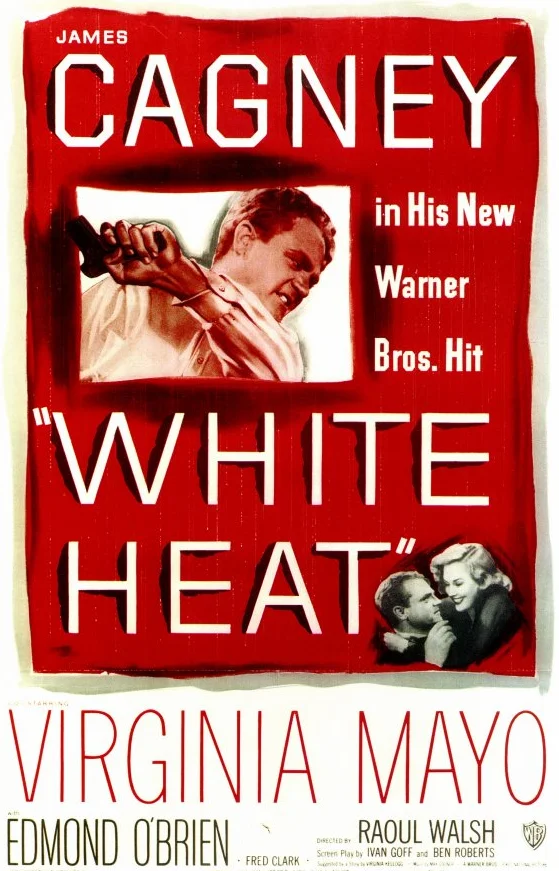 Powerful and mesmerizing, James Cagney gives the best performance of his career. His "Made it, Ma! Top of
the world!" scene in White Heat is among the all-time greatest endings. James Cagney's spontaneous
reaction after finding out what happened to his character's mother is another famous scene.
Powerful and mesmerizing, James Cagney gives the best performance of his career. His "Made it, Ma! Top of
the world!" scene in White Heat is among the all-time greatest endings. James Cagney's spontaneous
reaction after finding out what happened to his character's mother is another famous scene.
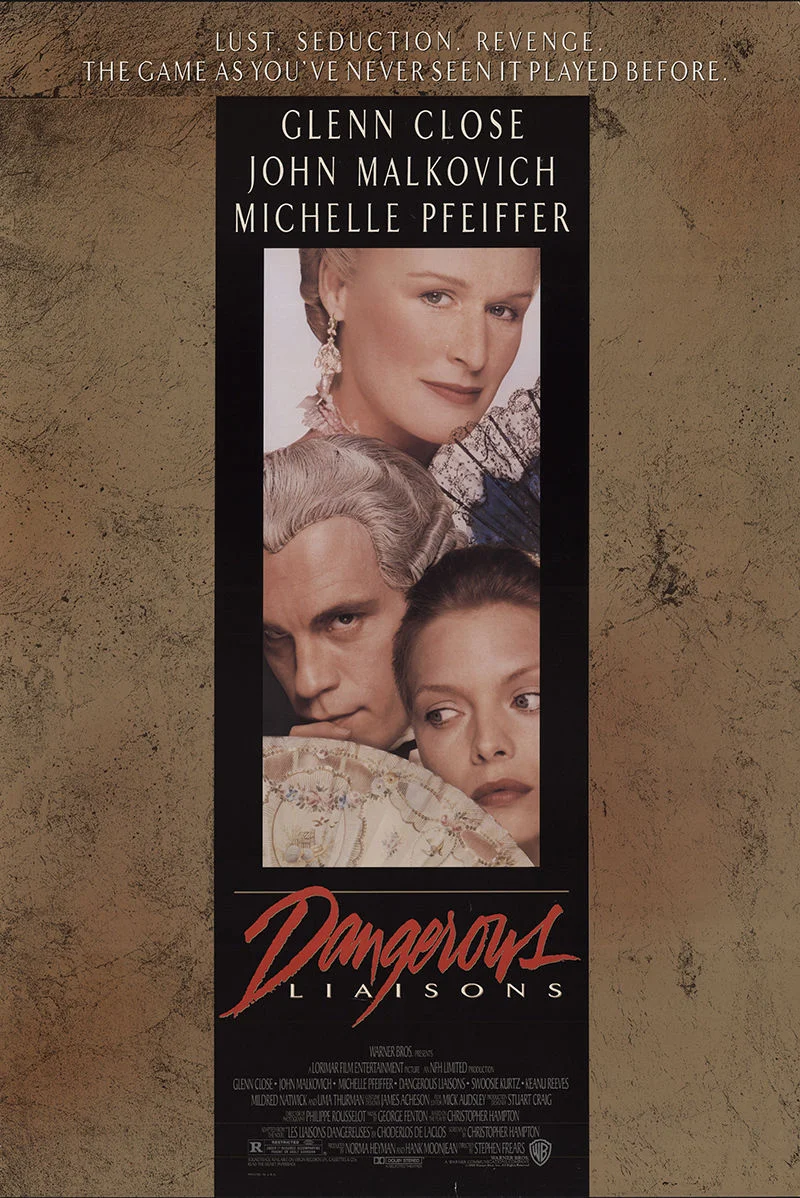 The screenplay is among the top ten ever. Listening to the dialogue has been a satisfying experience, so
that's why Christopher Hampton won the Oscar for Best Adapted Screenplay. Also, the costume design and the
in/exterior sets are excellent, scoring Oscar wins in both categories. John Malkovich, the star of the show,
is Vicomte de Valmont. He has never been this so deliciously bad.
The screenplay is among the top ten ever. Listening to the dialogue has been a satisfying experience, so
that's why Christopher Hampton won the Oscar for Best Adapted Screenplay. Also, the costume design and the
in/exterior sets are excellent, scoring Oscar wins in both categories. John Malkovich, the star of the show,
is Vicomte de Valmont. He has never been this so deliciously bad.
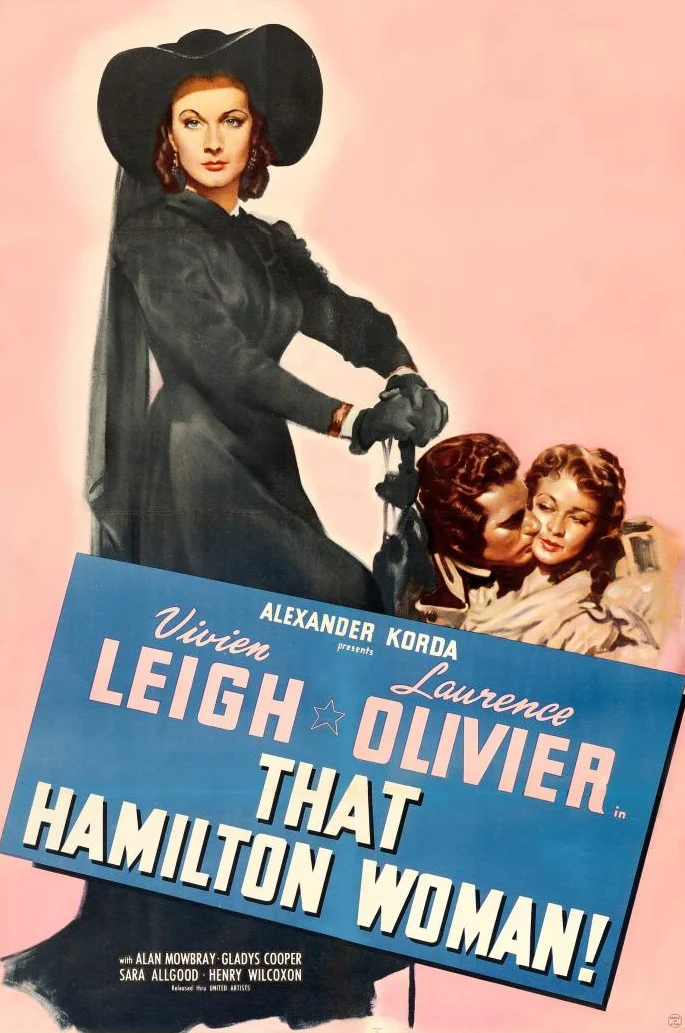 Reportedly, That Hamilton Woman is Winston Churchill's favorite film, having seen it over eighty times.
It's not hard to see why. This is an excellent film that's about overcoming adversity to rouse British (and
possibly American) support to enter WWII and showcases the very best of Laurence Olivier's and Vivien Leigh's
talents in their third and final collaboration.
Reportedly, That Hamilton Woman is Winston Churchill's favorite film, having seen it over eighty times.
It's not hard to see why. This is an excellent film that's about overcoming adversity to rouse British (and
possibly American) support to enter WWII and showcases the very best of Laurence Olivier's and Vivien Leigh's
talents in their third and final collaboration.
 "Ladies and gentlemen, direct from Hell, Spinal Tap!!" Genius is written all over this film, one of the
funniest ever. Christopher Guest, Michael McKean, and Harry Shearer are brilliant. Many viewers thought the
English band was real, and they got fooled big time. That's how convincing these actors were. To think of
the movie is to think of the timeless quotes and scenes.
"Ladies and gentlemen, direct from Hell, Spinal Tap!!" Genius is written all over this film, one of the
funniest ever. Christopher Guest, Michael McKean, and Harry Shearer are brilliant. Many viewers thought the
English band was real, and they got fooled big time. That's how convincing these actors were. To think of
the movie is to think of the timeless quotes and scenes.
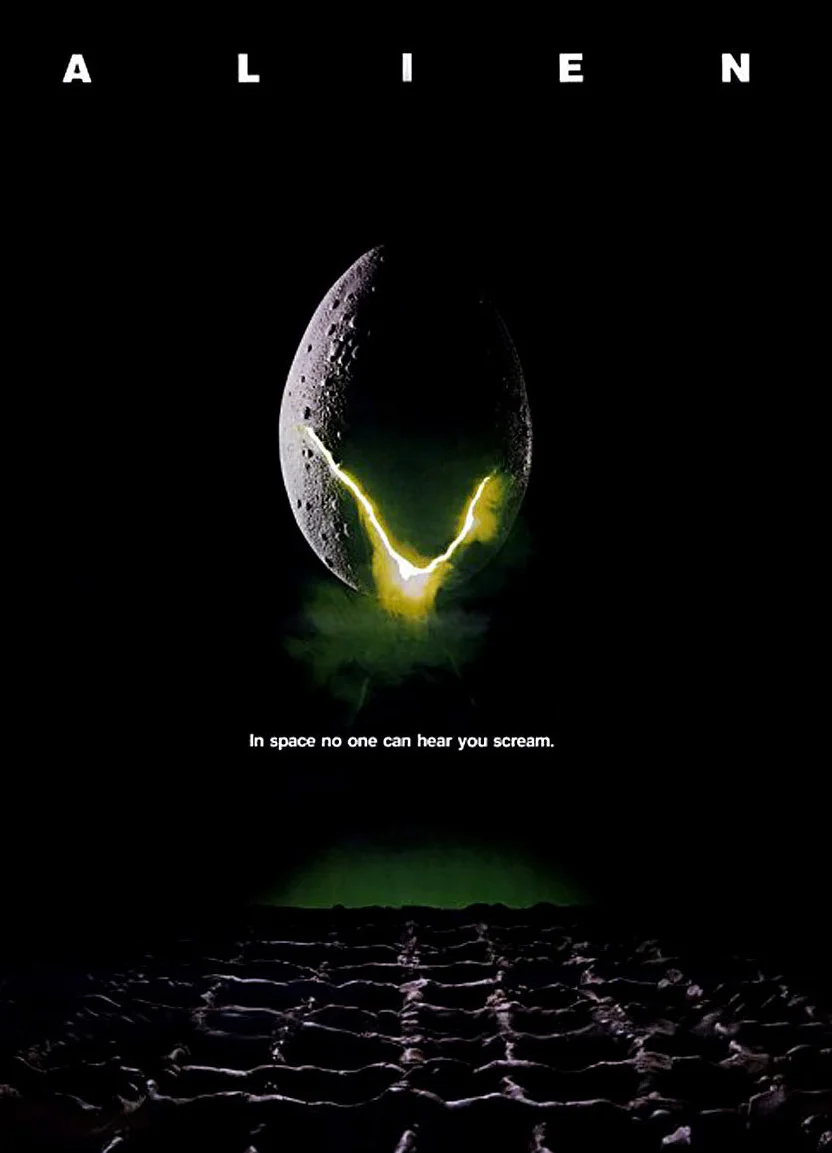 For the first time ever in cinema history, Signourney Weaver becomes an ultimate female hero when she goes
against the monster. It's the role that will define her career. Oftentimes, monsters either look corny or
ridiculous, but in Alien, the Xenomorph is the most impressive thing ever shown, creating the gold
standard that'll have to be matched from there on.
For the first time ever in cinema history, Signourney Weaver becomes an ultimate female hero when she goes
against the monster. It's the role that will define her career. Oftentimes, monsters either look corny or
ridiculous, but in Alien, the Xenomorph is the most impressive thing ever shown, creating the gold
standard that'll have to be matched from there on.
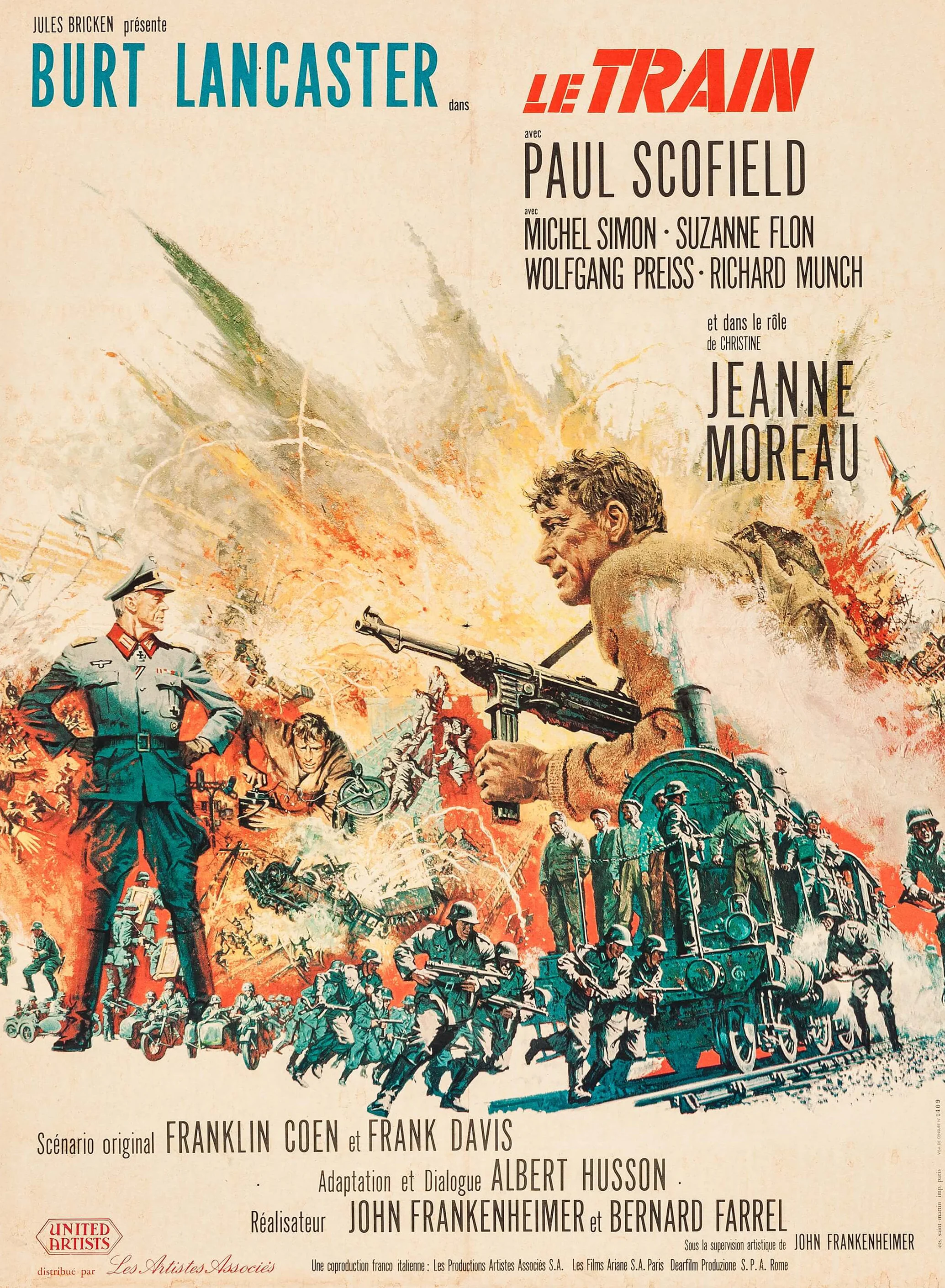 Chalk up The Train as one of the most exciting WWII pictures. Nothing beats the sight of Burt Lancaster
in action. He going down the ladder quickly, jumping off the train while it's in motion, running across the
bridge, and getting through the mountain range with a injured leg are some of the film's highest points. Also,
it has some great aerial shots, especially when the railyard is bombed.
Chalk up The Train as one of the most exciting WWII pictures. Nothing beats the sight of Burt Lancaster
in action. He going down the ladder quickly, jumping off the train while it's in motion, running across the
bridge, and getting through the mountain range with a injured leg are some of the film's highest points. Also,
it has some great aerial shots, especially when the railyard is bombed.
 If you want to see the best haunted house movie made, then make it Burnt Offerings. Karen Black is the
show while Oliver Reed is magnificent. The final ten minutes is the very definition of the phrase: "The
suspense is killing me." Because of the shocking ending, you'll go, "Damn," and then watch the movie all
over again.
If you want to see the best haunted house movie made, then make it Burnt Offerings. Karen Black is the
show while Oliver Reed is magnificent. The final ten minutes is the very definition of the phrase: "The
suspense is killing me." Because of the shocking ending, you'll go, "Damn," and then watch the movie all
over again.
 9½ Weeks is a cinematic masterpiece of unbridled romance, sex, and feelings only to be undone
by a complicated series of basic human needs. That's why Zalman King was the high priest of erotic filmmaking.
Kim Basinger has never acted this well in her entire career while Mickey Rourke is mesmerizing. Simply put,
it's the number one erotic picture ever made.
9½ Weeks is a cinematic masterpiece of unbridled romance, sex, and feelings only to be undone
by a complicated series of basic human needs. That's why Zalman King was the high priest of erotic filmmaking.
Kim Basinger has never acted this well in her entire career while Mickey Rourke is mesmerizing. Simply put,
it's the number one erotic picture ever made.
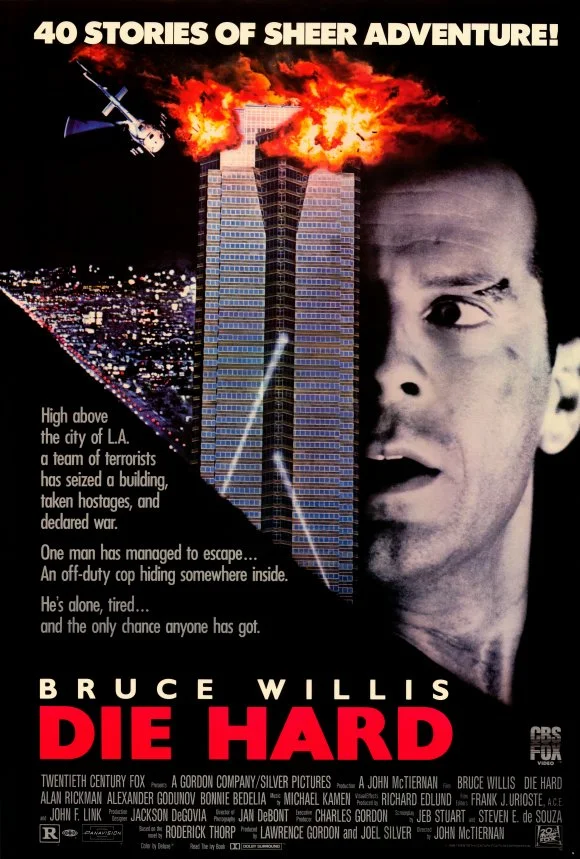 What's great about Die Hard is how real John McClane is and, even better, how direct Hans Gruber is.
Unlike most action-adventure movies, it's a thrill machine that never lets down from start to finish. The
script is well-done, and the special effects extravaganza intensifies the viewing experience even more.
What's great about Die Hard is how real John McClane is and, even better, how direct Hans Gruber is.
Unlike most action-adventure movies, it's a thrill machine that never lets down from start to finish. The
script is well-done, and the special effects extravaganza intensifies the viewing experience even more.
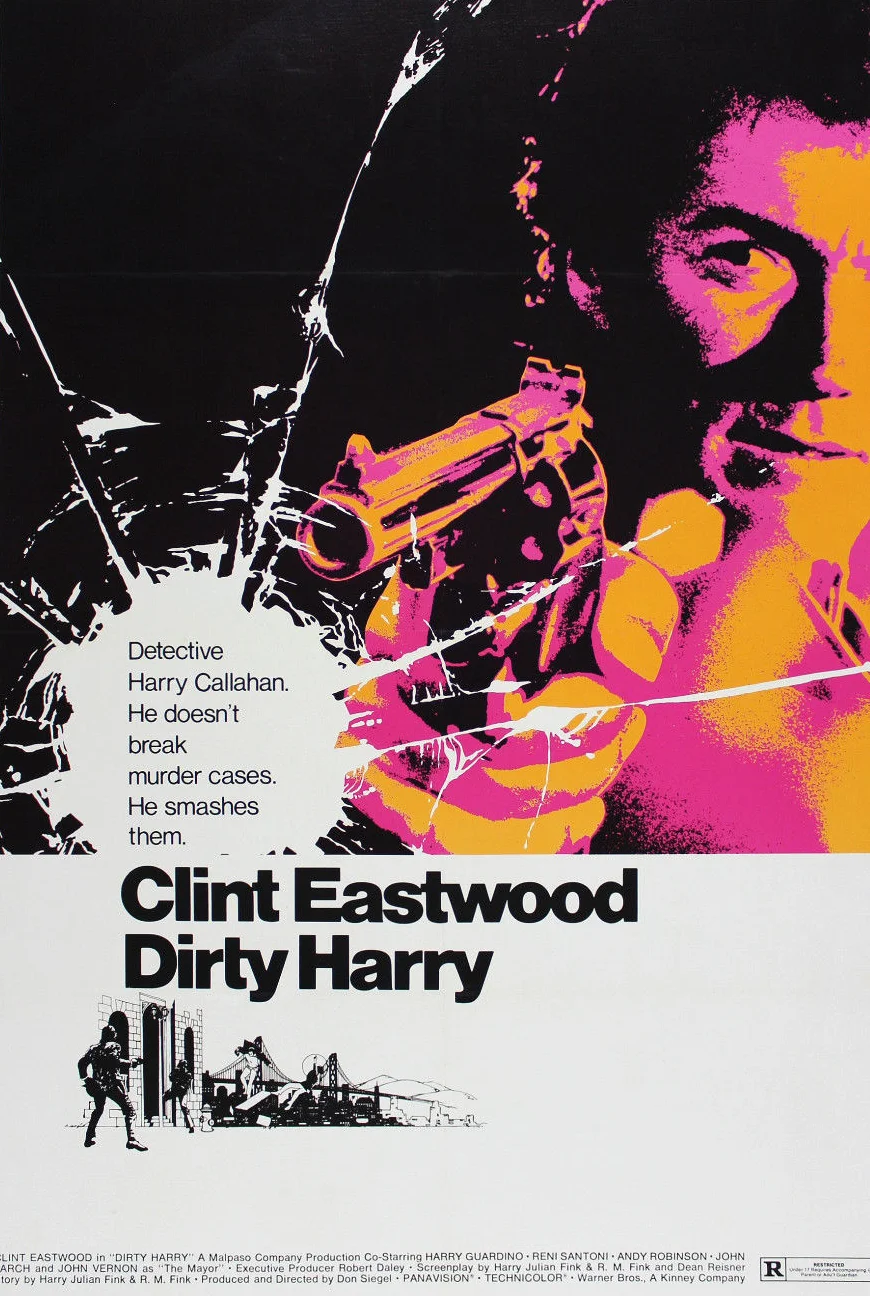 Dirty Harry is an absolute first-rate picture, and there's no better character than Dirty Harry
Callahan in the history of cop movies. Two men, an inspector and a killer who are polarizing figures, go
against each other in a game of intrigue. Andy Robinson's Scorpio is among the greatest villains ever. Not
to miss is the legendary scene of Dirty Harry giving his speech.
Dirty Harry is an absolute first-rate picture, and there's no better character than Dirty Harry
Callahan in the history of cop movies. Two men, an inspector and a killer who are polarizing figures, go
against each other in a game of intrigue. Andy Robinson's Scorpio is among the greatest villains ever. Not
to miss is the legendary scene of Dirty Harry giving his speech.
 "Yeah. I killed my mama." In response to "How about those Bears?", Henry nonchantly says, "Fuck the Bears." Shot
in 28 days under a budget of $110,000, Henry: Portrait of a Serial Killer is bar none the best in the
serial killer genre. No other film comes this close. This is Michael Rooker at his chilling best. What a
performance for him which is clearly off the charts.
"Yeah. I killed my mama." In response to "How about those Bears?", Henry nonchantly says, "Fuck the Bears." Shot
in 28 days under a budget of $110,000, Henry: Portrait of a Serial Killer is bar none the best in the
serial killer genre. No other film comes this close. This is Michael Rooker at his chilling best. What a
performance for him which is clearly off the charts.
 In comparison with other children's films, nothing beats The Goonies. Unparalleled are the acting,
dialogue, sense of humor, premise, fantasy, creativity, comedy, and action-adventure. Of the child stars,
Corey Feldman does an exceptional job. As for the rest of the cast, they're natural. The Goonies has it
all that you can possibly want in a children's film.
In comparison with other children's films, nothing beats The Goonies. Unparalleled are the acting,
dialogue, sense of humor, premise, fantasy, creativity, comedy, and action-adventure. Of the child stars,
Corey Feldman does an exceptional job. As for the rest of the cast, they're natural. The Goonies has it
all that you can possibly want in a children's film.
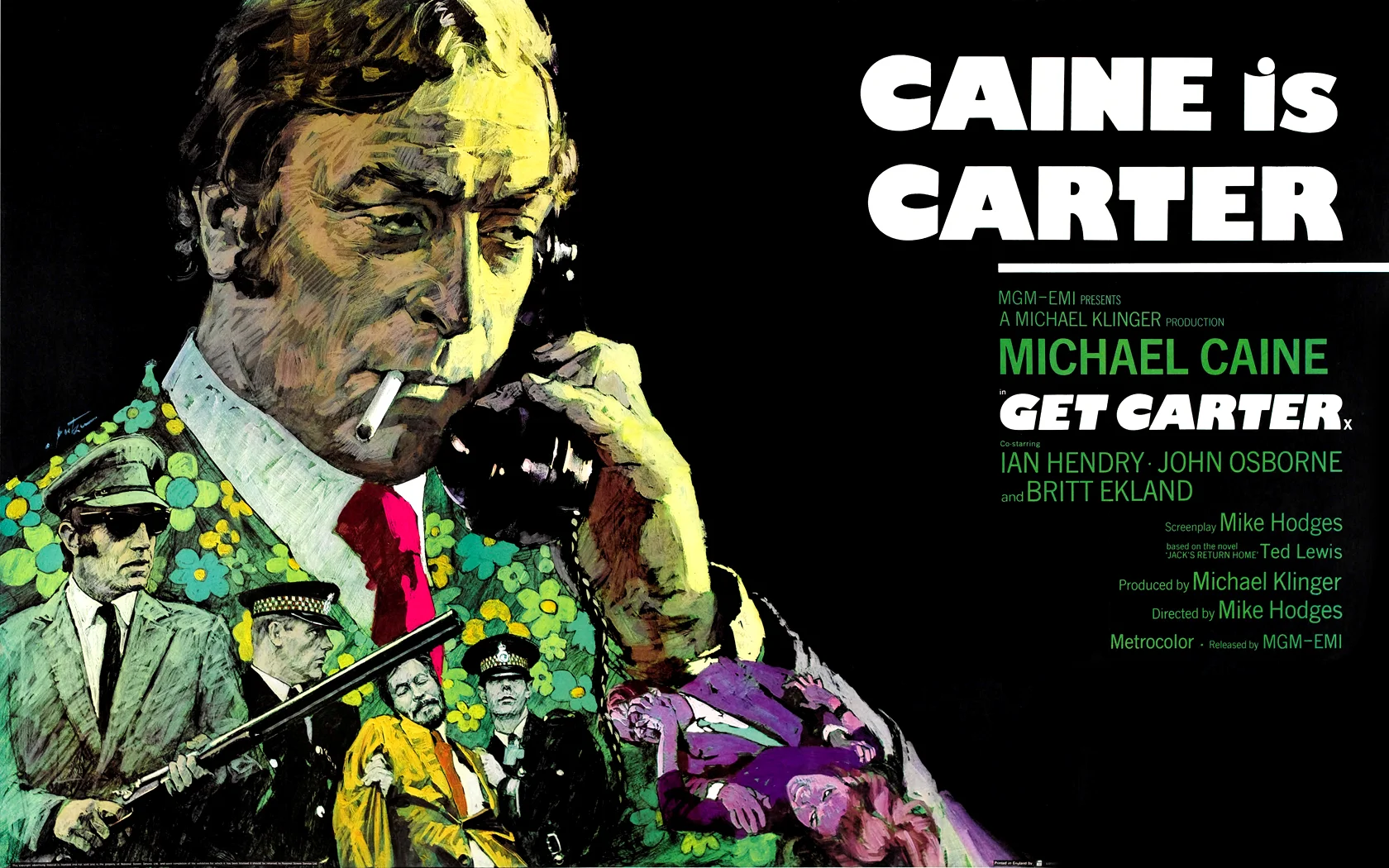 A brutal British gangster masterpiece, Get Carter is that good and clever. The reason why it's so is
that when the characters are introduced at the beginning of the film, little do I know they'll play an important
role in the murder mystery. It's just that the plot takes time to thicken and...oh, how it thickens. This is
Michael Caine at his finest.
A brutal British gangster masterpiece, Get Carter is that good and clever. The reason why it's so is
that when the characters are introduced at the beginning of the film, little do I know they'll play an important
role in the murder mystery. It's just that the plot takes time to thicken and...oh, how it thickens. This is
Michael Caine at his finest.